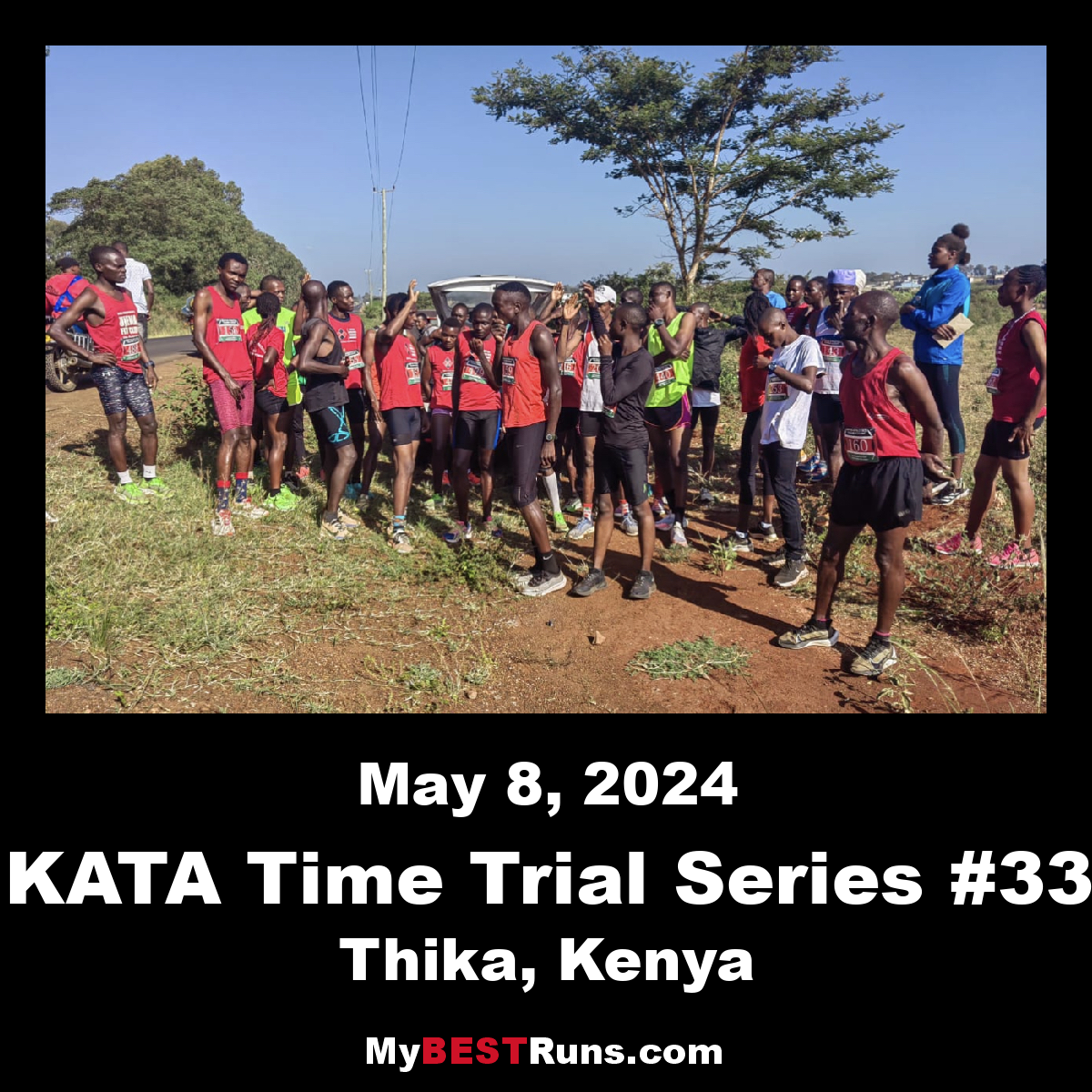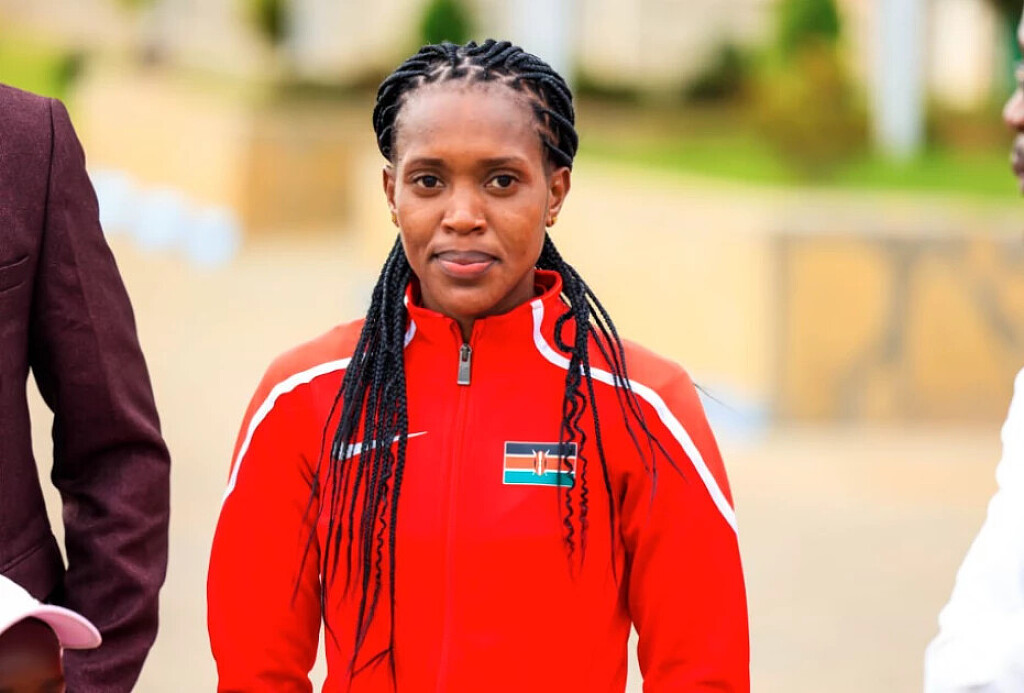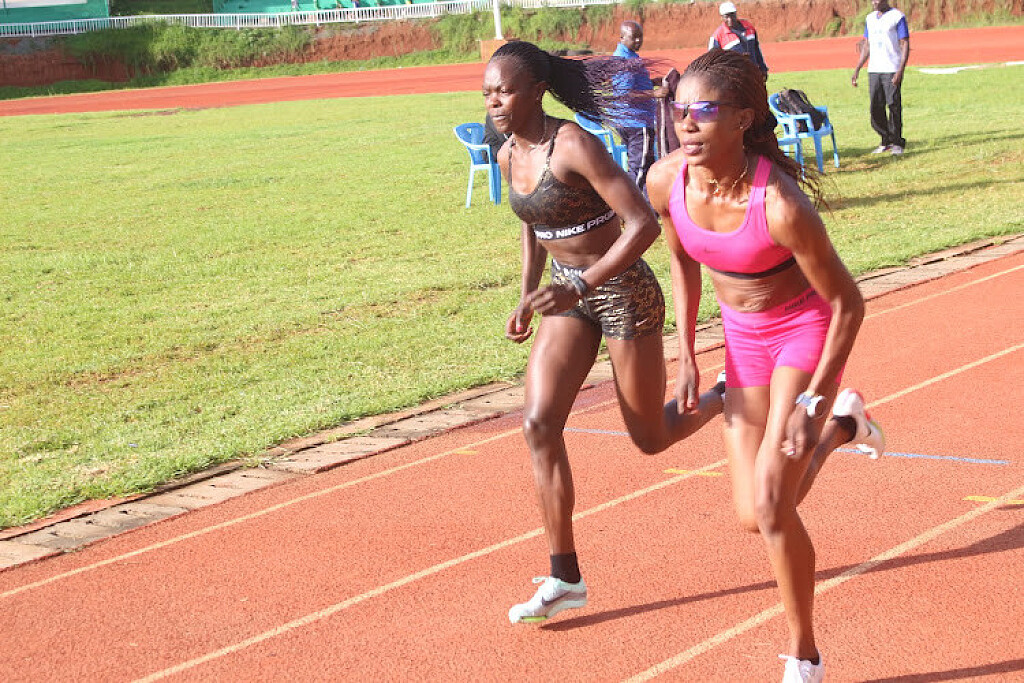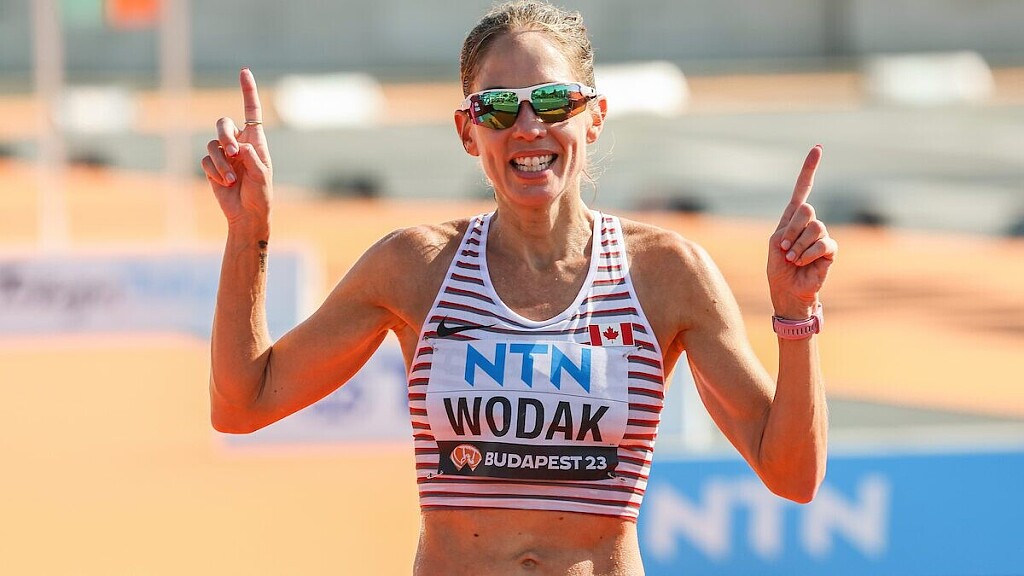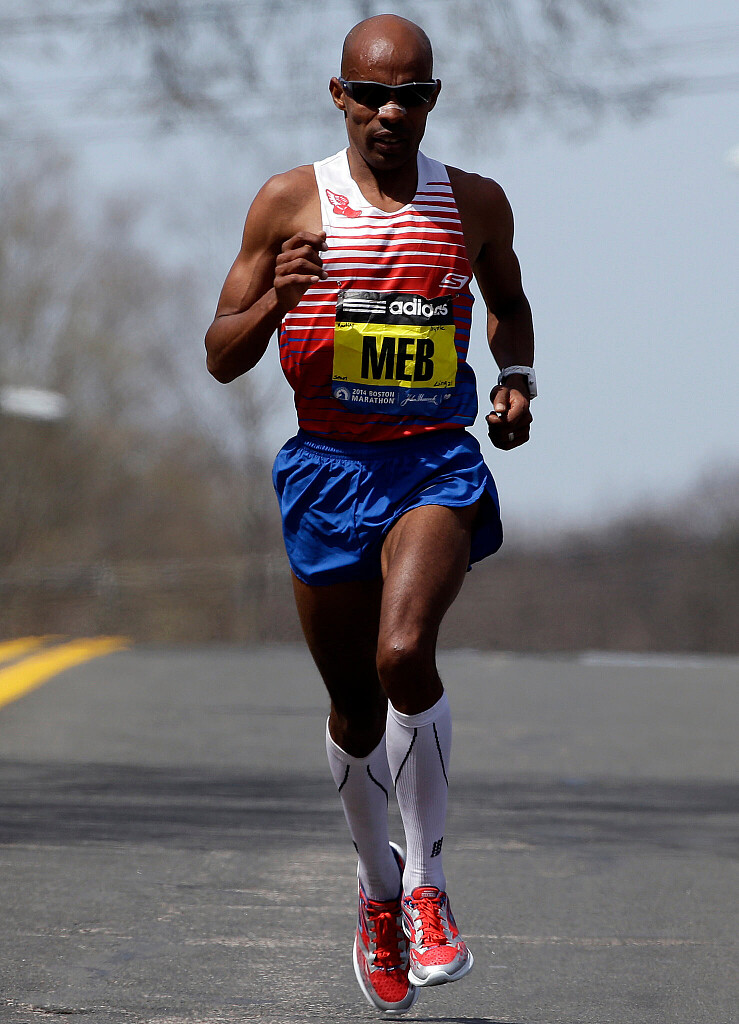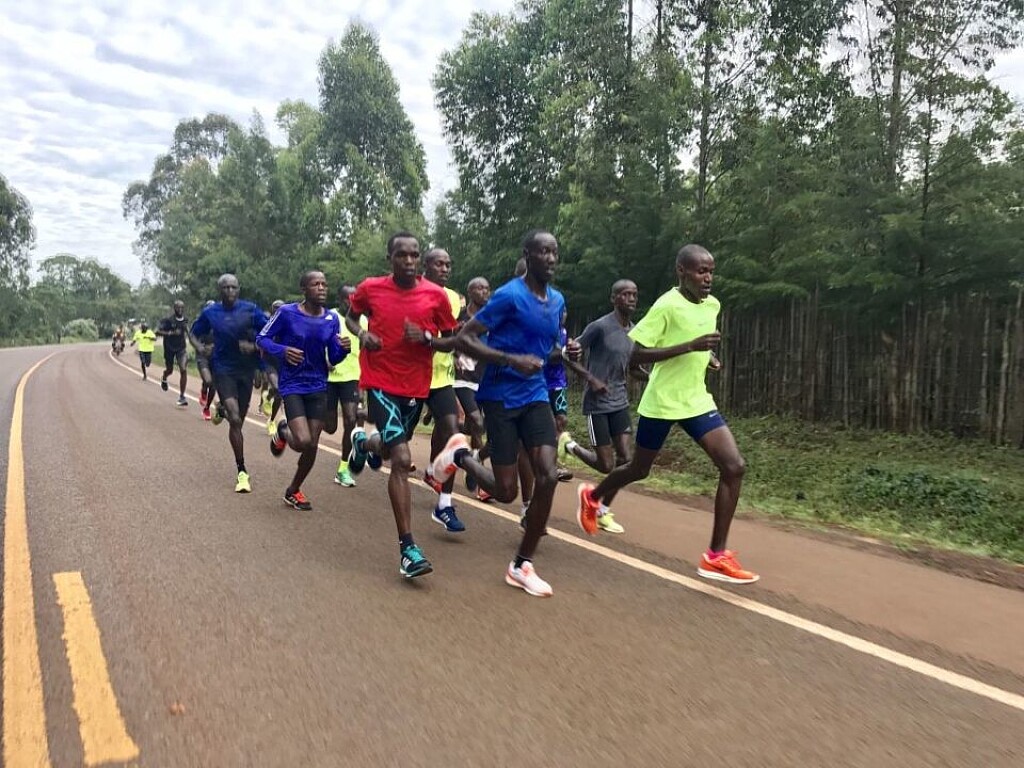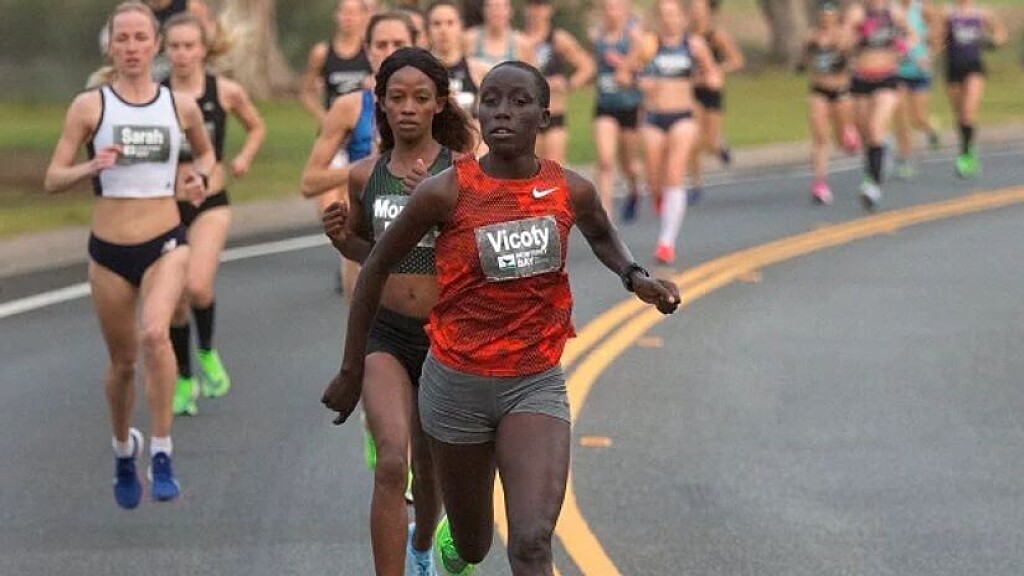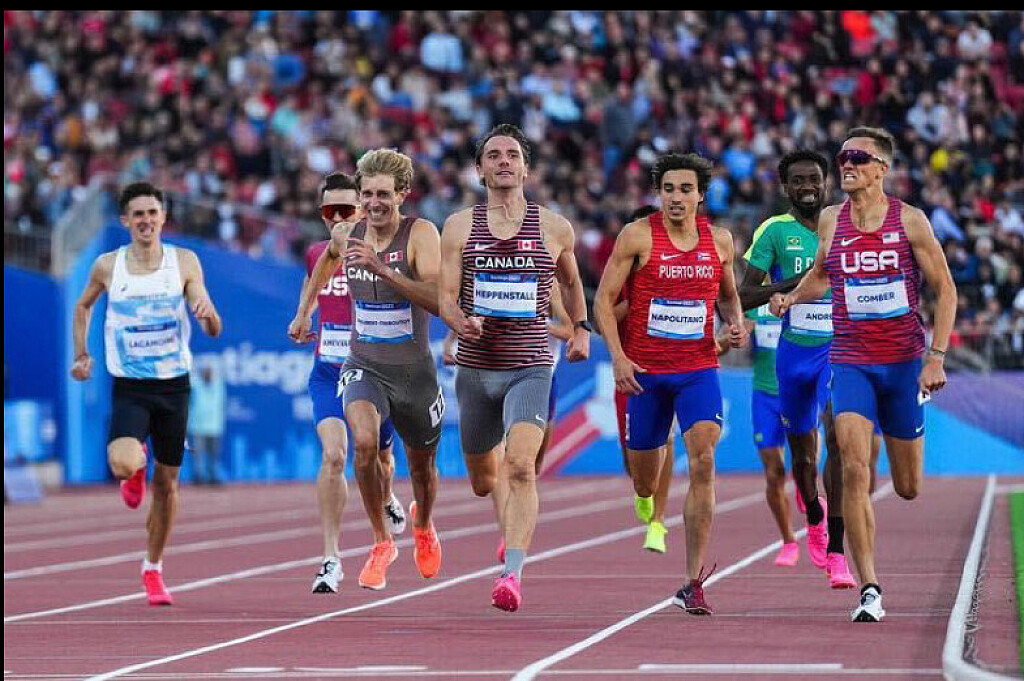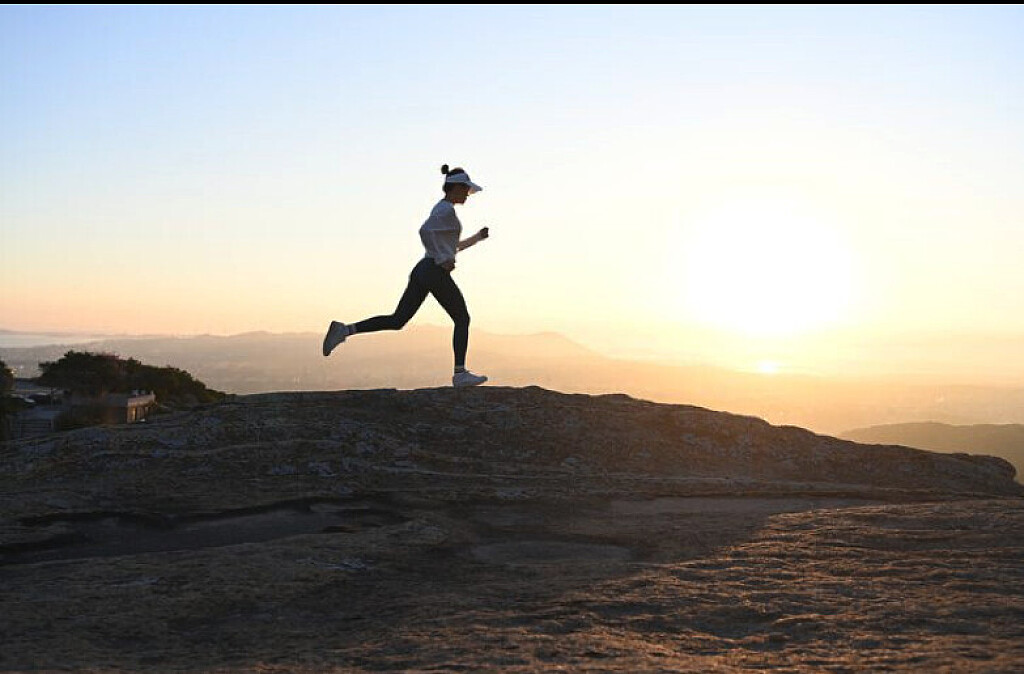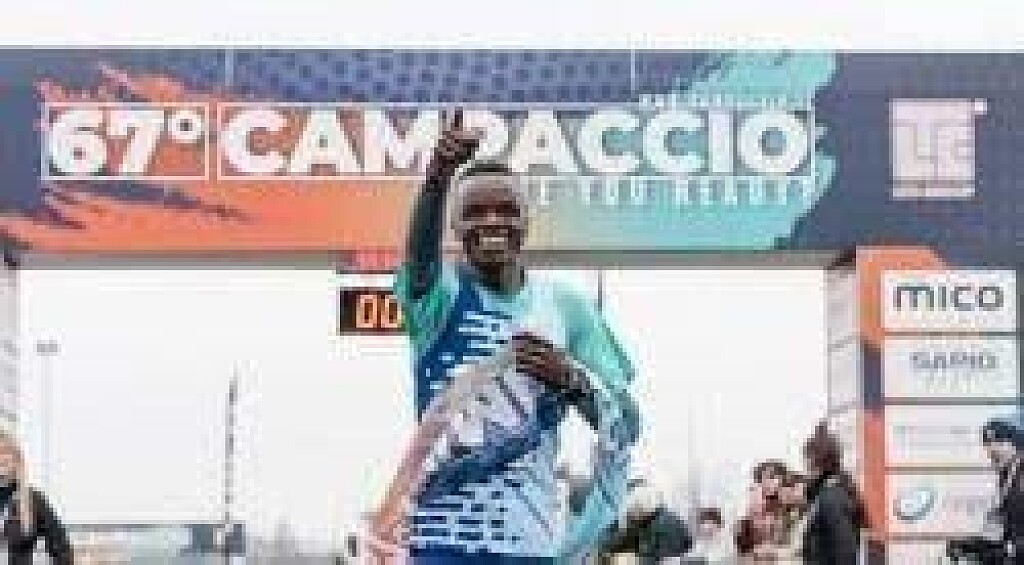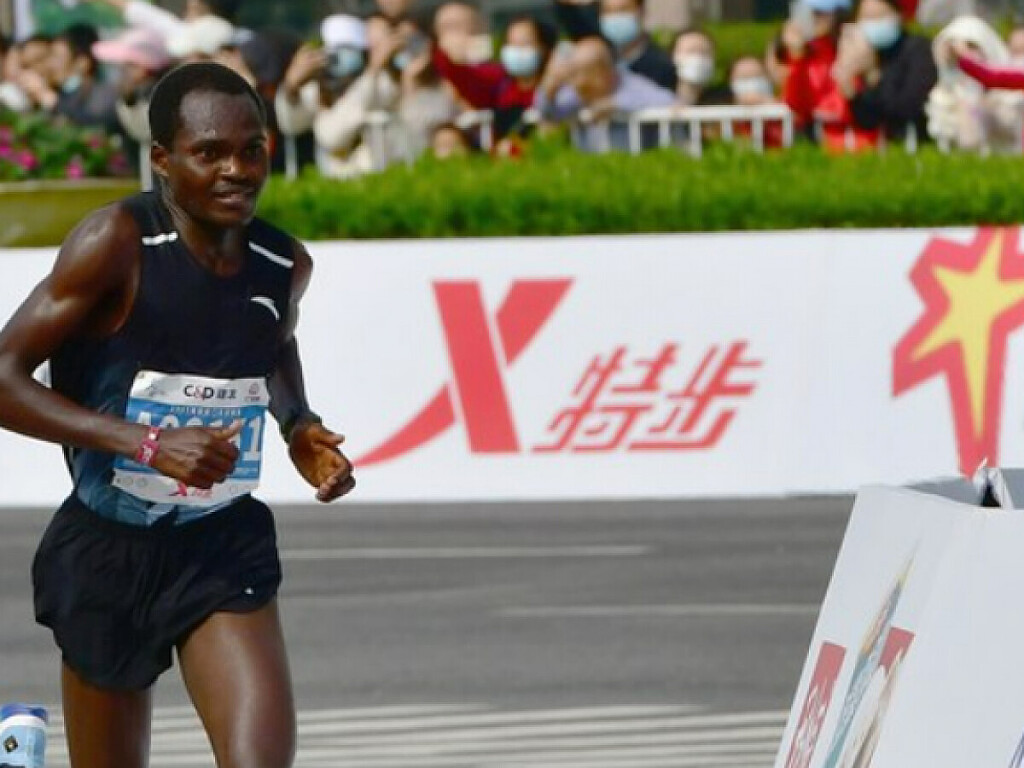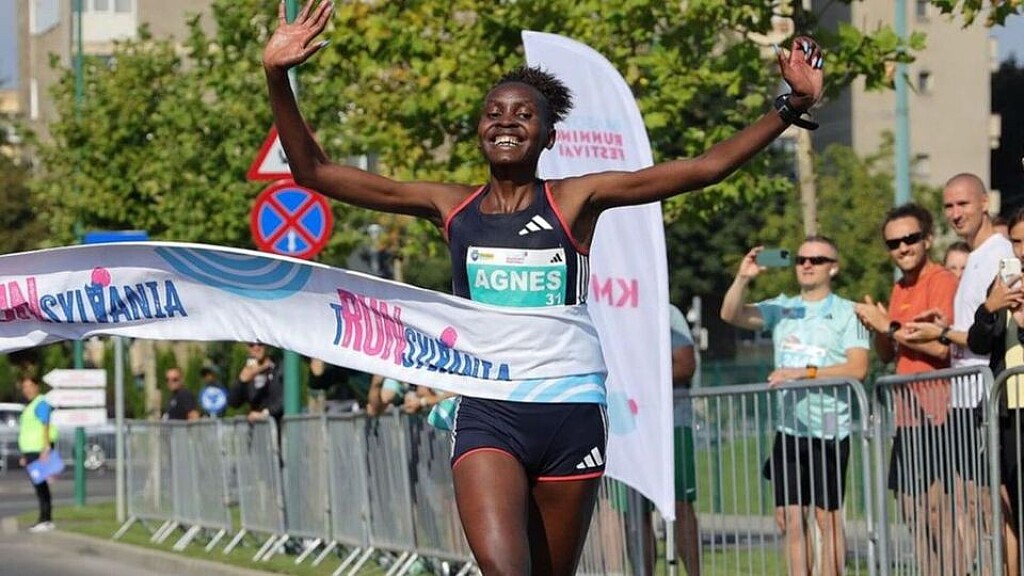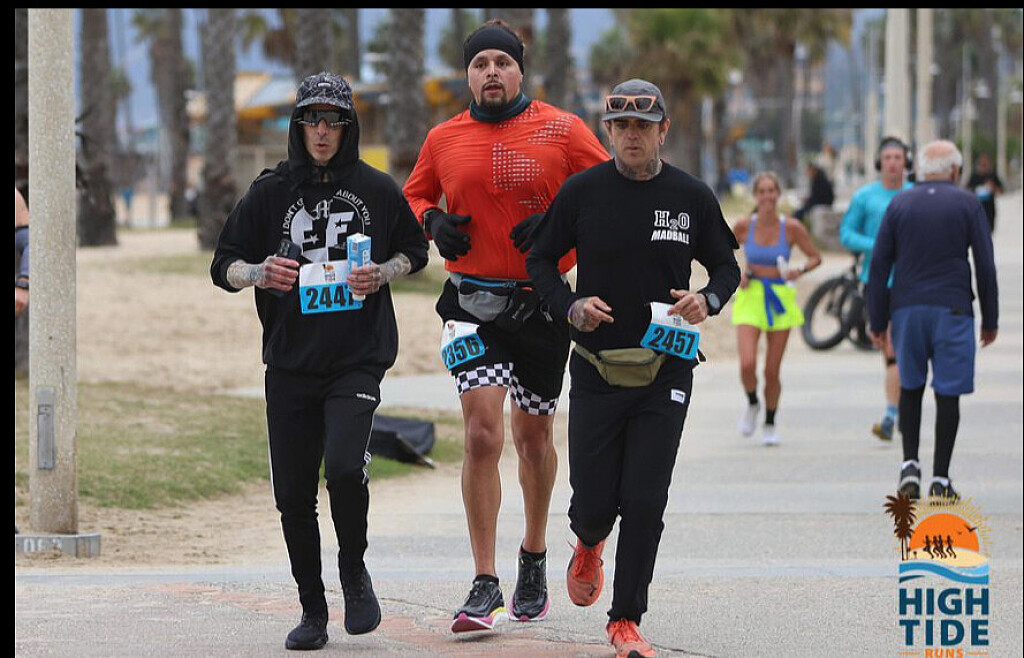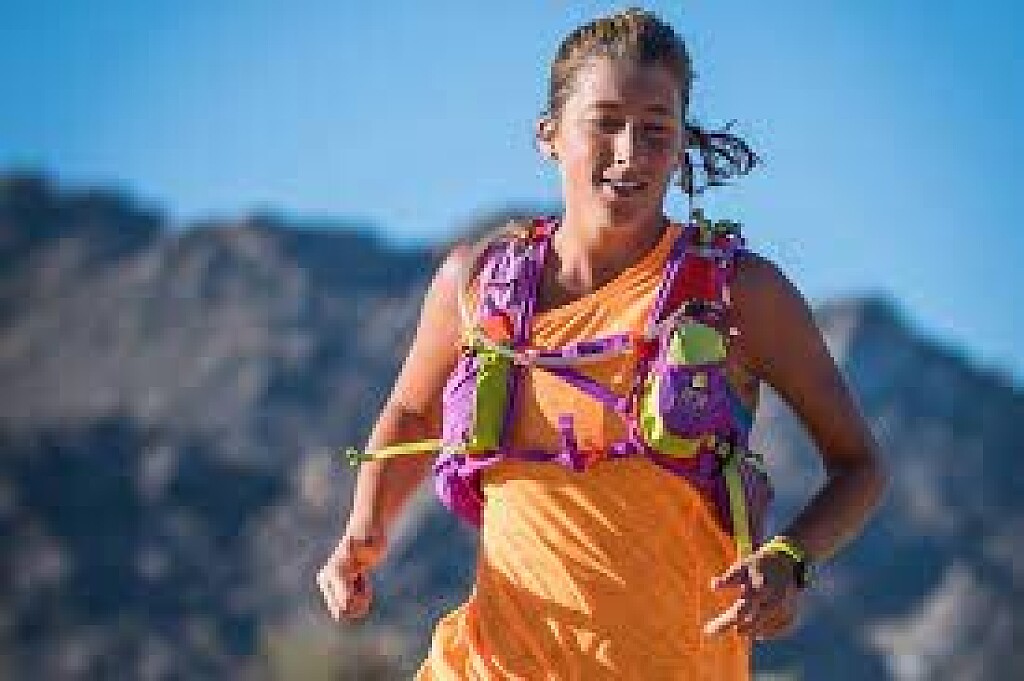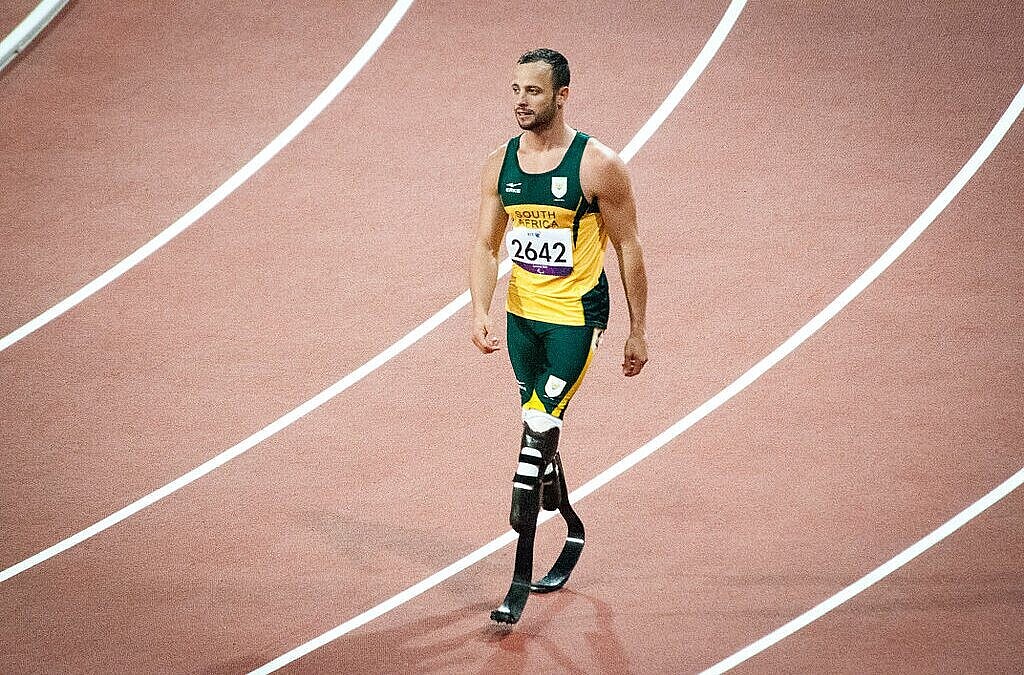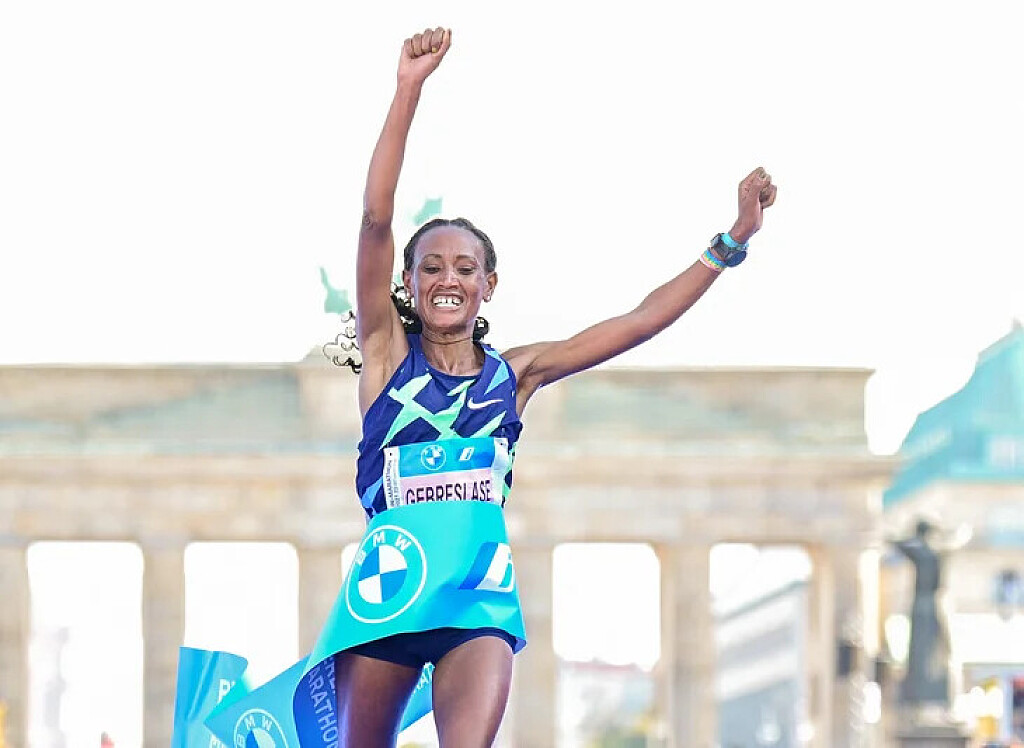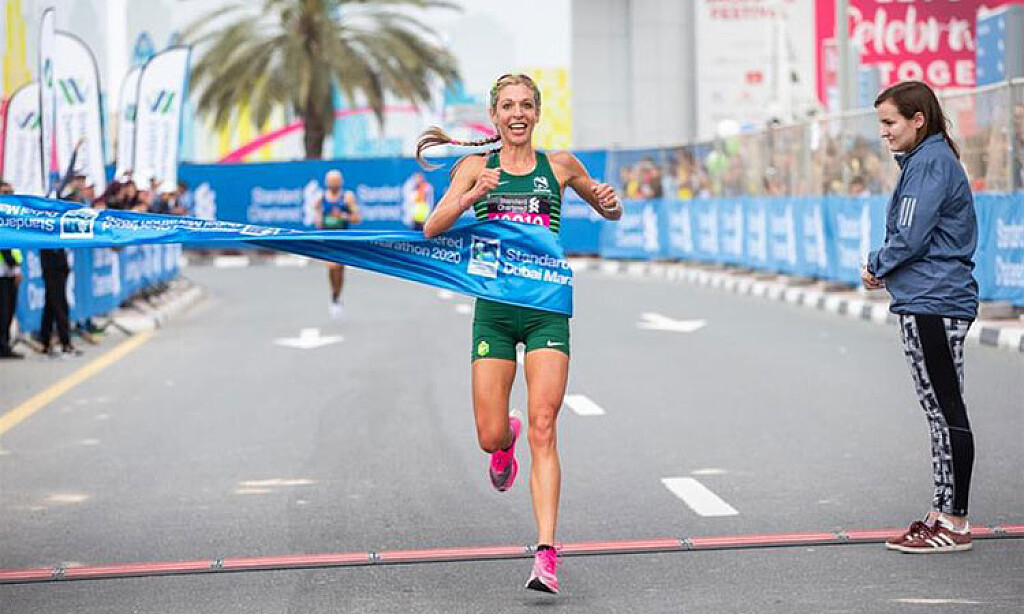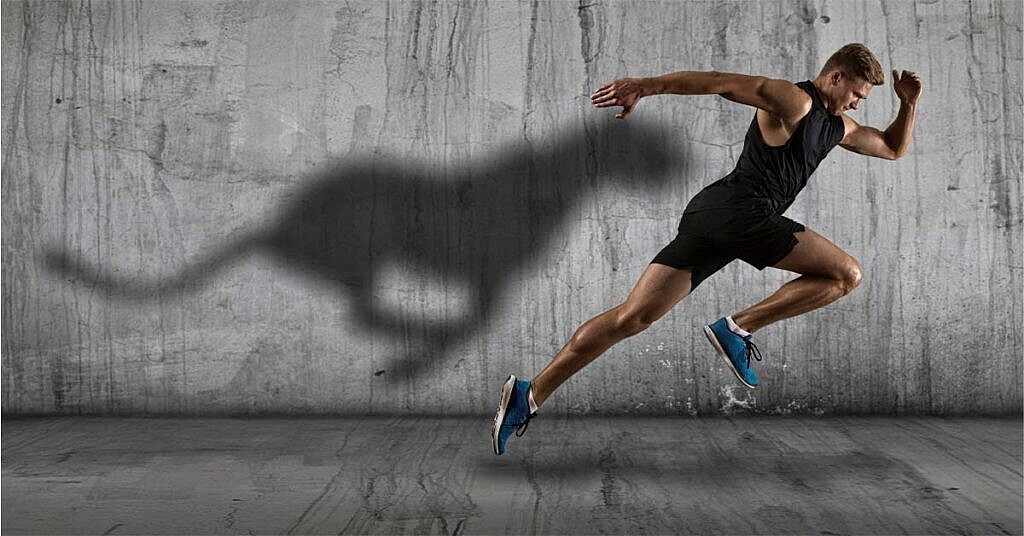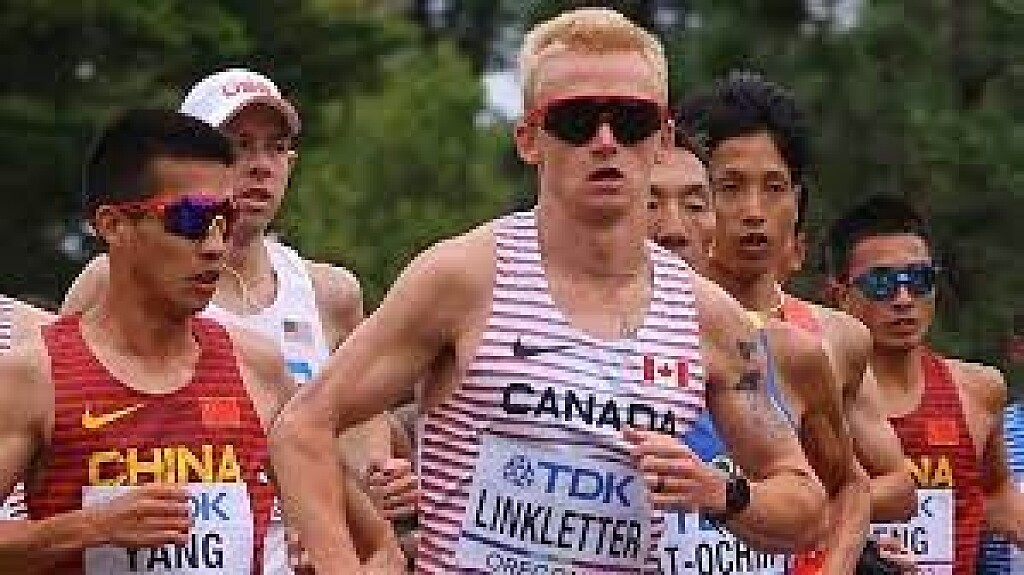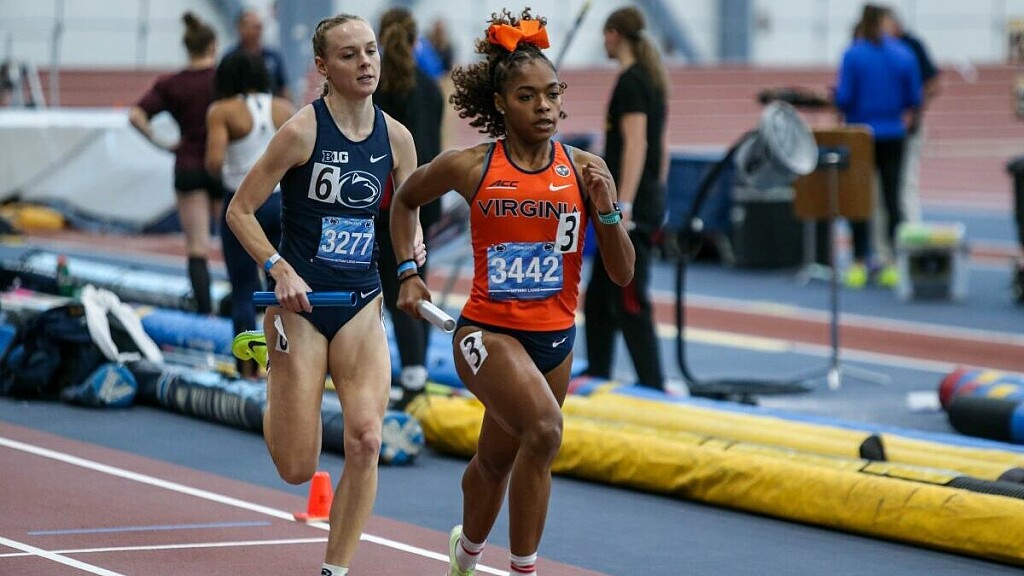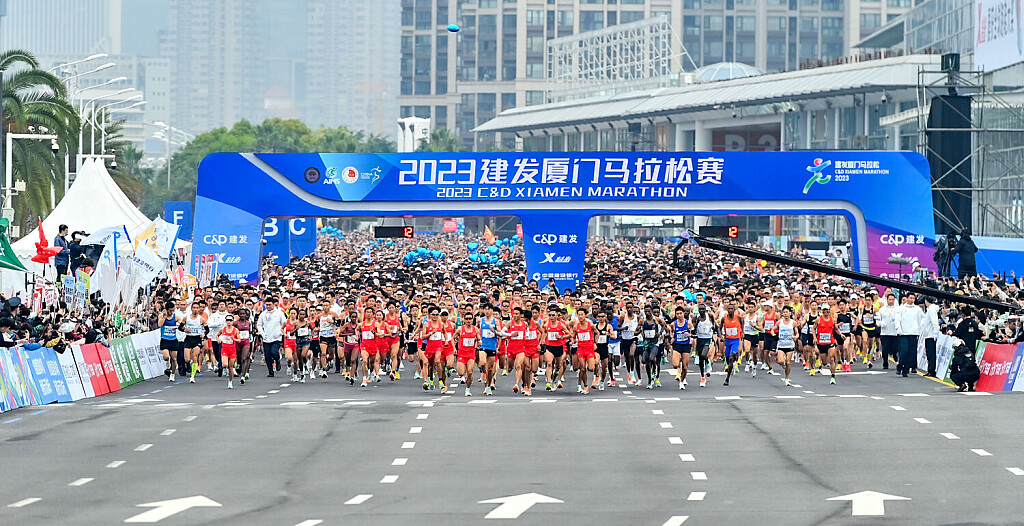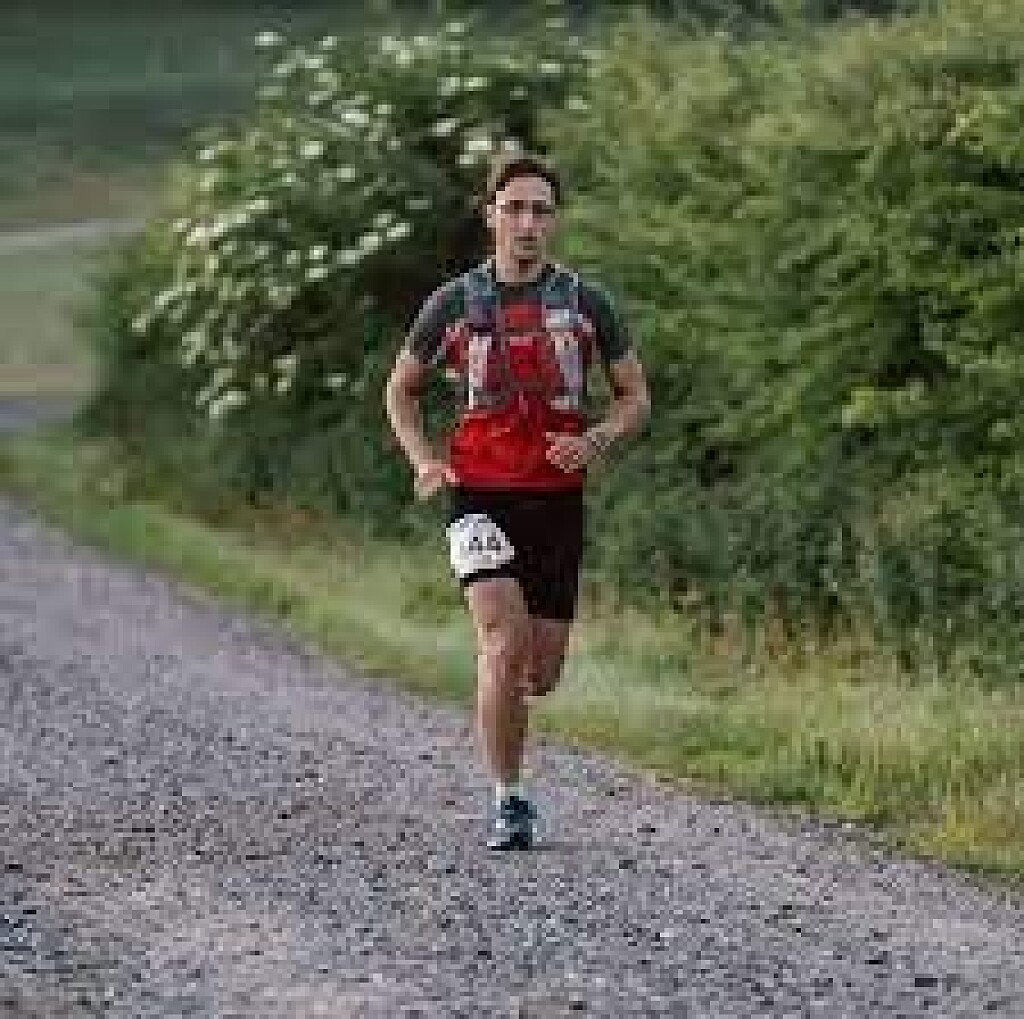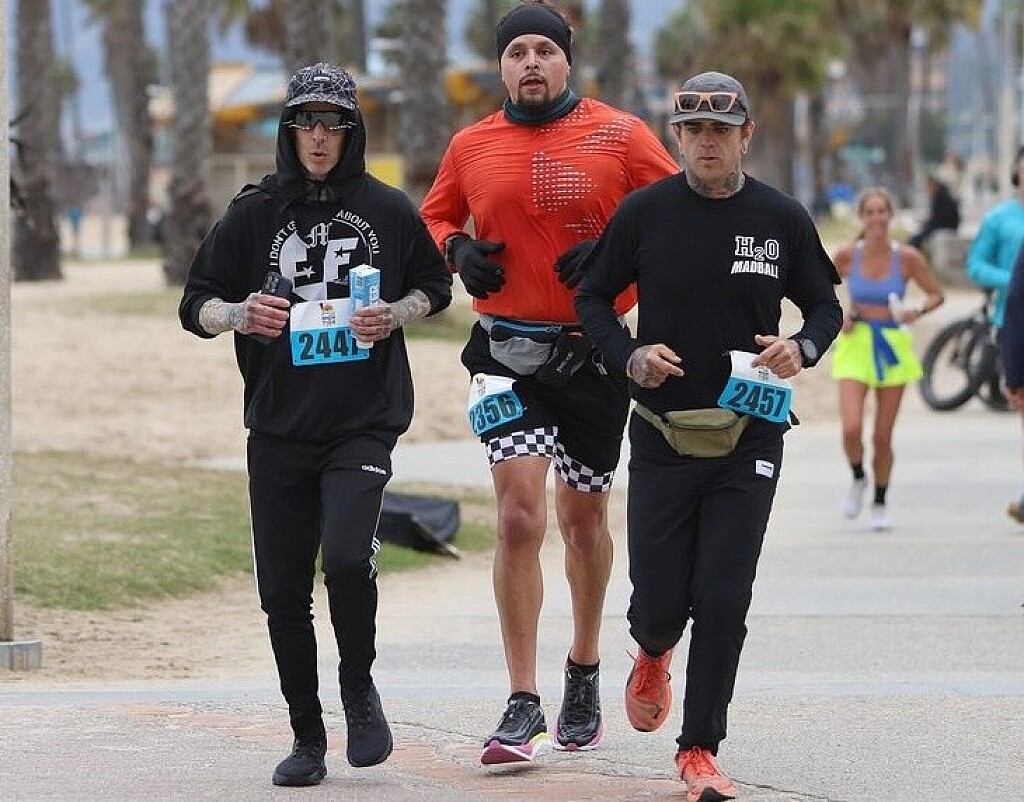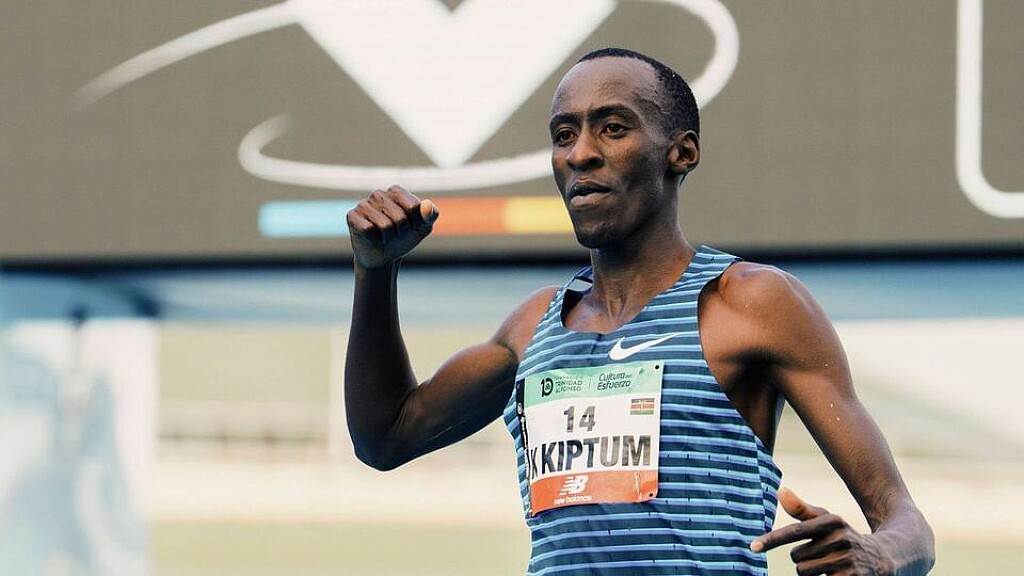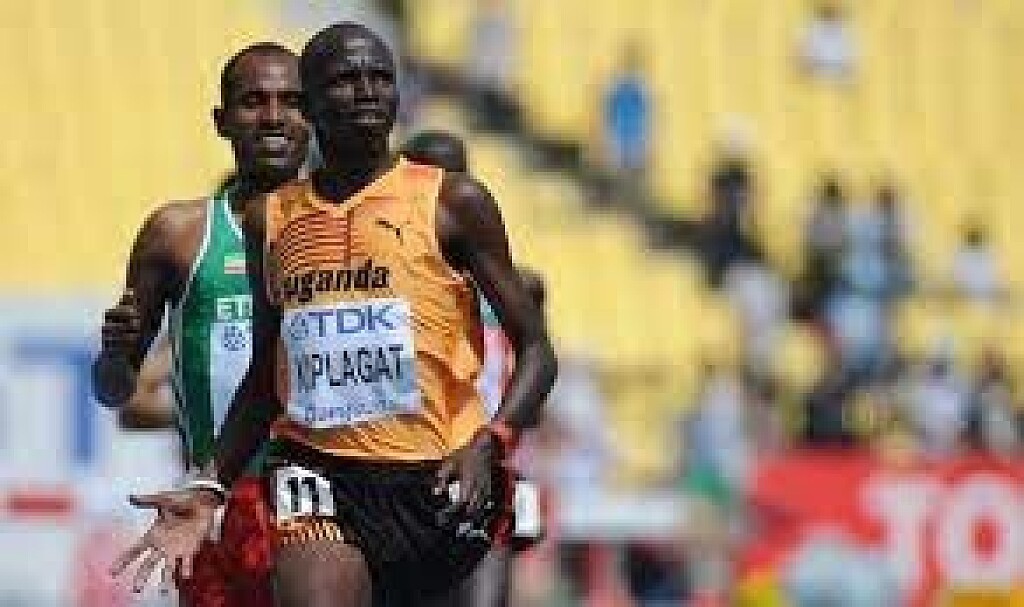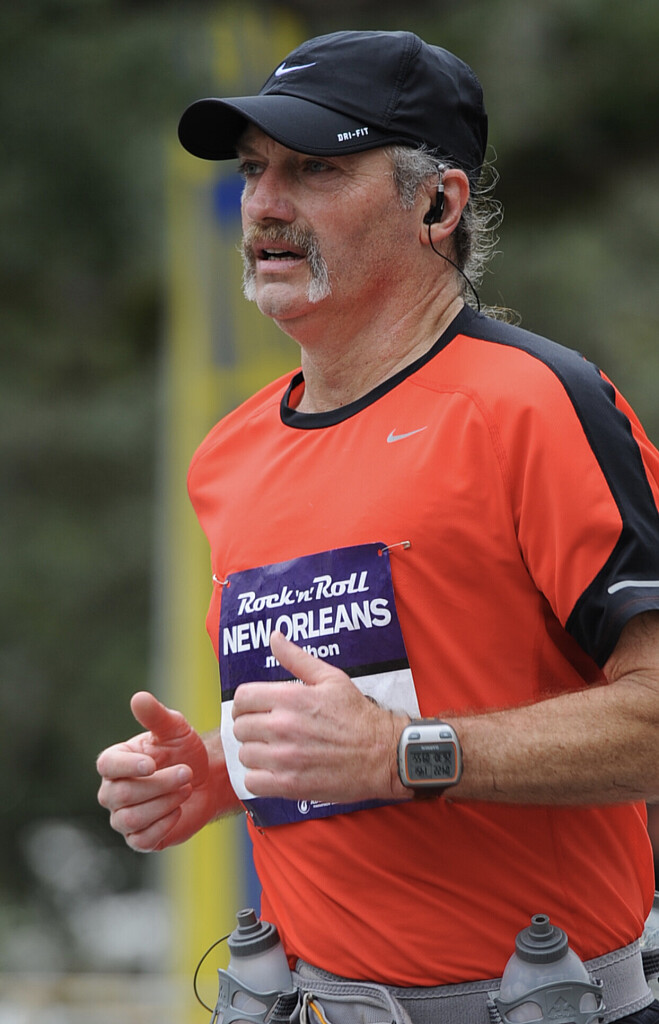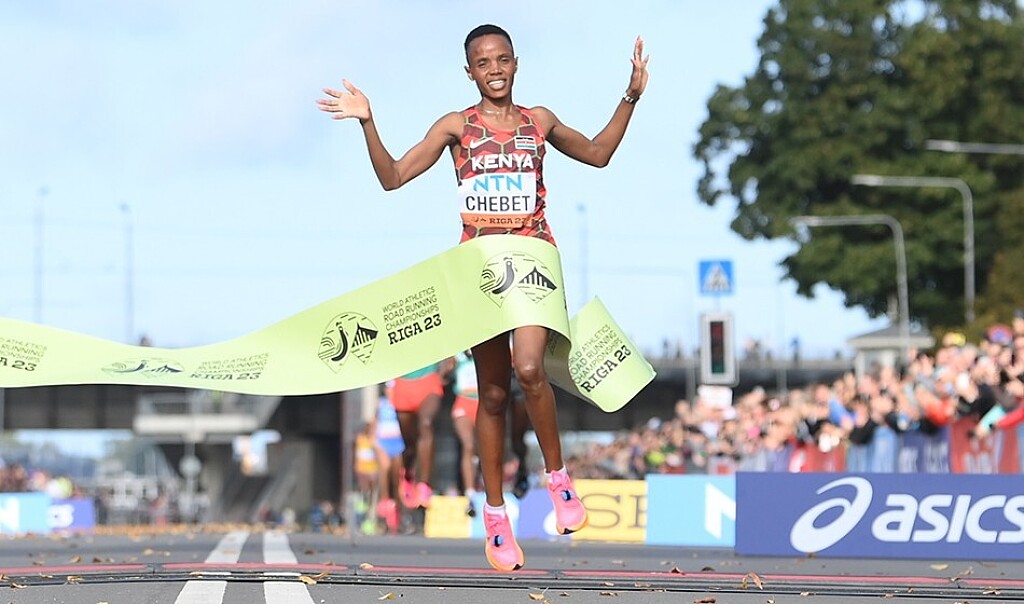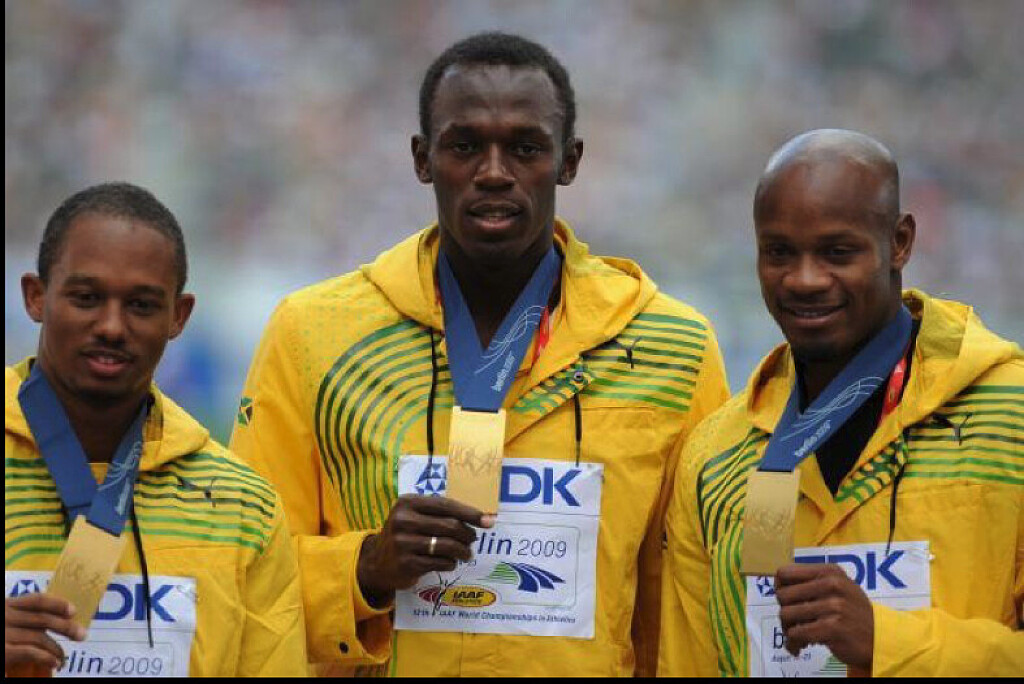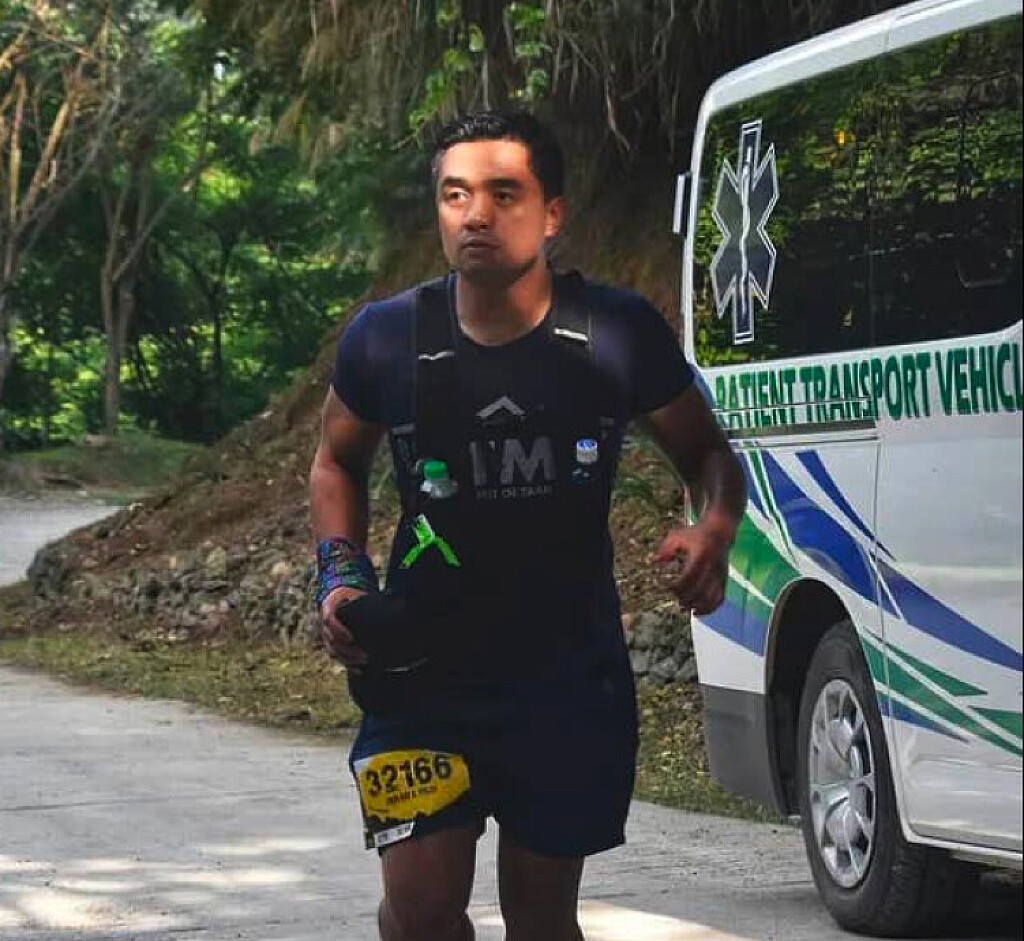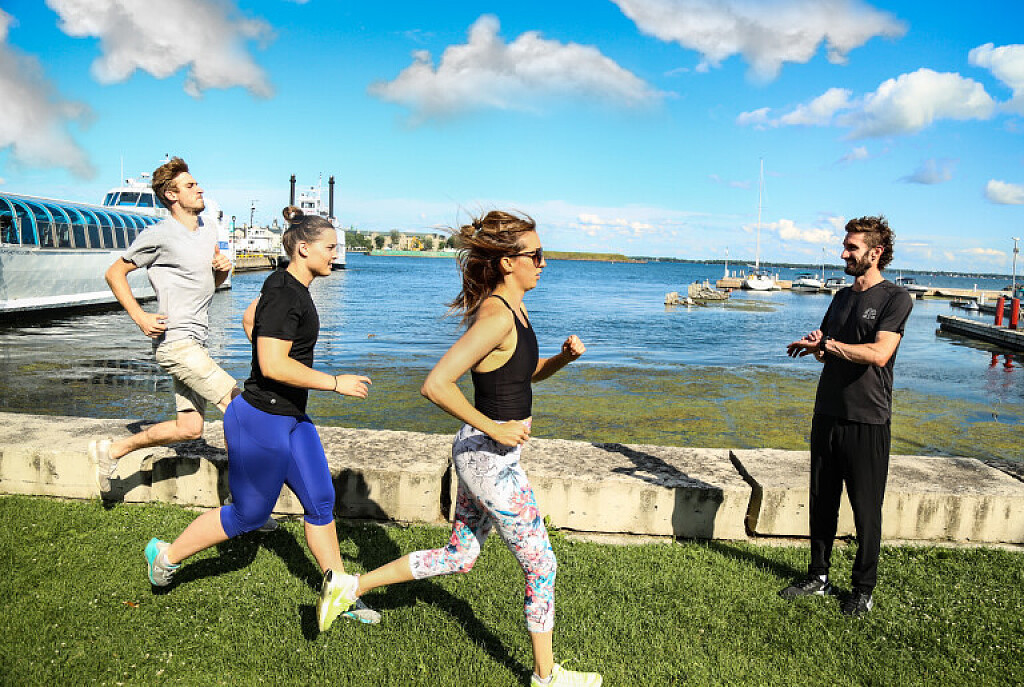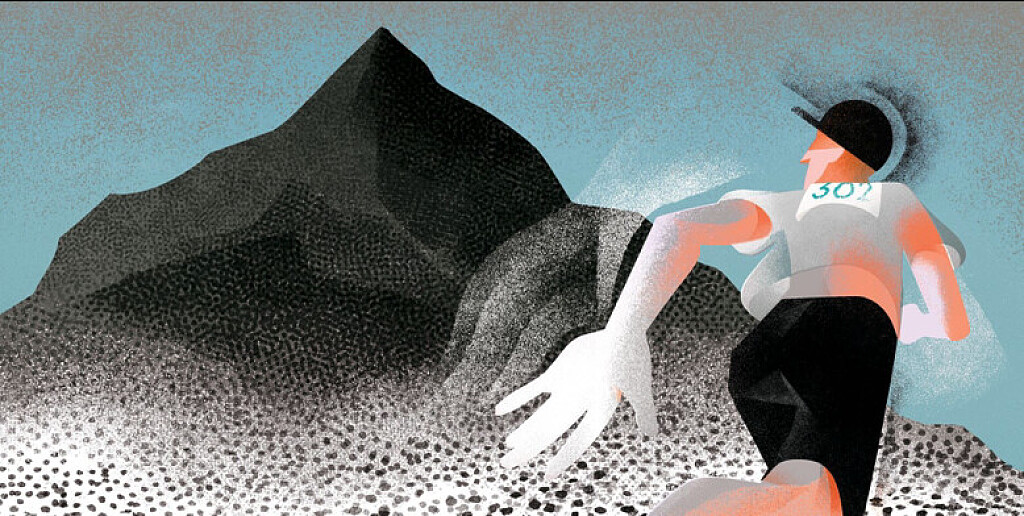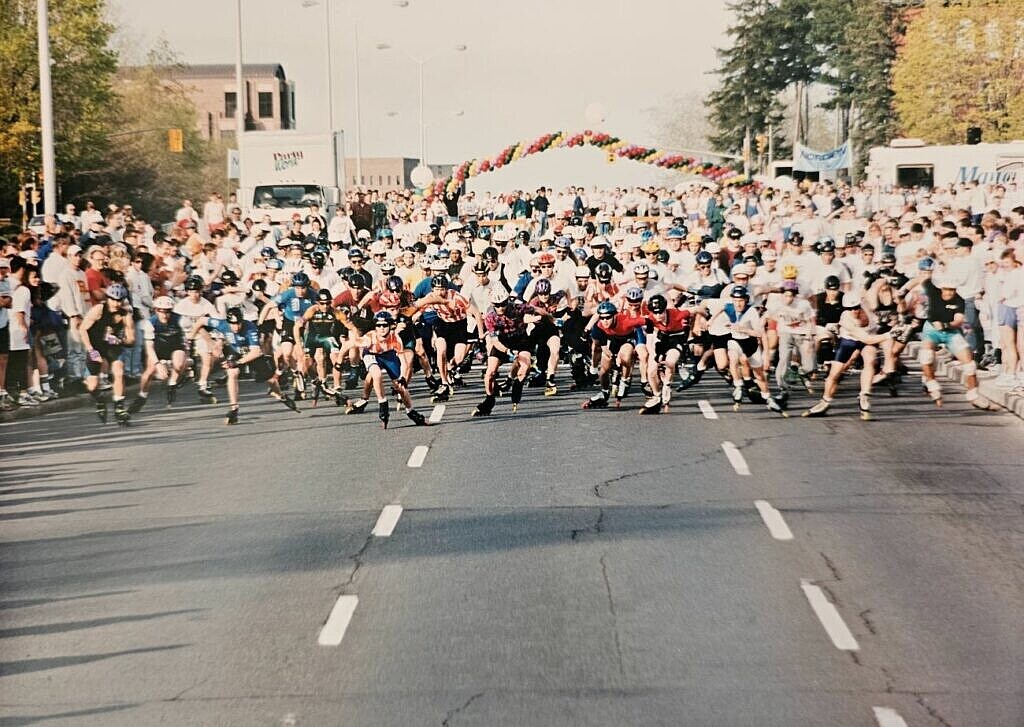Running News Daily
Running News Daily is edited by Bob Anderson. Send your news items to bob@mybestruns.com Advertising opportunities available. Train the Kenyan Way at KATA Kenya and Portugal owned and operated by Bob Anderson. Be sure to catch our movie A Long Run the movie KATA Running Camps and KATA Potato Farms - 31 now open in Kenya! https://kata.ke/
Index to Daily Posts · Sign Up For Updates · Run The World Feed
Tips to take your running from zero to marathon
Is your goal of completing a marathon daunting because you’ve never run before? Maybe running a marathon is on the bucket list, you're looking to challenge yourself physically, lose weight, or raise awareness for a charity important to you. Whatever your motivation, the first step is finding that ‘why’ and reminding yourself of it along the way.
Beyond having a reason to keep you going, know the techniques for how to start running and hit the distance in the half-marathon or full marathon with our tips below.

1. SLOW AND STEADY WINS THE RACE
Avoid burning yourself out right from the start by gradually building up your runs. Slowly increasing the time and distance you run by 10-20% each week and you’ll be less prone to suffer an overuse injury and tightness. Many run related injuries are caused by a rapid increase in the amount of running done. Give yourself plenty of time to train - around 6 months is ideal for a first-timer. Consider completing a couch-to-5k or other fun run event as part of your training. It’s hard not to fall in love with running once you get going and the temptation may be to run too far too soon which your body won’t thank you for. Instead, work up to those milestones slowly and bit by bit.

2. INVEST IN YOURSELF WITH THE RIGHT RUNNING SHOES
Finding the right footwear specifically for your running style is paramount to feeling good on your runs and sticking with it. Take the time to visit a Running Expert location near you to be assessed for your foot type and gait pattern. Through this process, you’ll learn the level of stability and support best suited for you. It’s important to have your running shoes dialled in well before race day to break them in and be sure they don’t cause you any pain.
3. PICK A MARATHON TRAINING PLAN
Following along with a training plan will offer a clear approach on how to train for a marathon and is essential to being ready for race day. A structured plan with a variety of runs with help you complete those 42.2km as strong as possible. Check out our half-marathon training plan and full marathon training plan.
It’s recommended you have a base of at least 4-8 weeks of running regularly before starting on a training schedule. Setting the foundation first will ensure you have a solid base to start your marathon training feeling ready to take on longer distances. Use a running app like ASICS Runkeeper to receive guided training, set goals, and track your progress along the way. Seeing incremental improvement will motivate you to keep going.
4. INCORPORATE STRENGTH TRAINING AND REST DAYS
Strengthening the muscles that power your running will give you better stamina and endurance. Helping you to run further distances and feel stronger while doing it. Balance your training by scheduling in days for focusing on strength. Two of the key muscle groups to work on strengthening are your core and glutes. Try simple targeted exercises like the ones highlighted in our article on Stretching and Strength Training for Runners.
Avoid running yourself into the ground by giving yourself dedicated rest days. It’s important to allow your body time to recover and repair itself. Without a rest day, you risk overtraining, burning yourself out, or even causing an injury.
5. FIND THE BEST FUEL FOR YOU
Don’t risk an upset stomach on the day of the race. Identify during your training what works best to fuel your running. Test out different carb-heavy breakfasts a few hours before your bigger run days. For a full rundown on how to dial in your nutrition, read our article from Claire Turnbull. During your runs over 90 minutes, it’s important to aim to consume around 30 to 60 grams of carbs per hour. Test out different on-the-run fuel that’s simple to eat, digest, and carry. Running gels and chews are a good go-to as they’re easy to carry and contain a nice dose of quick carbs. Another part of fueling is hydration. Race organisers often provide the option of dropping personal drink bottles at stations along the way for when you think you may need more than just the cups they hand out.
One last highly important key to running a solid race, don’t try anything new on event day.
(01/10/2024) ⚡AMPby ASICS
Adamant Asbel Kiprop proclaims innocence six years after doping furore
More than five years later, Olympic champion Asbel Kiprop still insists on his innocence and he strongly believes he was framed.
More than five years later, three-time World champion Asbel Kiprop still insists that he is innocent and did not deserve to be banned for a doping offense.
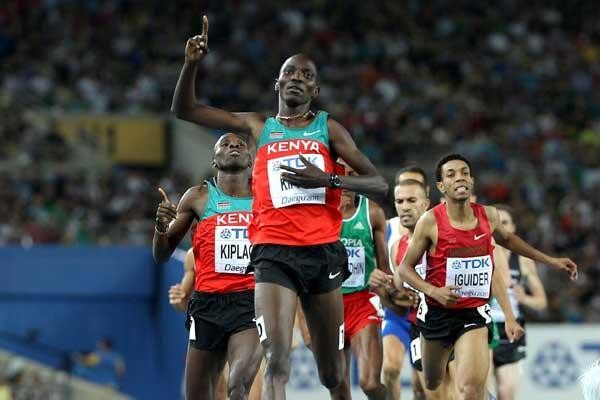
Kiprop shared on his Facebook page, lamenting about the turn of events that saw him land on the wrong side of the Athletics Integrity Unit.
He wrote: “In 2017 Alone I was Tested 19 Times; 3 times in the week of November, that beget a Mysterious AAF of 27th November.”
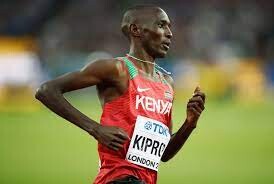
Meanwhile, the 2008 Olympic champion was handed a four-year ban by the AIU after he tested positive for EPO in an out-of-competition test in Kenya in November 2017. Kiprop's suspension was backdated to February 3, 2018, when he was provisionally suspended.
Kiprop fought for his freedom since he explained that he was innocent. On April 12, 2018, Kiprop’s lawyer posted a statement on Facebook that noted that the positive test resulted from a contaminated sample or was flawed.
Since the time of the ban, Kiprop has been vocal about his innocence and insisted that he did not commit any doping offense.
"The decision is not only a blow to me, but it is not good for the sport of athletics. I have been insisting that I did not dope.
"I will continue to maintain my innocence, even if this decision now means I will not be eligible to run again for the next four years,” Kiprop told AFP.
In his defense, Kiprop told investigators that he was provided with advanced notice about the drug test ahead and later made a payment to doping control officials.
It was determined that the advanced notice and the payment did not cause the adverse analytical finding of EPO in Kiprop's drug sample.
(01/10/2024) ⚡AMPby Abigael Wuafula
Return of 40-year-old Jamaican Olympic champion elicits mixed reactions
40-year-old Melaine Walker has expressed her interest in competing at the Olympic Games after a long period of inactivity, a move that has elicited mixed reactions from athletics enthusiasts and fans.
Melaine Walker, a 40-year-old Jamaican hurdler has expressed her interest in representing her country in the 110m Hurdles at the upcoming Paris Olympic Games.
The 40-year-old won the 400m Hurdle race at the 2008 Olympic Games in Beijing, China, and also won the title at the 2009 World Championships in Berlin, Germany.
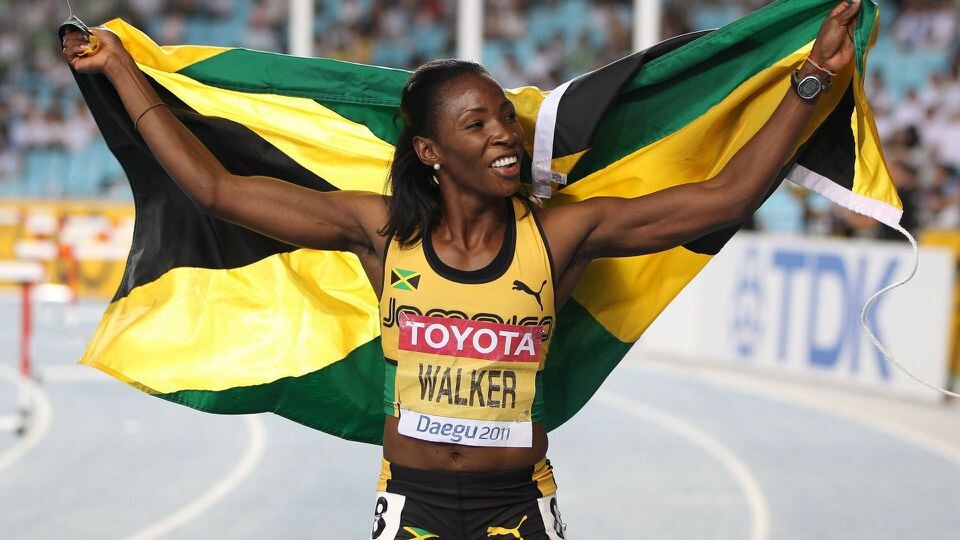
The World and Olympic champion will now be seeking a chance of redemption after a long period of inactivity. Last season, she only competed once, at the GC Foster Classics where she sealed the podium in the 110m Hurdles race.
Speaking to Nationwide Radio Jamaica, she said: “The aim is to get to the Olympics…that is what everybody is working for.
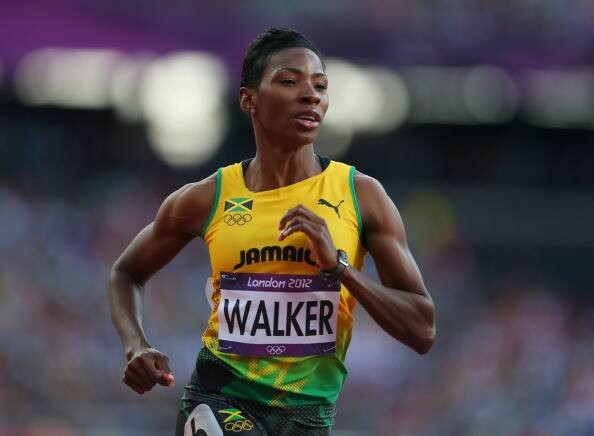
"I want to focus on that…but I will need to come back first. I’m taking small steps in order to get myself back, and then I will be able to get myself in the mix.”
She added that she is aware of the tough competition that awaits her but she does not pay attention to the athletes but to herself and what she does offer.
However, some of her fans and athletics enthusiasts think it is not a good idea for her to set such lofty ambitions since she has been inactive in the sport for long.
One X (Twitter) user commented on the news saying: “She said this after winning the 400 meters hurdles in 2008 but did not carry through in 2012 and has been relatively inactive since. I wondered if she was alright then, a wondering again.”
Another user said: “Her last appearance was in Daegu in 2011 and that was 13 years ago. She would have to do a lot of work to get in shape to compete against the younger and fitter athletes. Don’t think it is a risk worth taking. Wish her well though.”
However, other fans seemed to have no problem with her goals and one commented on the post saying: “Some are yet to win medals even on church sports day but have the temerity to tell the world and Olympic champion what she can and cannot do.”
Another one said: “Nothing is impossible!!” Another user also supported her and said: “This has been her dream for a while now. Wish her all the best.”
(01/10/2024) ⚡AMPby Abigael Wuafula
Solid performances at the 29th monthly KATA Time Trials in Thika Kenya
Kenya Athletics training academy (KATA Running Retreat) monthly time trial took place today January 10th in Thika Kenya. This was the 29th event for the series.
The athletes opened the year in good fashion and the turn out was impressive. We had 38 registered participants.

Raphael Karita opened the day in a scintillating win in the 5km posting a personal best of 14:44. His time was indeed impressive considering the fact that he ran against a heavy head wind in the last kilometer.
He was followed closely by Simon ngumbau and Kevin ragui who clocked 15:04 and 15:20 respectfully. Amos chirchir who finished fourth is a true representation of courage and determination. He was a sprinter and decided to switch to distance running and he has passionately done a tremendous job posting a personal best of 15:39. He lowered his time by more than 40 seconds, setting a galvanizing example and inspiring many upcoming athletes within KATA.
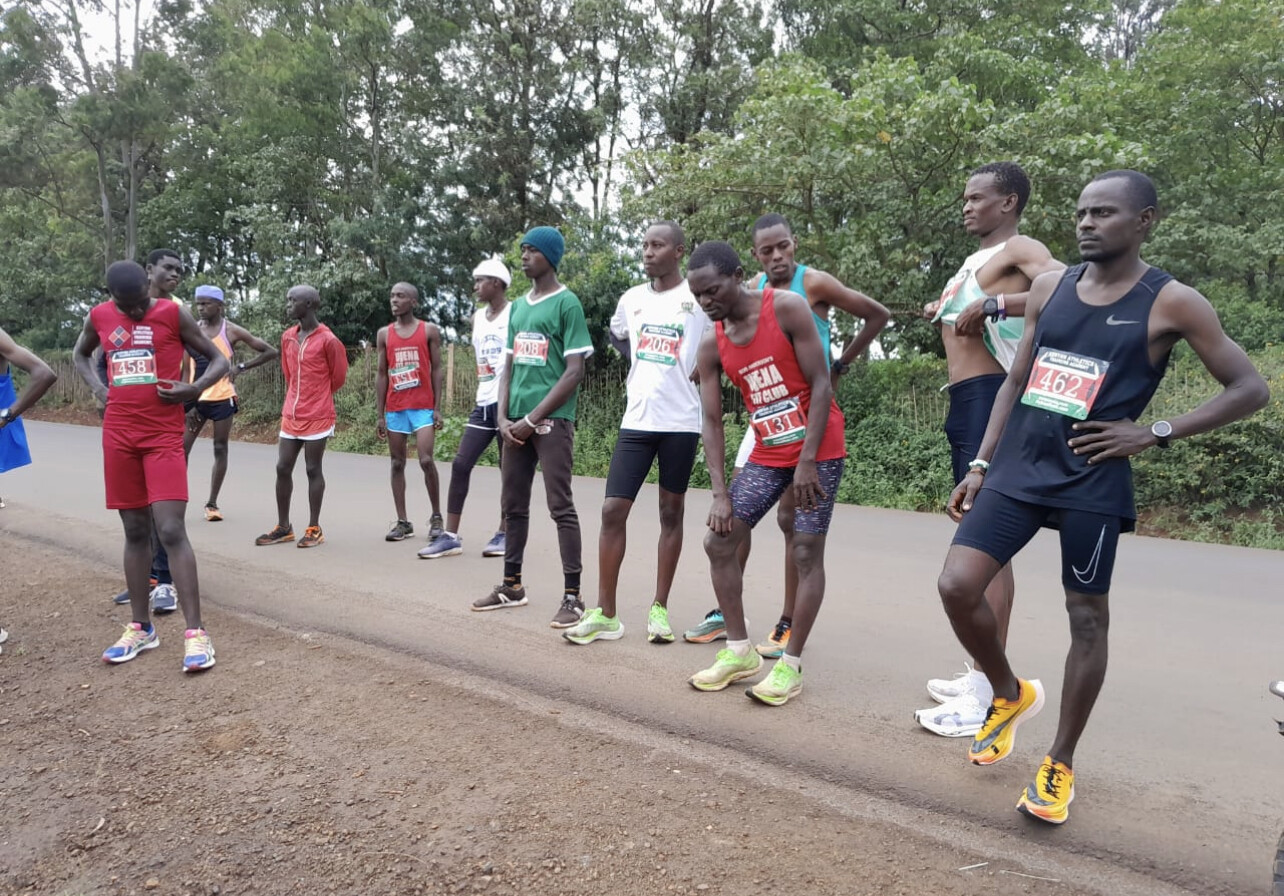
Athanas kioko (first photo) took victory in the 10 km clocking 29:02 just missing going under 29. Martin ndungu was second in 29:44 and 19-year-old Dismus okioma was third with 29:53. Levi kuria, one of the KATA's up and coming promising athletes finished fifth clocking an impressive personal best of 30:18 lowering his previous time by more than 30 seconds. The 30th KATA time trial is set for Feb 14.
10km MEN
Age, bib number and time
1 Athanas kioko 28 171 29:02 loop
2 Martin ndungu 25 492 29:44
3 Dismus okioma 19 453 29:53
4 Zakaria kirika 22 145 30:14
5 Levi's kuria 22 499 30:18
6 Fred chege 25 163 31:11
7 Anthony Mukundi 35 131 31:29
8 Kenneth gichoya 26 306 31:32
9 David gitau 28 179 32:02
10 Fredrick kiprotich 23 194 32:08
11 Boniface mungai 24 452 32:21
12 Alfred kamande 24 447 32:25
13 Martin Mambo 27 149 33:43
14 Ismael mburu 23 489 35:43
15 Charles ndirangu 64 451 37:21
10km Women
1 Lois wambui 23 151 36:20
2 Jacinta mwende 22 197 36:21
3 Virginia wanjiru 22 134 37:15
5km MEN
1 Raphael karita 24 201 14:44
2 Simon ngumbau 28 462 15:04
3 Kelvin ragui 21 450 15:20
4 Amos chirchir 23 154 15:39
5 Charles ndirangu 23 458 15:48
6 Ramadan ambani 26 195 16:28
7 Kariuki wangari 25 446 16:47
8 John mutiso 18 153 17:23
9 Jeremiah obura 18 170 17:36
10 David kitheka 20 207 17:44
11 Lewis mwangi 18 481 18:08
12 Francis Kariuki 19 468 18:18
13 Felix muigai 18 208 18:24
14 Collins muiruri 18 148 18:30
15 Joseph maina 18 449 19:06
16 Alex kamau 18 204 21:26
5km Women
1 Caren chepkemoi 22 161 18:29
2 Lilian musenya 22 116 19:19
(01/10/2024) ⚡AMPKATA Time Trial Series
Welcome to the KATA Monthly Time Trial Held at the Kenyan Athletics Training Academy in Thika, Kenya, the KATA Monthly Time Trial is a unique and inclusive event designed to support runners of all levels in achieving their goals and showcasing their fitness. This event offers both 10K and 5K distances on an accurate, certified course, providing participants with...
more...Faith Kipyegon not under the pump to deliver ahead of Olympic Games
Faith Kipyegon will be out to enjoy herself when she steps foot on the track at the Olympic Games and she awaits for the magic to happen.
With 199 days to go until the 2024 Paris Olympic Games, athletes are gearing up for a nail-biting experience and double World Champion Faith Kipyegon is definitely not an exception.
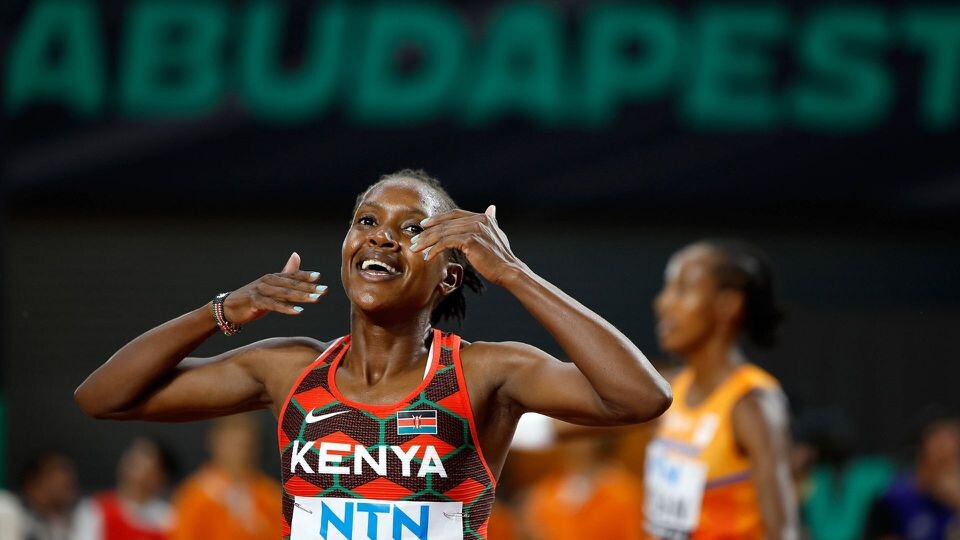
The 29-year-old was among the athletes who enjoyed an awesome 2023 season and all eyes will be on her to deliver on the global stage.
She broke three world records, the 1500m, 5000m, and one-mile world records before securing double gold at the World Championships in Budapest, Hungary.
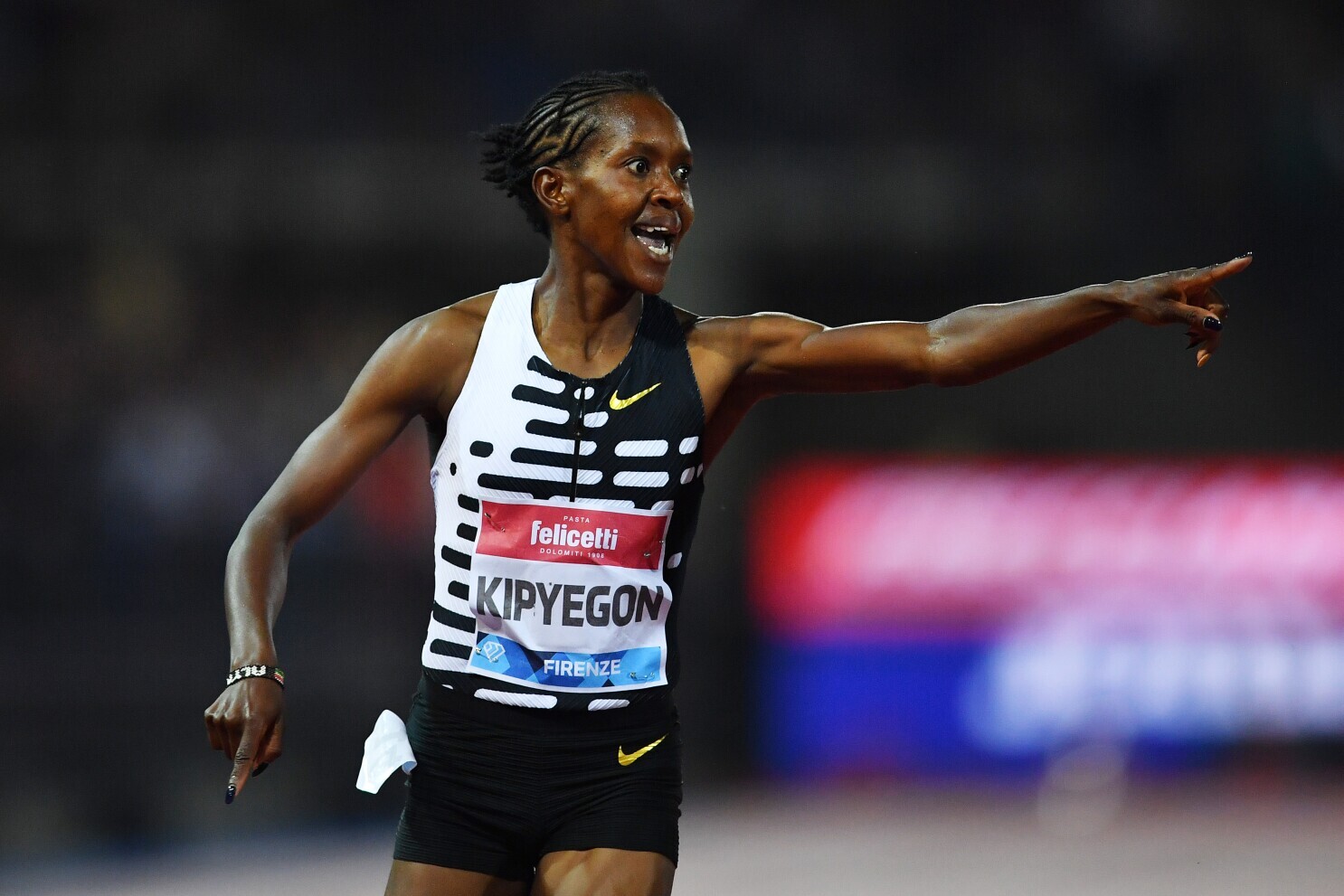
She will seek to defend her 1500m title, having won gold in the two previous editions,s and will be looking forward to a hat trick.
However, Kipyegon is not under the pump to deliver and she will be keen to enjoy herself and let the world witness the wonder.
“I’m really looking forward to Paris 2024, to step on that track and see what will happen. That’s what we are looking for – to get to the Olympics, get to the track and just enjoy it and see what will come out,” the three-time World champion said as per World Athletics.
Off the track, Kipyegon wants to continue being a source of inspiration to the younger generation, just as she has done in the previous years.
“Outside of track, and after the Olympics, I think I will motivate and inspire many, especially young girls in my country and Africa and all over the world. That is my motivation.
“I want to see them to express their talent, follow my footsteps, and I want them to see good role models,” she added.
(01/09/2024) ⚡AMPby Abigael Wuafula
World Athletics president says track and field will never be drug-free
Former Olympic champion and current World Athletics President, Sebastian Coe, recently addressed the persistent issue of doping in track and field during an interview on the Up Front with Simon Jordan podcast. Coe acknowledged that achieving a completely drug-free sport is unlikely due to the inherent risks and rewards associated with doping.
When asked about concerns regarding an uneven playing field and the prevalence of doping, Coe pointed out the increased controls compared to nine years ago, when he assumed the role of World Athletics president. Despite the progress made, he admitted that reaching a utopia of a drug-free sport is unrealistic.
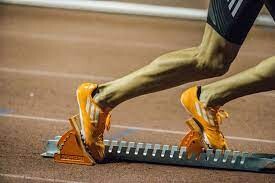
Coe highlighted the risk-versus-reward dynamic, stating, “If you’re a street kid, in some countries the risk versus reward is huge, and if you get caught and are returned to the street, then that’s nothing ventured, nothing gained. So it is a challenge.” Coe said the athletes with nothing to lose and everything to gain will continue to take the risk that they might get caught.
In 2017, World Athletics appointed the Athletics Integrity Unit (AIU), an independent governance organization at the core of integrity reforms. The AIU, funded annually with millions of dollars from World Athletics, plays a crucial role in ensuring fair competition and protecting clean athletes.
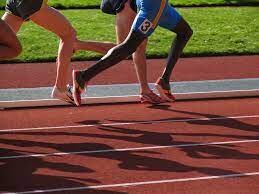
Coe told Jordan that he only receives about six hours’ notice on the doping ban of an athlete before it is publicly announced by the AIU. Despite the challenges, he emphasized the importance of maintaining control over the sport. “If you’re not following the rules, you are gonna get caught,” he said.
The AIU’s Global List of Ineligible Persons currently has more than 700 athletes serving doping suspensions, with 21 per cent of the cases originating in Kenya and India. In response to the doping challenges in Kenya, the Kenyan government, AIU and World Athletics have initiated a $25 million five-year campaign to educate and test more athletes. The campaign aims to combat doping in athletics by addressing the root causes and implementing strict testing measures.
(01/09/2024) ⚡AMPby Marley Dickinson
Mary Moraa proud of younger sister making waves on the track
Mary Moraa has lauded her younger sister, Sarah, who is keenly following in her footsteps to become the next 800m icon.
The second Athletics Kenya meet at the Ulinzi Sports Complex saw runners from all walks of life descending on the track to showcase their talents with Mary Moraa’s younger sister, Sarah Moraa being the center of attention in the women’s 800m.
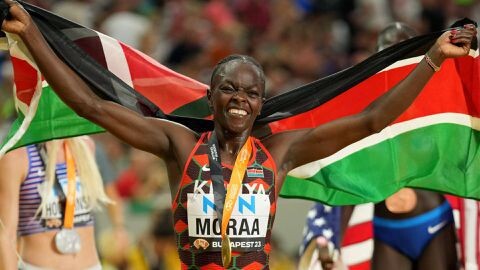
Sarah oozed class as she obliterated a strong field to win Final 3 of the women’s 800m race in 2:06.26. At the finish line, Moraa awaited her younger sister and embraced her with love.
Lilian Atieno and Winfred Mbithe finished second and third in respective times of 2:09.70 and 2:12.91.
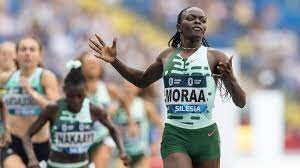
After the race, Moraa shared a photo on her Facebook page, lauding her younger sister for her impressive show at the AK event.
She said: “Baby steps...you shall reach the top. Congratulations kid sister Sarah on your great progress and top performance at the second Athletics Kenya Track and Field Meeting. 2:06.26 (800m) is quite fine.”
In a post-race interview, Sarah told Nation Sport that she was delighted with her progress and revealed that Moraa has been guiding her.
“The intensity and concentration in 800m are high compared to the 200m and 400m but I love how I’m scaling the ladder through the guidance of my sister Mary. She has been such an inspiration,” Sarah said.
The 18-year-old has her eyes focused on the All African Games scheduled for Friday, March 8 to Saturday, March 23.
(01/09/2024) ⚡AMPby Abigael Wuafula
Four Canadian runners to chase Olympic dreams at Houston Marathon
As the 2024 Houston Marathon Weekend approaches, the spotlight is not only on the highly anticipated half-marathon debut of Canada’s Moh Ahmed, but also on the intense competition among four Canadian marathoners aiming to earn the Olympic qualifying standard for the 2024 Paris Olympic Games.
Wodak eyes Olympic standard
Canadian marathon record holder Natasha Wodak leads a strong Canadian contingent in Houston, all chasing the Olympic A standard of 2:26:50. Former national team athletes Leslie Sexton and Lanni Marchant will also be vying for the two available spots on the women’s marathon team.
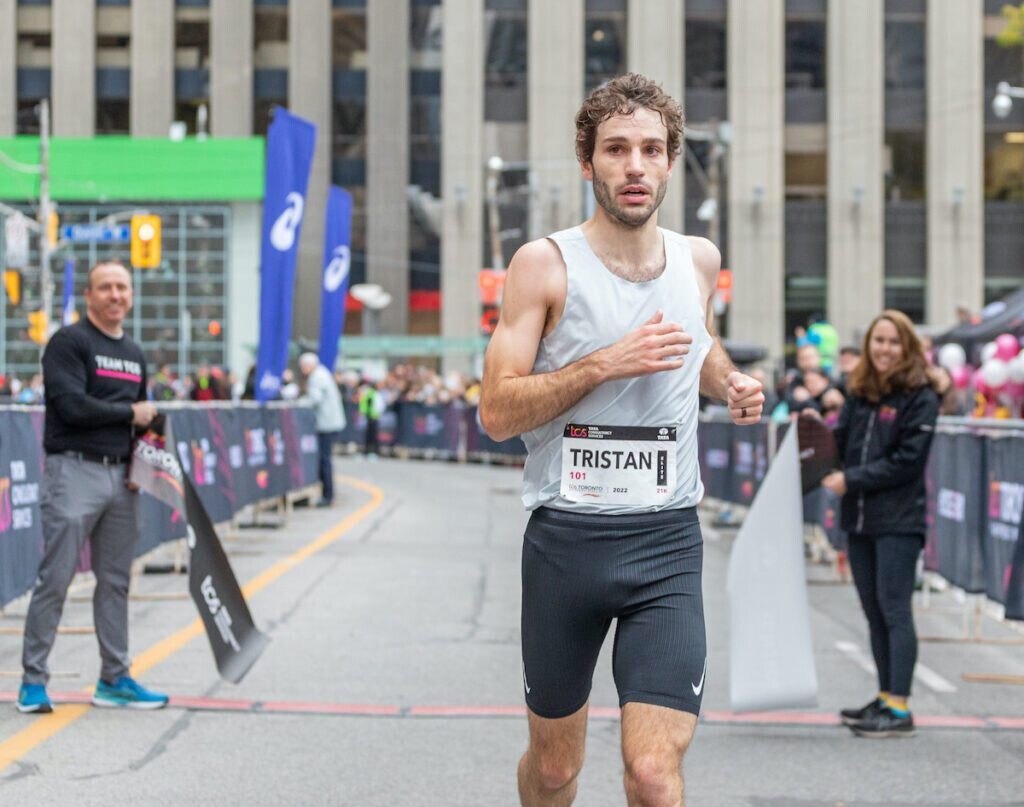
Wodak holds the fastest Canadian women’s time in the last two years, but her Canadian record of 2:23:12 from the 2022 Berlin Marathon was outside the Olympic qualifying window. Wodak took another shot at achieving the time at the 2023 World Athletics Championships in Budapest, but warm conditions and a tactical race prevented her from earning a spot in Paris (she finished in the top 15, in 2:30:09).
Sexton returns to the marathon after a break from the distance of a year and a half. Sexton ran 2:28 twice in a 10-month period, winning the 2021 Philadelphia Marathon and finishing as the top Canadian at the 2022 World Athletics Championships in Eugene, Ore. ((she finished 13th). With a best of 2:28:35, she would need to shake off almost two minutes to solidify her spot in Paris. But the fast Houston course (which she has raced before) could provide what she needs.

Also returning to the marathon after a long hiatus is 2016 Olympian Lanni Marchant. The London, Ont., native holds a personal best of 2:28:00 from Toronto in 2013, but there are a lot of questions around her fitness, after racing only twice in 2023. Marchant would need a career-best performance to earn her a spot on the Canadian Olympic team for 2024.
Malindi Elmore of Kelowna, B.C., is the only Canadian woman to have achieved the Olympic standard of 2:26:50 at the 2023 Berlin Marathon. Elmore was also the top North American female finisher in 2:23:30, achieving an 80-second personal best.
Ontario’s Tristan Woodfine takes another shot
After thinking he had a spot on the Canadian Olympic team for Tokyo, then having it taken from him in the final week of qualifying by Cam Levins and Athletics Canada, Tristan Woodfine is heading to Houston for another shot at his dream of being on Team Canada for the Olympics. Woodfine’s personal best came on a cold and wet day at the 2020 London Marathon, clocking 2:10:51. Since 2020, he has had his struggles with the marathon distance and beating that mark.
After tough luck with the heat and his stomach at the 2022 Ottawa Marathon, Woodfine switched coaches and spent most of the 2023 season building his speed on the roads. He recorded personal bests of 14:05 for 5K and 29:06 for 10K. Only two Canadian men have ever broken 2:10 in the marathon: Trevor Hofbauer and Levins.
Levins cemented his spot on the Canadian Olympic team for Paris at his record-setting run at the 2023 Tokyo Marathon. To this day, he is the only Canadian marathoner to have run under the men’s Olympic A standard of 2:08:10. (He also did so at the 2022 World Championships.)
How to follow
The 2024 Chevron Houston Marathon is scheduled for Jan. 14. It is one of the fastest marathon courses in North America; in 2020, Elmore set the previous Canadian marathon record of 2:24:50 there. The last Canadian marathoner to win the Houston Marathon was Mississauga’s Peter Fonseca, who ran 2:11:52 for the win in 1995.
(01/09/2024) ⚡AMPby Marley Dickinson
Chevron Houston Marathon
The Chevron Houston Marathon offers participants a unique running experience in America's fourth largest city. The fast, flat, scenic single-loop course has been ranked as the "fastest winter marathon" and "second fastest marathon overall" by Ultimate Guide To Marathons. Additionally, with more than 200,000 spectators annually, the Chevron Houston Marathon enjoys tremendous crowd support. Established in 1972, the Houston Marathon...
more...Mumbai Marathon 2024: Olympic medalist Meb Keflezighi named brand ambassador
Celebrated long distance runner Meb Keflezighi, who won a silver medal in the 2004 Athens Olympics, has been named brand ambassador of the 19th Tata Mumbai Marathon scheduled to be held on Sunday.
The race is a World Athletics Gold Label event and Procam International is the promoter of the event.
Celebrated long distance runner Meb Keflezighi, who won a silver medal in the 2004 Athens Olympics, has been named brand ambassador of the 19th Tata Mumbai Marathon scheduled to be held on Sunday.
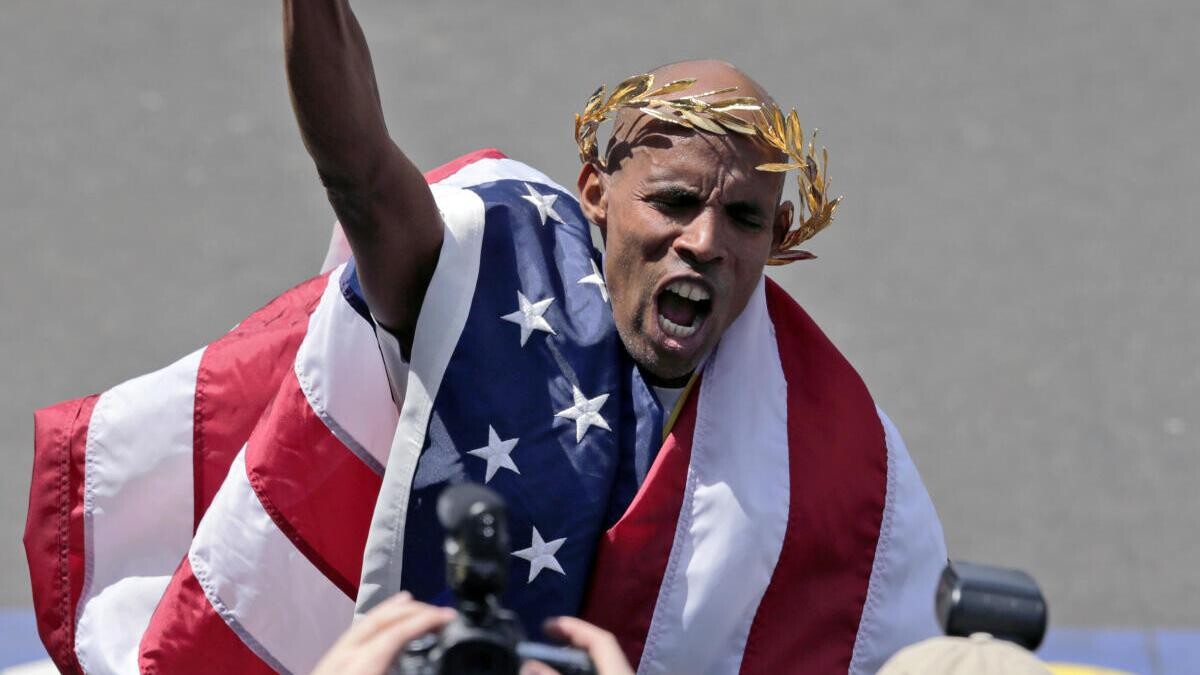
The race is a World Athletics Gold Label event and Procam International is the promoter of the event.
“The Tata Mumbai Marathon has been on my bucket list for the longest time, and finally being able to witness Mumbai’s indomitable spirit, is indeed exciting,” Keflezighi, an Eritrea-born American, was quoted as saying in a press release.

“This event inspired a country to run and changed mindsets, that is the true legacy of a sporting event. Mumbai’s incredible energy and enthusiasm, combined with the dedication of its runners, embodies the universal language of endurance. I will only say this… remember to run with purpose, embrace the journey, and move ahead together. In every stride, find the strength to go the distance and make a difference to what you believe in.”
Keflezighi has several record-breaking accolades in his career.
He scripted history when he became the only runner to win an Olympic medal (2004), the New York City Marathon (2009) and the Boston Marathon (2014).
In 2009, Keflezighi became the first American since 1982 to win the New York City Marathon. He has achieved the feat of being in the top 10 in the New York Marathon for a total of eight times in his career.
In 2015, he set a TCS New York City Marathon masters event record with a timing of 2:13:32sec.
In 2014 he won the Boston Marathon (2:08:37), the first American male to do so since 1983, and the first American since 1985.
Since 1930, Keflezighi has held the record for being the oldest winner of the Boston Marathon as he triumphed there when he was 39 years old.
He is also a former USA National 10,000m track record holder.
The Tata Mumbai Marathon will flag off from the iconic Chhatrapati Shivaji Maharaj Terminus on Sunday.
(01/08/2024) ⚡AMPTata Mumbai Marathon
Distance running epitomizes the power of one’s dreams and the awareness of one’s abilities to realize those dreams. Unlike other competitive sports, it is an intensely personal experience. The Tata Mumbai Marathon is One of the World's Leading Marathons. The event boasts of fundraising platform which is managed by United Way Mumbai, the official philanthropy partner of the event. Over...
more...Toronto runner completes 242 marathon distance runs across 70 countries in one year
On Thursday, Toronto-native Ben Pobjoy announced that he had successfully concluded the Marathon Earth Challenge, a solo journey around the world that was an attempt to surpass the Guinness World Record of most marathons in one year (Pobjoy ran 242 42.2 kilometer runs in 365 days) but also to expand the challenge by navigating these runs across nearly 70 countries.
“This past year has been mentally and physically taxing, but it’s an incredible feeling to have achieved this momentous goal of mine and meet incredible people along the way,” said Pobjoy. “From trekking in Ulaanbaatar’s chilly -20 degree temperatures with makeshift winter gear to enduring extreme levels of humidity in Malta, my year-long, earth-spanning adventure has been an unforgettable experience.”

“The purpose of Marathon Earth Challenge was never to race others, but rather, transform my physical exercise into a creative endeavor and observe our world up-close,” said Pobjoy. He explains on his website that each marathon was a method to nurture curiosities and document findings through written essays in newsletters, social media updates and photographic books for others to enjoy.
Pobjoy initiated his self-funded challenge on Jan. 1, 2023, equipped with a backpack filled with pens and cameras for documentation. Over 365 days, he completed 242 freestyle 42.2 km runs, covering an impressive 11,465 kilometers by foot. The diverse geographical locations included South America, the Caribbean, North America, Europe, Africa, the Middle East and Asia.
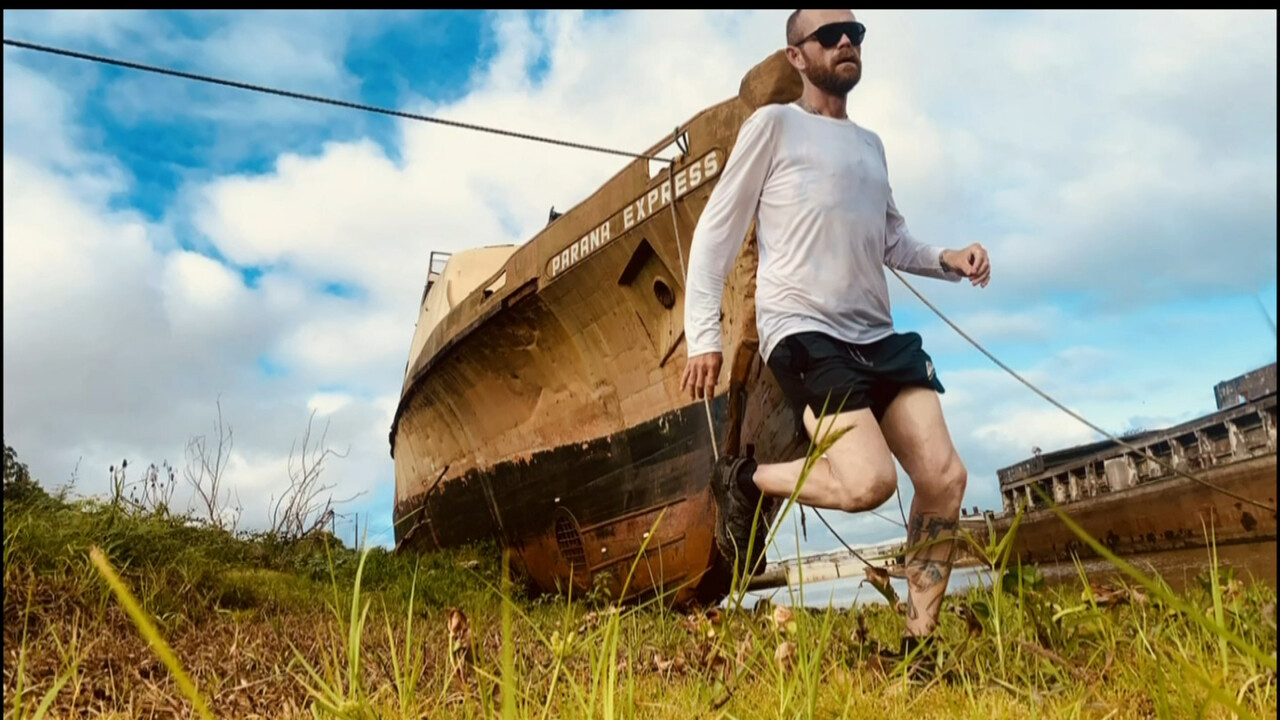
“Was regularly tested on earth’s streets yet somehow lived to tell,” Pobjoy shared on Instagram. “This adventure taught me how tenacious we humans are, and how we’re more alike than we are dissimilar. Furthermore, I observed that when we choose division over commonality, we lose our humanity. ”
Pobjoy’s running journey began in 2015, a transformative period in his life when he battled severe health issues while being morbidly obese. Starting with outdoor walks, he shed 100 pounds in eight months, and found that this form of exercise not only improved his health but also allowed him to appreciate the “exquisite beauty of Mother Earth.”
“While Marathon Earth Challenge is now complete, my awe for the physical world and my growing appetite to explore it further remain. I am excited to see what my next adventure holds,” said Pobjoy.
American runner Larry Macon currently holds the title of the official Guinness record for most marathons completed in one year (by a man) with 239 marathons completed in 2012, which were done at 239 marathon races.
(01/08/2024) ⚡AMPby Keeley Milne
The top five questions from experienced runners in 2024
No matter how long you’ve been running, there’s always something new to learn. As our knowledge of effective training practices and proper nutrition improves and new technologies are introduced, even experienced runners will have questions. From how to bust through a fitness plateau to fuelling tips for long runs, here are experienced runners’ top questions for 2024.
1.-How do you overcome a fitness plateau?
If you’re putting in the work but the time on the clock isn’t budging, the first step is to assess your training. Are you going too fast on your easy runs? Are you recovering properly (i.e., getting enough sleep and nutrition) between workouts? If you don’t already have a training log, start filling one out after each run, and look for patterns.
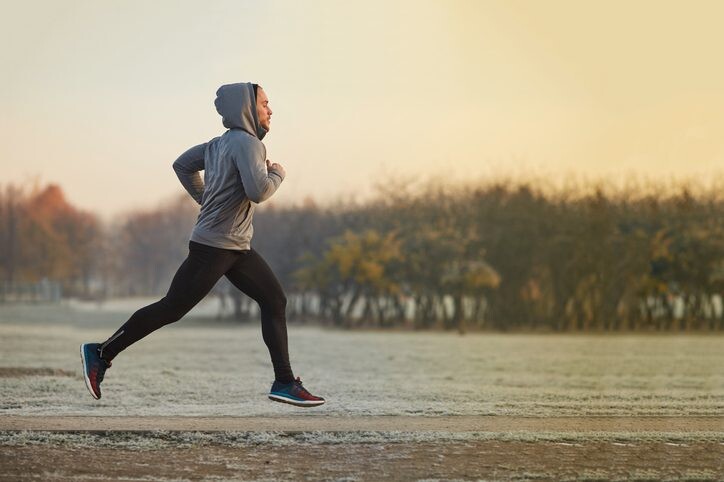
Other ways to bust through a fitness plateau include:
Adding speed work, like intervals, tempo runs and hill workouts into your training plan
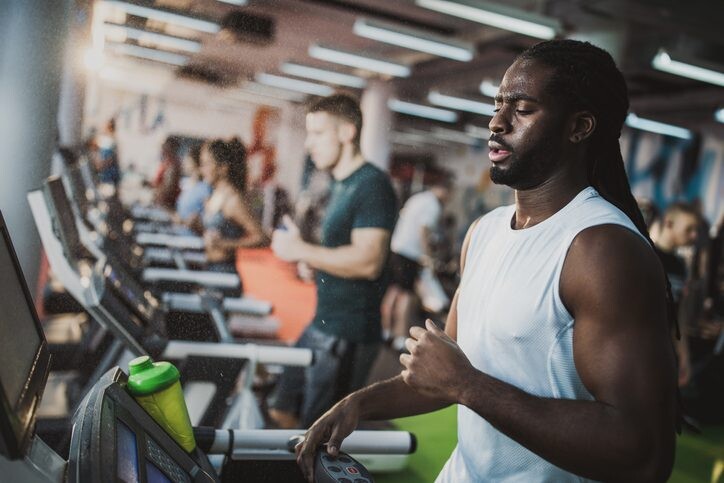
Adding two short, weekly strength training sessions to improve your power and efficiency
Starting training with a group to help you stay on track
Considering getting a coach to help you create a training plan that’s specific to your goals
2.- How can I avoid injuries as I increase mileage and intensity?
As you increase mileage and intensity, proper recovery and nutrition become even more important. Make sure you’re getting at least seven to nine hours of sleep each night, and always eat well to replenish calories burned after your runs. (Treats are OK!)
Other ways to prevent injuries include:
Get assessed by a physiotherapist to find out where your weak points are, to prevent injuries before they happen
Talk to a dietitian to figure out what (and how much) to eat before and after workouts
Add strength training
Consider getting a coach to help you periodize your training properly so you don’t do too much too soon
Include a stretching and mobility practice in your weekly routine to keep your joints and muscles moving well
3.- What are some advanced fuelling tips for long runs?
If you’re training for a longer race such as a half-marathon or marathon, you must practice your fuelling strategy ahead of time during your long runs. For most runners, it takes time for your body to get used to taking in fuel during a run, and trying that for the first time on race day can send you running for the porta potty. Other fuelling tips include:
Carbohydrate loading: In the days leading up to a race, it can be beneficial to increase your carbohydrate intake to maximize glycogen stores. Aim to consume around two to four grams of carbohydrates per kilogram of body weight per day before the race.
Pre-race meal: Consume a carbohydrate-rich meal two to four hours before the race starts. Aim for around one to four grams of carbohydrates per kilogram of body weight for this meal. Try different things (oatmeal, toast, cereal, etc.) to find out what works for you.
During the race: For longer races (e.g. marathons, ultras), aim to consume 30 to 60 grams of carbohydrates per hour, using energy gels, sports drinks, chews or easily digestible foods such as bananas or dates.
4.- Is there a difference between running outside and on the treadmill?
While many runners will argue that running outside is more fun, the treadmill is a great option when the outdoor conditions are dangerous or simply unpleasant. If you’re training for a race, though, it’s important to do most of your runs on the same surface you’ll be racing on–so unless you’re training for a treadmill race, do your best to get outside whenever possible.
5.- What other running gear would you recommend for someone who already has the basics?
If you already have the basics covered, consider investing in the following:
a smartwatch for data tracking
an extra pair of shoes to alternate between in training, to extend the life of your shoes
specific-use shoes, like a pair of racing shoes, winter running shoes if necessary, or trail shoes
a fuel belt or hydration vest for longer runs
(01/08/2024) ⚡AMPby Brittany Hambleton
Vicoty Chepngeno eager to make full marathon debut at Chevron Houston Marathon
After failing to make her full marathon debut at the 2023 Tokyo Marathon, Vicoty Chepngeno will finally do it at the Chevron Houston Marathon.
Philadelphia Half Marathon champion Vicoty Chepngeno will open her season with a full marathon debut at the Chevron Houston Marathon on Sunday, January 14.
Chepngeno set the course record with her 2022 Aramco Houston Half Marathon victory, winning in a time of 1:05:03, which is still the fastest half marathon time ever run in North America to date.
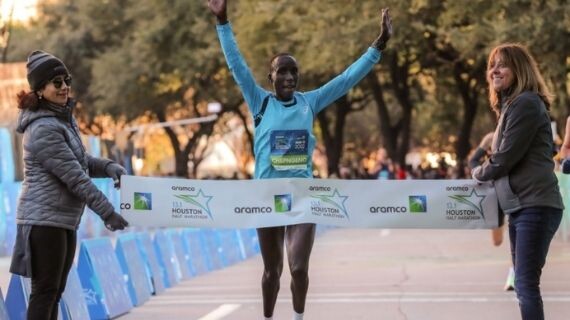
“I am very excited to make my marathon debut in Houston. It is a race I know well. This makes me feel at ease as I focus on what I need to do to achieve my goal of winning,” Chepngeno said as per Endurance Sports Wire.
The race will also feature the return of three-time champion Bruktayit Degefa of Ethiopia. These three wins leave Degefa tied on the most victories ever secured by one runner, all of which are among the six fastest times in race history.
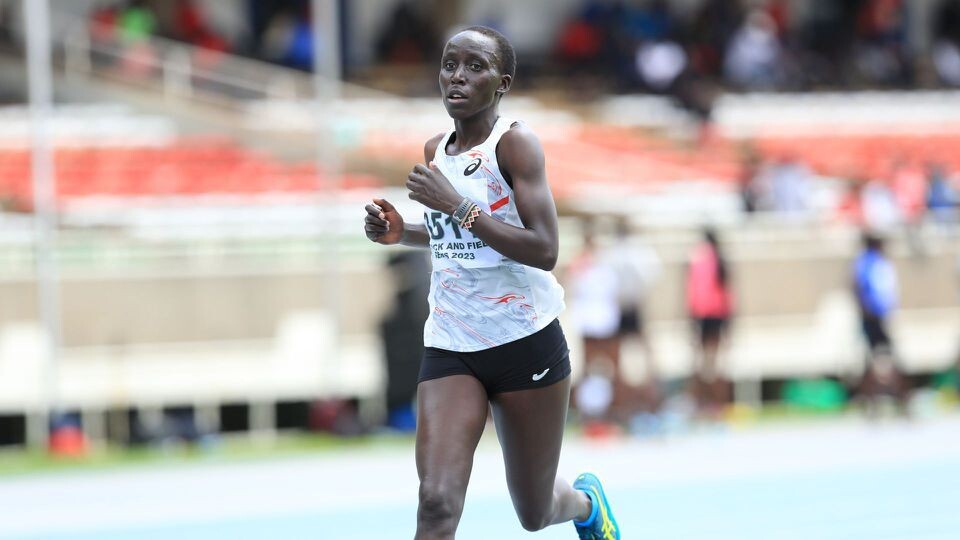
Chepngeno and Degefa will compete with top contenders including Canadian national record holder Natasha Wodak and three-time Rome Marathon champion Rahma Tusa of Ethiopia.
Meanwhile, last year’s men’s race came down to a sprint finish with Kenya’s Dominic Ondoro beating Ethiopia’s Tsedat Ayana and both will make a grand return this year. Ayana will take the opportunity for revenge, while Ondoro will look for his third Houston victory.
“I love the course, the city, and the friendly cheering crowds. To come to the start line, run a good race, and get a win will be wonderful,” said Ondoro, the two-time Houston Marathon champion.
Ethiopia’s Deresa Geleta will also be in the starting line, coming into the race with a personal best of 2:05:51. He has a chance to break the tape on what will be his 28th birthday.
In 2023, he was runner-up at the Dubai Marathon in February and won the Beijing Marathon in October. Also expected to be up front, are 2022 Chevron Houston Marathon winner James Ngandu of Kenya and Morocco’s Zouhair Talbi who was fifth in the 2023 Boston Marathon.
“You can always count on exciting storylines and dramatic finishes at the Chevron Houston Marathon.
“Fans will want to make sure they are in front of their TV or lined up on Lamar Street when the runners make that final turn toward the finish line,” said Carly Caulfield, Race Director and General Manager of the Houston Marathon Committee.
The races will be aired live on ABC13 in Houston and streamed around the world on ABC13's official portal featuring commentary from two-time Olympian and Boston Marathon champion Desiree “Des” Linden.
(01/08/2024) ⚡AMPby Abigael Wuafula
Chevron Houston Marathon
The Chevron Houston Marathon offers participants a unique running experience in America's fourth largest city. The fast, flat, scenic single-loop course has been ranked as the "fastest winter marathon" and "second fastest marathon overall" by Ultimate Guide To Marathons. Additionally, with more than 200,000 spectators annually, the Chevron Houston Marathon enjoys tremendous crowd support. Established in 1972, the Houston Marathon...
more...Colombia withdraws as host of 2027 Pan American Games
On Wednesday, the Pan American Sports Organization (PASO) announced in a statement that the committee has decided to withdraw the host city status from Barranquilla, Colombia, for the 2027 Pan American Games due to a breach of contract.
According to PASO, a meeting took place at the 2023 Pan American Games in Santiago, Chile, between the committee and Colombian authorities regarding Barranquilla 2027. The host city requested an extension of the financial deadlines set by PASO to fulfill contract expectations. PASO granted the hosts an extension, with the new deadline set for Dec. 30.
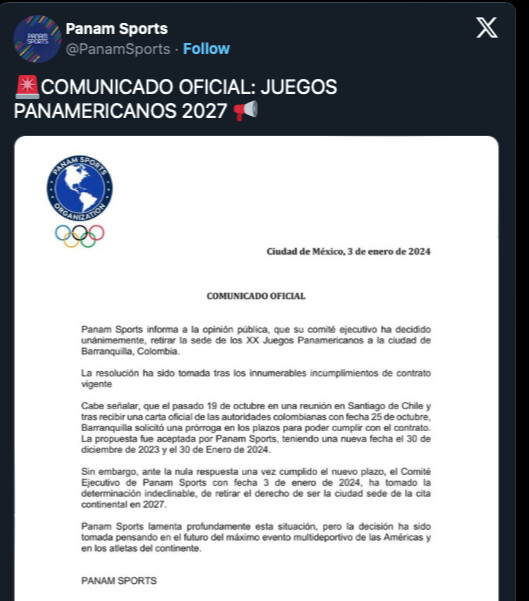
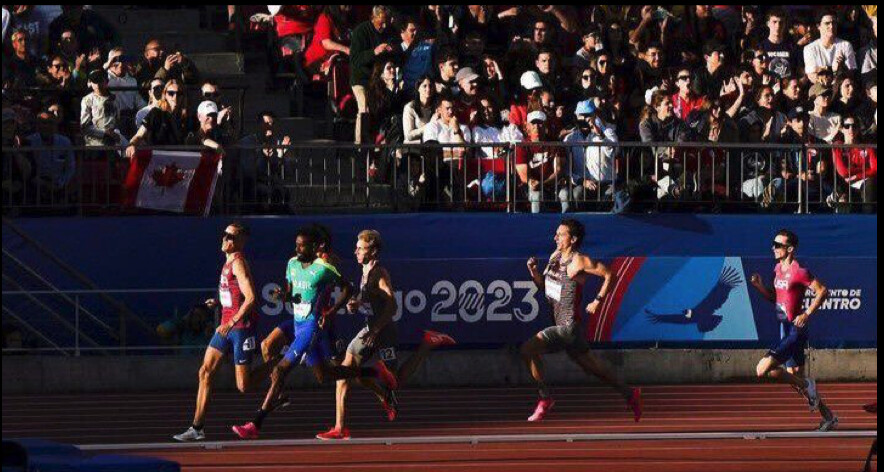
“Given the lack of response in accordance with the new financial deadline, the PASO executive committee made the decision on Jan. 3, 2024, to withdraw the right to be a host city of the continental event in 2027,” PASO said in a translated statement posted on social media.
The Federación Colombiana de Atletismo (FECODATLE), the national athletics federation of Colombia, submitted the bid for the 2027 Games on Aug. 27, 2021. They were one of three cities that expressed interest in hosting the major sporting event, with others being Buenos Aires, and Santa Cruz de la Sierra, Bolivia. Buenos Aires submitted a bid for the 2023 event, but withdrew for financial reasons.
“Charles Philibert-Thiboutot earns Canada’s first track medal at Pan American Games” — Canadian Running Magazine
View on the original site.
As Barranquilla was the sole bid, it was appointed as the host city. Large multi-sporting events outside of the Olympics have recently grappled with the costs of staging an event of this magnitude. Recently, the state of Victoria, Australia, pulled out of the 2026 Commonwealth Games due to the exponential costs associated with the Games.
The Pan American Games is a multi-sport event held every four years in the year before the Summer Olympic Games. It is the second oldest continental games globally, originating in 1951 in Buenos Aires. Since then, the games have been held in various cities across North and South America, including Mexico City, Rio de Janeiro and Toronto. The most recent event was held in Santiago, Chile, in late October, where Team Canada won a total of 164 medals, including 46 gold
(01/07/2024) ⚡AMPby Running Magazine
5 creative ways to unlock your running potential
Every runner seeks the elusive formula for peak performance, and while traditional strategies play a vital role, exploring unconventional avenues can unearth untapped potential. Performance coaches, authors and the hosts of a new podcast called Farewell, Brad Stulberg and Steve Magness, recently shared some innovative ways to tap into your best performance.
These methods, adapted from the training of legendary ultrarunner Courtney Dauwalter, Kona Ironman champ Chelsea Sodaro, and Canadian Olympic champ decathlete Damian Warner, can help you build an arsenal of tools that will allow you to become your best running self, whatever your goals may be. Look Embrace curiosity over fear
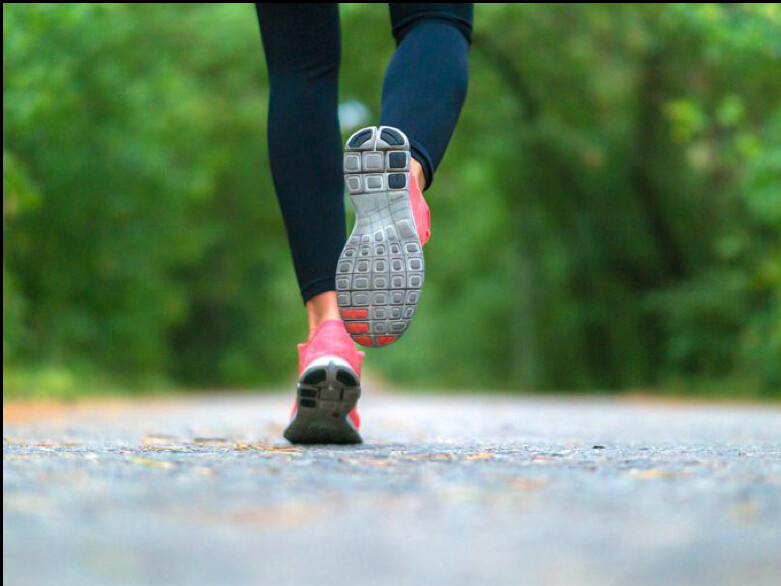
In the premiere episode of Farewell, Stulberg interviews ultrarunning GOAT Dauwaulter, whose 2023 season saw her winning the triple crown of ultramarathons (UTMB, Western States 100 and Hardrock 100). Dauwaulter is known for her curiosity-based approach to racing and says that whenever she works her way through a unique challenge, she puts it into her “filing cabinet” of experiences built through more than a decade of running ultras.Consider approaching challenges with curiosity rather than fear.

Dauwaulter’s journey started with curiosity-driven road marathons, leading her to conquer ultramarathons and achieve astonishing feats. When faced with a daunting task, adopt a mindset of exploration, saying to yourself: “let’s just see what happens,” rather than feeling like you must succeed at all costs. The unexpected outcomes might surprise you and expand your perceived limits.Use the power of “yes”
Chelsea Sodaro, the Kona Ironman world champ winner, draws inspiration from a mantra the athlete and her husband taught their daughter when she was going through a “no” phase—“yes, yes, yes.” This simple yet potent affirmation becomes a guiding force during challenging moments. Applying this mantra encourages a commitment to embrace difficulties and lean into the hard aspects of training. The next time you encounter a tough run or race, channel the spirit of “yes, yes, yes” to shift from resistance to resilience.Less is more: subtract to succeed
Stulberg suggests challenging the instinct to add more when faced with a hurdle. Research shows that humans tend to be “adders,” inclined to incorporate new strategies, rather than simply subtracting impediments. When striving for behaviour change, consider subtracting obstacles instead of seeking additional solutions. Reflect on what you can eliminate or modify to clear the path to success, allowing simplicity to fuel progress.Consistency trumps perfect practice
Through several decades of elite competition, Canadian Olympic champion decathlete Damian Warner has learned the importance of consistency over perfection. His coach’s mantra—that there’s no such thing as a bad practice—highlights the importance of routine, unexceptional training days. Warner’s gold medal-winning experience underscores the power of sustained, consistent effort, even when conditions are less than ideal. Recognize that excellence is often built through everyday dedication rather than sporadic extraordinary performances.You are not your thoughts
In overcoming mental health challenges like OCD and anxiety, Sodaro shares a unique strategy—naming her brain (she calls hers Regina, after the character in the movie Mean Girls). By personifying intrusive thoughts, she creates distance between herself and her mental struggles. Runners grappling with mental hurdles can apply this concept, acknowledging that their thoughts don’t define them. Naming and dismissing unwanted thoughts can provide mental clarity and resilience during demanding runs.Ultrarunner Adam Campbell’s tips to master your mid-race mindset” — Canadian Running Magazine
View on the original site.
In your pursuit of optimal running performance, integrating these unconventional approaches can inject a fresh perspective, foster growth, and aid in unlocking your true potential. Remember, innovation often lies in the willingness to explore the uncharted paths of curiosity, affirmation, simplicity, consistency and mental resilience.
(01/07/2024) ⚡AMPby Running Magazine
Ketema stuns with 2:16:07 marathon debut in Dubai
Ethiopia’s Tigist Ketema made a stunning debut over the classic distance to win the Dubai Marathon in 2:16:07 on Sunday (7). Compatriot Addisu Gobena, another marathon debutant and just 19 years of age, won the men’s race at the World Athletics Label road race in 2:05:01.
Running on Dubai’s renowned super flat course that mainly stretches on Jumeirah Beach Road, Ketema smashed the course record by more than a minute. The 25-year-old, who had previously been an 800m specialist and had never competed at any distance farther than 10km, now moves to eighth on the world all-time list.
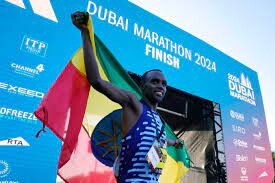
Just 18 months ago, her time would have also been an Ethiopian record, but she now sits third on her country’s all-time list behind world record-holder Tigist Assefa and world champion Amane Beriso.
Fellow Ethiopians Ruti Aga and defending champion Dera Dida took second and third places with 2:18:09 and 2:19:29 respectively. Fourth-placed German Melat Kejeta, returning from a maternity break, ran 2:21:47.
Gobena led an Ethiopian sweep of the podium in the men’s race. Prior to today, Gobena’s only known performance was a third-place finish at the Delhi Half Marathon three months ago, but the U20 athlete made a name for himself by winning in Dubai in 2:05:01.
Compatriots Lemi Dumecha and Dejene Megersa, another debutant, followed in second and third spots with 2:05:20 and 2:05:42.
(01/07/2024) ⚡AMP
Dubai Marathon
In its relatively brief history (the race was first held in 2000), the Dubai Marathon has become one of the fastest, most respected and the most lucrative marathon in the world in terms of prize money. Each year thousands of runners take to the roads in this beautiful city in the United Arab Emirates (UAE) for this extraordinary race starting...
more...Kebebe and Gudeta triumph in Xiamen
Ethiopian duo Asefa Boki Kebebe and Bekelech Gudeta were victorious at the C&D Xiamen Marathon on Sunday (7), winning the World Athletics Platinum Label road race in 2:06:46 and 2:22:54 respectively.
Kebebe upset a quality field that contained three sub-2:05 runners, outracing Kenya’s Felix Kirwa in the final seven kilometres to take the men’s title, falling just 27 seconds shy of the course record.

A leading group of more than 10 runners passed through 10km in 29:28 and 15km in 44:20. After the leaders hit the 20km mark in 59:08, defending champion Philimon Kiptoo Kipchumba and fellow Kenyan Kibiwott Kandie, the fastest entrant with a personal best of 2:04:48, both withdrew.
The pace decreased slightly after 20km but the leading group continued to shrink. At 25km there were only five runners left in the leading pack: Kebebe, Kirwa, Solomon Kirwa Yego of Kenya, Ethiopai’s Adane Kebede Gebre and Moroccan record-holder Othmane El Goumri.
Gebre dropped out of contention just before 30km, which the leaders reached in 1:29:13. After another kilometre, 31-year-old El Goumri tried to make a move. Although the Moroccan’s attempt went in vain, Yego failed to keep up. After the leading trio hit 35km in 1:44:43, El Goumri gradually faded away as well.
Kirwa stayed in the pole position as Kebebe followed closely behind. Kebede’s patience paid off as the Ethiopian made a decisive surge in the final kilometre to pass Kirwa, notching his third marathon title in China following victories in Changchun and Tianjin last year.
Kirwa – who has marathon titles in Yichang, Stockholm, Macao, Singapore and Antwerp – took second place in 2:06:52. El Goumri finished third in 2:07:18.
Like Kebebe, 26-year-old Gudeta also emerged victorious from a stacked field, but her victory was more comfortable.
An Ethiopian trio of Gudeta, Aberu Ayana Mulisa and Ftaw Zeray led the women’s race to 15km in 55:09 with the closest chaser, Morocco’s world bronze medallist Fatima Ezzahra Gardadi, lagging more than 40 seconds behind.
Zeray soon fell behind before the leading duo passed 20km and Mulisa, who achieved her PB of 2:21:54 last year in Seville, also failed to keep up with Gudeta near the halfway point.
Gudeta continued to extend her lead and went on to win in 2:22:54, shaving two seconds from the PB she set when winning in Prague two years ago.
Gardadi finished second in 2:24:12 taking almost a minute off her PB in what was her second race in Xiamen in five weeks following a 1:11:14 victory at the Xiamen Half Marathon.
China’s Zhang Deshun was third in 2:26:53.
(01/07/2024) ⚡AMPby Vincent Wu for World Athletics
CD XIAMEN INTERNATIONAL MARATHON
The C&D Xiamen International Marathon is an annual marathon race held in January in the coastal city of Xiamen in Fujian province, People’s Republic of China. Every January, the first medal of marathon race around the world is awarded here. The race has become a golden name card of Xiamen, showing its splendor to the whole world.It is one of...
more...Defending champion Philimon Kipchumba faces stern test at Xiamen Marathon
Defending champion Philimon Kiptoo Kipchumba will be out to defend his Xiamen Marathon title as he is up against a strong field.
Defending champion Philimon Kiptoo Kipchumba will be hoping to defend his title as he gears up to face tough opponents at the Xiamen Marathon on Sunday, January 7.
Kipchumba will face a stern test since 12 men, including the Kenyan, have personal best times faster than the course record of 2:06:19 set by Moses Mosop in 2015.

The 25-year-old Kenyan will arrive in Xiamen with high spirits since he remained unbeaten last year, winning all three of his marathon races and he will keenly be hoping to maintain the same momentum this season.
After a 2:10:47 victory in Hong Kong last February, he clocked 2:08:04 to win in Xiamen and continued his winning streak in Shanghai in November with a winning mark of 2:05:35, beating Mosop’s course record in Xiamen to become the Chinese all-comers’ record-holder.
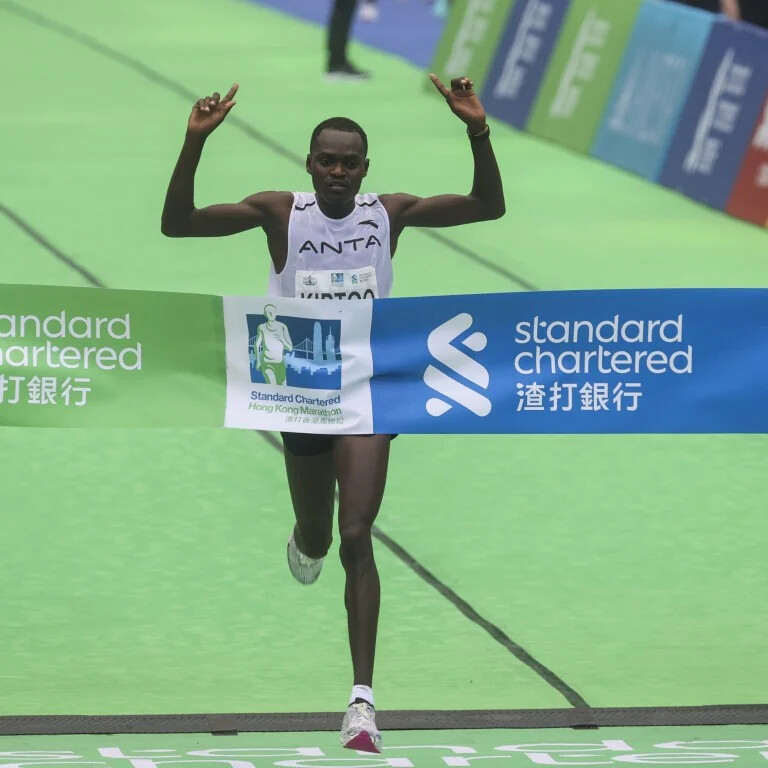
Former world half marathon record-holder Kibiwott Kandie will also be pursuing his first-ever marathon title in Xiamen.
Chalu Deso of Ethiopia is also a formidable competitor after finishing seventh behind Kandie in Valencia last month in 2:05:14 and his career best of 2:04:53 was also achieved in the Spanish city in 2020.
Last year, Deso claimed the Tokyo Marathon title in 2:05:22 and he also owns marathon titles in Paris and Porto to his name. After outings in Nanjing and Dalian in 2018, the Xiamen Marathon will be Deso’s third race in China.
Philemon Kiplimo of Kenya is another sub-2:05 runner in the field and unlike Kandie and Deso, Kiplimo will arrive in the Chinese coastal city on fresh legs. His last marathon race was contested more than three months ago when he clocked a PB of 2:04:56 to finish eighth in Berlin.
Also toeing the line are several sub-2:06 runners, including Moroccan record-holder Othmane El Goumri, who set a PB of 2:05:12 to finish second in Barcelona last March and went on to win the Sydney Marathon in 2:08:20 six months later.
Meanwhile, the women’s race will see Ethiopia’s Gotytom Gebreslase also take on a tough field. The Ethiopian clocked a Personal Best time of 2:18:11 when claiming the world title in Oregon in July 2022.
She also registered another sub-2:20 mark when finishing third at the 2022 Tokyo Marathon in 2:18:18 and took a 2:20:09 victory at the Berlin Marathon in 2021.
Fellow Ethiopian Megertu Alemu is the fastest woman on paper with a career-best of 2:17:09 and will be joined by Ruti Aga, also from Ethiopia.
Other women to watch in the field include Tanzanian marathon and half marathon record-holder Magdalena Shauri, whose PB of 2:18:41 was set last September when finishing third at the Berlin Marathon, as well as Fatima Ezzahra Gardadi of Morocco, a 2:25:03 performer who claimed the marathon bronze medal at last year’s World Championships in Budapest.
(01/06/2024) ⚡AMPby Abigael Wuafula
CD XIAMEN INTERNATIONAL MARATHON
The C&D Xiamen International Marathon is an annual marathon race held in January in the coastal city of Xiamen in Fujian province, People’s Republic of China. Every January, the first medal of marathon race around the world is awarded here. The race has become a golden name card of Xiamen, showing its splendor to the whole world.It is one of...
more...Agnes Ngetich to attack 10km world record in Valencia
Agnes Ngetich is eager to break the 10km world record when she heads to the 10K Valencia Ibercaja.
Trailblazing athlete Agnes Ngetich will attack the 10km road race when she heads to the 16th edition of the 10K Valencia Ibercaja on Sunday 14 January.
The race, which has already closed its registrations after exhausting the available numbers, will feature more than 100 elite athletes from fifteen different nationalities in search of their best marks in the city of running.

Valencia is known to produce faster times and world records with the current men’s world record that was set in 2020 by Rhonex Kipruto (26:24) still in place.
Ngetich will be hoping to go one step better with the aim to improve her best time achieved in Lille (France) in 2023. At the time, she was only 12 seconds behind the world record held by Yalemzerf Yehualaw (Castellón 2022, 29:14).

The coordinator of the elite athletes of the race, José Enrique Muñoz Acuña, has assured that the athlete will be keen to arrive at the starting line in top form to try to unseat the world record of the Ethiopian.
Ugandan athlete Jacob Kiplimo, current world record holder in the half marathon headlines the men’s field.
Rodrigue Kwizera (Burundi, 26:56), Pietro Riva (Italy, 27:50), and Richard Douma (Netherlands, 28:08) will also be in the mix.
Also on the starting line will be the refugee athlete from South Sudan who has recently obtained Swiss nationality Dominic Lobalu, and won the last edition of the 10K.
Abdessamad Oukhelfen will lead the Spanish elite in men and Agueda Marques in women, who come to the 10K in excellent shape and with great ambitions.
(01/06/2024) ⚡AMPby Abigael Wuafula
10k Valencia Trinidad Alfonso
Around the corner we have one more edition of the 10K Valencia Ibercaja, organized one more year by the C. 10K VALENCIA Athletics premiering the running season in Valencia. It is a massive urban race with more than 3,000 registered annually of 10 kilometers, where the maximum duration of the test will be 1 hour 40 minutes (100 minutes). The...
more...Blink 182 and Kardashian star wants to run a marathon
The drummer of Blink 182, Travis Barker, has found a new passion and has lofty goals for the year ahead. On New Year’s Eve, the 48-year-old completed his first half-marathon in Santa Monica, Calif., and now he has his eyes set on 42.2 km at the 2024 Los Angeles Marathon on March 17.
Barker finished the half-marathon in 2:08:57, averaging a pace of six minutes and seven seconds per kilometre and placing 32nd overall out of 59 runners. Barker had family and friends at the race to cheer him on for his debut, including his wife, reality TV and fashion megastar Kourtney Kardashian.
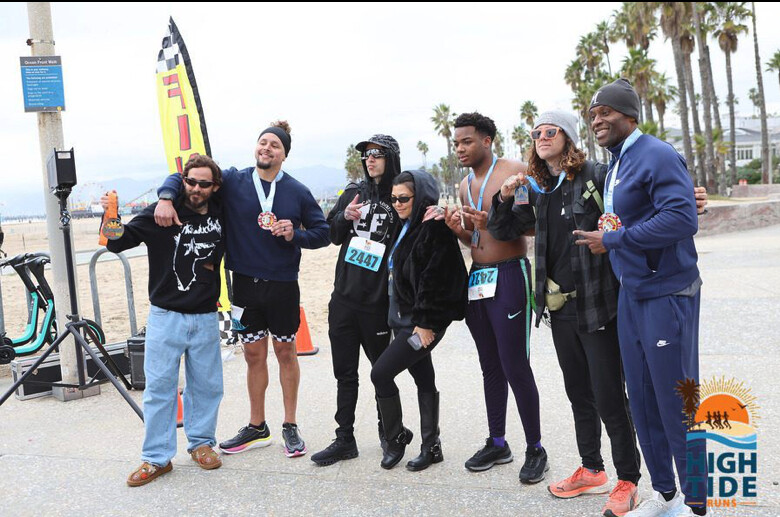
Kardashian was seen sporting Barker’s finisher medal afterward. His first half-marathon capped off a big year for Barker. In November, the couple had their first child together, Rocky Thirteen.
“Ending 2023 with a bang,” the drummer captioned his post on Instagram. When asked about his next race, Barker revealed his plans to run the LA Marathon.
Barker’s training for the half did not go smoothly. The drummer said he had to halt his training due to an iliopsoas tendon strain a few weeks before the race. He posted that he knows the marathon won’t be easy, but he trusts the guidance he’s received from Stanford neuroscience professor Andrew Huberman and human performance professor Andy Galpin.
Now that the Kardashians are attending races and Taylor Swift is doing fartlek workouts has our sport officially reached its peak?
(01/06/2024) ⚡AMPStrava's Year in Sport reports Gen Z's like running short and fast
Is the era of high-mileage runs a thing of the past? Strava, the globally acclaimed GPS and fitness tracking app, has just released its year-end trends report, and the findings are interesting. Running once again claimed the title of the most popular activity upload, but what caught everyone’s attention was the distinct running behaviour of different generations, especially the shorter runs by Gen Z’s.
Gen Z, aged 11-26, emerged as the speed demons, boasting the fastest average pace (5:14/km) among the four generations surveyed. However, what turned heads was their knack for shorter runs, with an average distance of 5.3 kilometres (3.3 miles). In a surprising twist, baby boomers, aged 57-75, may not win the speed race, but they certainly win the endurance marathon, consistently logging the longest average run of 6.4 kilometres (4 miles).
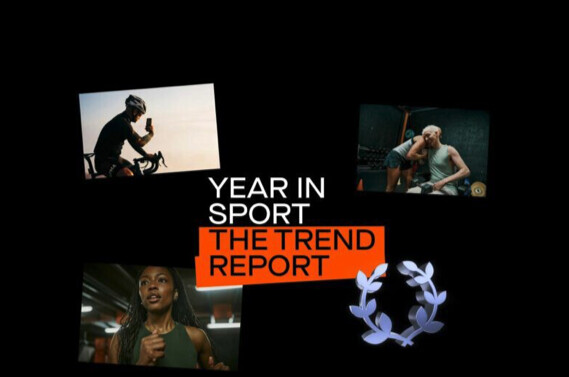
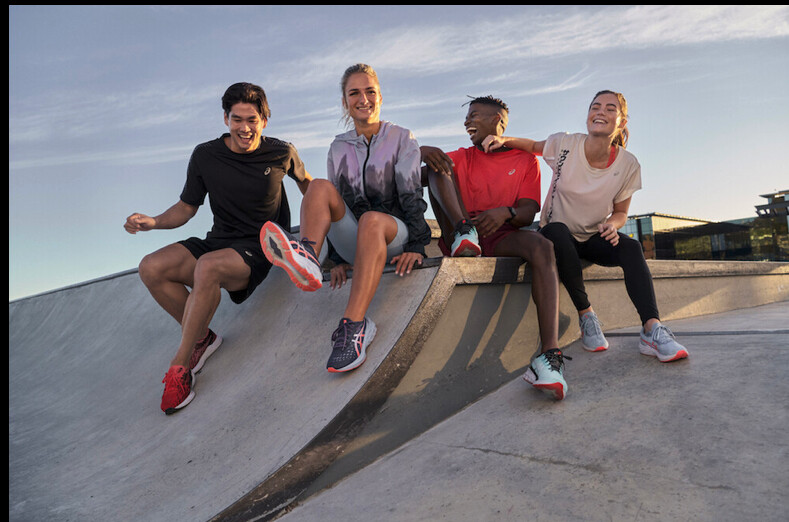
According to Strava’s report, Gen Z not only sprints but does so with a purpose—athletic performance. These younguns are the least likely to exercise for health alone, preferring the thrill of competition or the camaraderie of friends, run clubs or group fitness activities. Time and work emerged as their primary constraints, a testament to their busy lifestyles and limited time for exercise.
The Year in Sport data was compiled from Oct. 1, 2022, to Sept. 30, 2023 and included insights from 6,990 respondents worldwide. Boomers, in contrast to Gen Z, leaned towards cycling, being twice as likely to upload rides than runs. Gen Z, on the other hand, flipped the script, almost doubling the likelihood of uploading runs compared to rides, reflecting the surge in race participation in 2023.
This trend among Gen Z isn’t an isolated finding. A 2022 U.S. census report revealed that nearly 60 per cent of Gen Z adults engage in running or jogging for fitness at least once a week, far surpassing the general population’s 26 per cent.
Strava’s report also sheds light on the evolving landscape of athletic footwear preferences. Hoka, On and Asics emerged as top choices on Strava in 2023, indicating a growing affinity for newer and innovative athletic brands among runners.
While running dominated uploads on Strava for the second consecutive year, the rise of trail running and hiking is a noteworthy trend, experiencing a remarkable 20 per cent increase from 2022.
(01/06/2024) ⚡AMPNew Chipotle and Strava challenge offers a year's worth of free bowls
We’re only a few days into 2024, and the fast-food chain Chipotle Mexican Grill and Strava have already released the collaboration of the year. Runners, brace yourselves for a potential year-long supply of free Chipotle Lifestyle Bowls–all it takes is to become a Local Legend on a few Strava segments.
Chipotle spilled the beans in a recent study, confirming that nearly seven out of 10 consumers are avid runners who make Chipotle their go-to post-training treat. Joining forces with Strava, they’ve rolled out “Chipotle segments” –exclusive stretches of roads and trails where athletes can compete for glory, chasing the fastest times and efforts on the leaderboard. Here’s the twist–the athlete who holds the Local Legend title in six U.S. cities will receive free Chipotle Lifestyle Bowls for a year.

Local Legends are Strava’s nod to dedicated athletes. They crown the person running a particular segment the most times in a rolling 90-day window. It’s not about pace or speed; it’s about pure dedication.
“Runners chase popular Strava segment in Denver airport” — Canadian Running Magazine
This sizzling promotion lights up in New York, Los Angeles, Chicago, Washington D.C., Denver and Columbus, Ohio. But fear not, Canadian runners! Let’s crank up the buzz on Chipotle socials and try to bring this epic challenge to cities across Canada. The race is on from Jan. 2 to 31, 2024.
If you don’t live in, or aren’t visiting, any of the six cities anytime soon, Chipotle has come up with another contest for everyone with the “No Quitters Challenge.” Launching on Strava on Jan. 15, this worldwide streak-based challenge rewards fans committed to healthy habits post-Quitters Day, Jan 12. Completing the challenge earns you a shot at a free side of guac, redeemable at any Chipotle Mexican Grill, if you can log at least 40 minutes of activity each week on Strava from Jan. 15 through Jan. 28.
(01/06/2024) ⚡AMPby Running Magazine
Nike Alphafly 3 sells out in less than 24 hours
One of the highest-profile carbon-plated running shoes, the Nike Alphafly 3, hit Canadian stores on Jan. 4, and in 24 hours, it has already sold out online and in-store.The carbon-plated shoe Kenya’s Kelvin Kiptum wore to set the marathon world record at the 2023 Chicago Marathon is the lightest and fastest version of the Nike Alphafly to date, and many runners tried to get their hands on a pair, which is selling for CAD $375.The shoe first made an appearance as a prototype on the feet of Sifan Hassan at the 2023 London Marathon, which she won. Nike formally announced the public release of the shoe in late November, naming Thursday as the global release date.
Some run specialty stores across Canada were sold out of the shoe in a matter of minutes. Nigel Fick and Sarah Deas, the owners of Culture Athletics, an independent running store in Toronto’s east end, say they’ve never seen demand for any shoe this high. “Our men’s size range sold out in a minute, with sizes 9.5 to 11, going within seconds,” says Fick. “We had hundreds of customers refreshing the page, waiting for the 10 a.m. launch.”Deas told Canadian Running that they have been receiving emails about the Alphafly 3 for two months. “We have not seen this demand for a shoe launch since the first Alphafly in 2020–it’s been wild,” says Deas.The popularity of the Alphafly 3 is backed by the Nike’s marketing strategy, and defined by the performances of world-class athletes. But the hype around the shoe is also backed by science. Nike’s competitive advantage lies in the innovative system of speed embedded in the Alphafly 3. This proprietary combination features ZoomX foam, Air Zoom units and a carbon-fibre Flyplate, powering the Alphafly and giving distance runners a distinct edge.
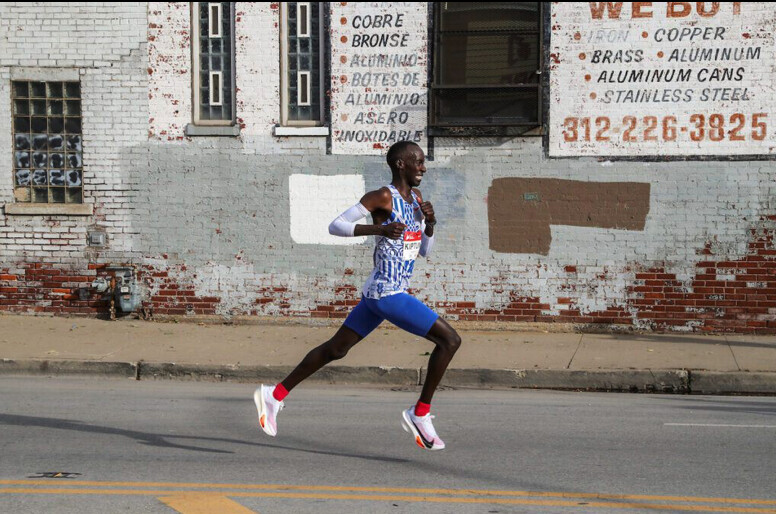
The Nike Alphafly 3 is also built on the success of its predecessors, with Eliud Kipchoge achieving the seemingly impossible in the OG Alphafly, breaking the two-hour barrier at the INEOS-1:59 event in 2019. In 2022, wearing the Alphafly 2, Kipchoge lowered his world record to 2:01:09 at the Berlin Marathon.
Those looking to wear the Alphafly 3 for their spring marathon may have to wait a little longer. Culture Athletics and other independent retailers will not receive additional stock until the second colourway is released in April.
‘This is the first time the prototype colourway of an Alphafly or Vaporfly has been made available for run specialty retailers in Canada,” Fick says, talking about the buzz of the new shoe. “This launch has been exciting for us and all of our run community.”
(01/06/2024) ⚡AMPGrenadian Kirani James Teams Up with Chris Lawrence for Paris 2024 Olympics Preparation
Kirani James, the distinguished Grenadian 400m runner and Olympic medalist, is embarking on a new phase in his illustrious career as he prepares for the Paris 2024 Olympics. Under the guidance of his new coach Chris Lawrence, formerly an assistant to the late Harvey Glance, James is setting his sights on his fourth Olympic appearance.
This strategic coaching change aims to build upon Kirani James’ already impressive track record, which includes three Olympic medals in the 400 meters.
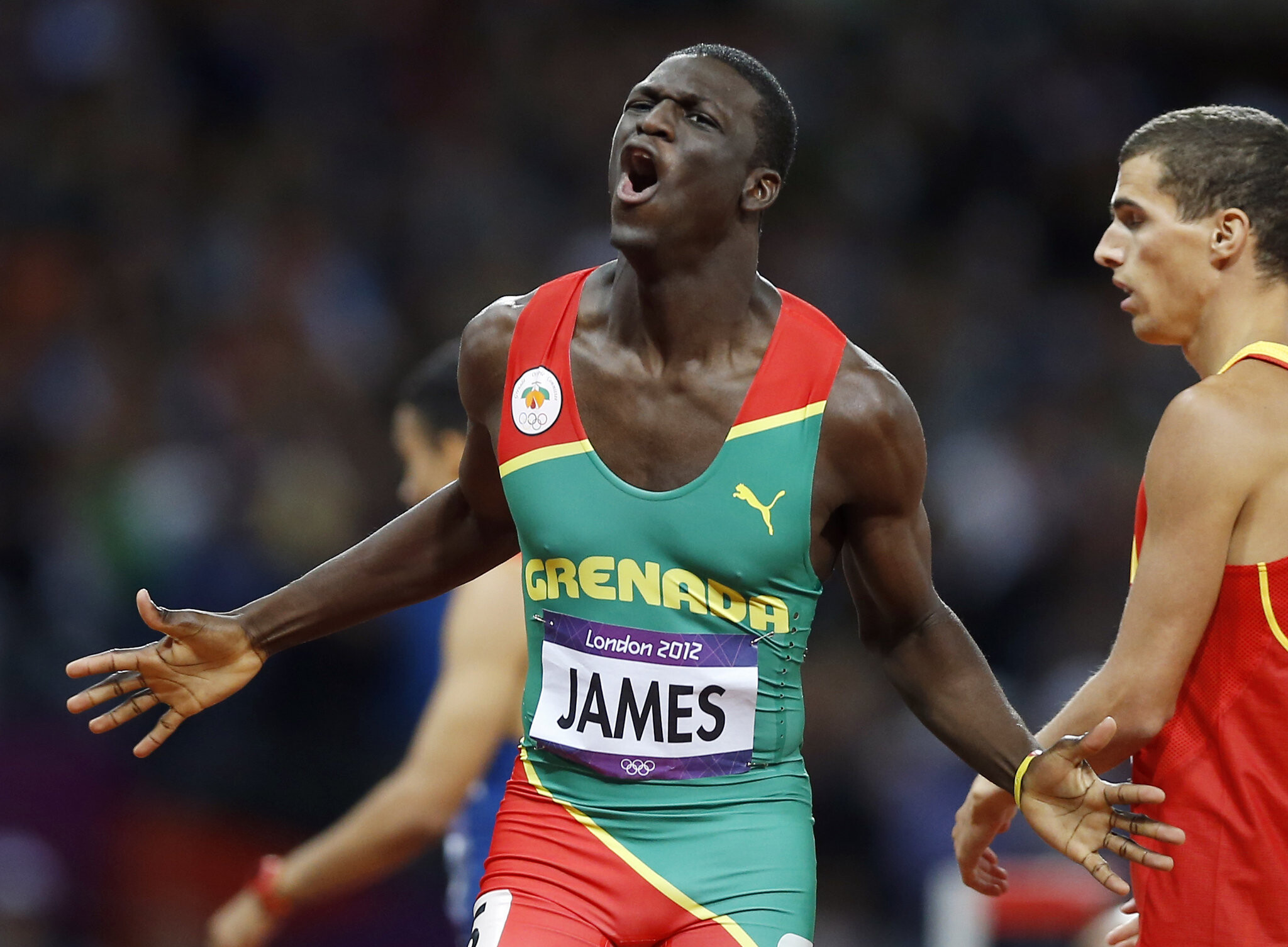
Kirani James Sets Sights on Paris Olympics under Guidance of Coach Lawrence
Kirani James concluded the previous season on a high note with a win at the Diamond League Final in Eugene. His decision to work with Lawrence reflects his commitment to continuing the legacy of Coach Glance. “I’m pleased that Chris will be able to accompany and help aide me to continue the journey and path set out by coach Glance,” James commented.
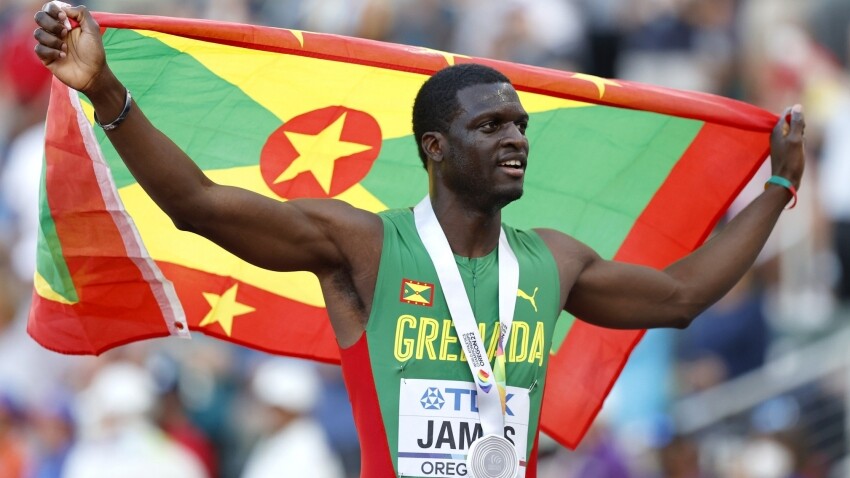
Kirani James’ journey in athletics has been nothing short of remarkable. He burst onto the scene with victories at the Carifta Games and the World Youth Championships in the 200m. He continued his rise by winning the World U20 (Junior) 400m title in 2010. His crowning achievement came with a gold medal at the 2012 London Olympics, followed by silver at the 2016 Rio Olympics and bronze at the 2020 Tokyo Olympics, making him the first athlete to win all three medals in the 100-year history of the event.
Additionally, James secured a silver medal at the 2022 World Championships in Eugene and a bronze at the 2015 World Championships in Beijing. He also claimed two Diamond League titles in 2022 and 2023, along with a Commonwealth Games gold medal in 2014. These accomplishments have established James as one of the elite athletes in the 400m discipline and Grenada’s first and only Olympic medalist.
As James and Lawrence collaborate towards the Paris Olympics, the athletics world will be eagerly watching. With his resilience, dedication, and proven track record, James is poised to add yet another chapter to his already legendary career in the world of athletics.
(01/05/2024) ⚡AMPby Alfonz Juck
Paris 2024 Olympic Games
For this historic event, the City of Light is thinking big! Visitors will be able to watch events at top sporting venues in Paris and the Paris region, as well as at emblematic monuments in the capital visited by several millions of tourists each year. The promise of exceptional moments to experience in an exceptional setting! A great way to...
more...Five creative ways to unlock your running potential
Every runner seeks the elusive formula for peak performance, and while traditional strategies play a vital role, exploring unconventional avenues can unearth untapped potential. Performance coaches, authors and the hosts of a new podcast called Farewell, Brad Stulberg and Steve Magness, recently shared some innovative ways to tap into your best performance.
These methods, adapted from the training of legendary ultrarunner Courtney Dauwalter, Kona Ironman champ Chelsea Sodaro, and Canadian Olympic champ decathlete Damian Warner, can help you build an arsenal of tools that will allow you to become your best running self, whatever your goals may be.
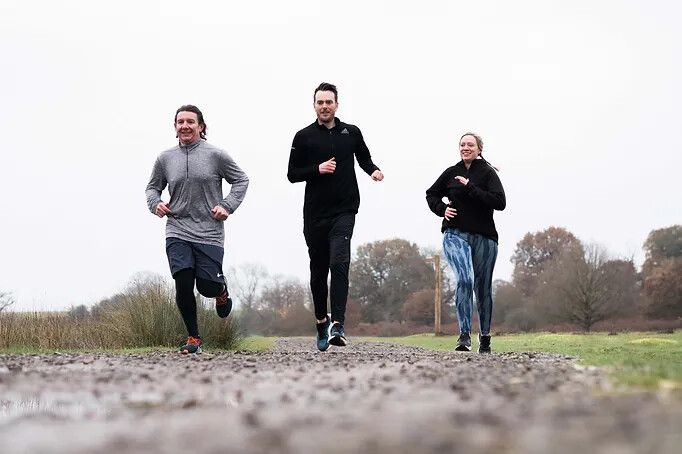
1.- Embrace curiosity over fear
In the premiere episode of Farewell, Stulberg interviews ultrarunning GOAT Dauwaulter, whose 2023 season saw her winning the triple crown of ultramarathons (UTMB, Western States 100 and Hardrock 100). Dauwaulter is known for her curiosity-based approach to racing and says that whenever she works her way through a unique challenge, she puts it into her “filing cabinet” of experiences built through more than a decade of running ultras.
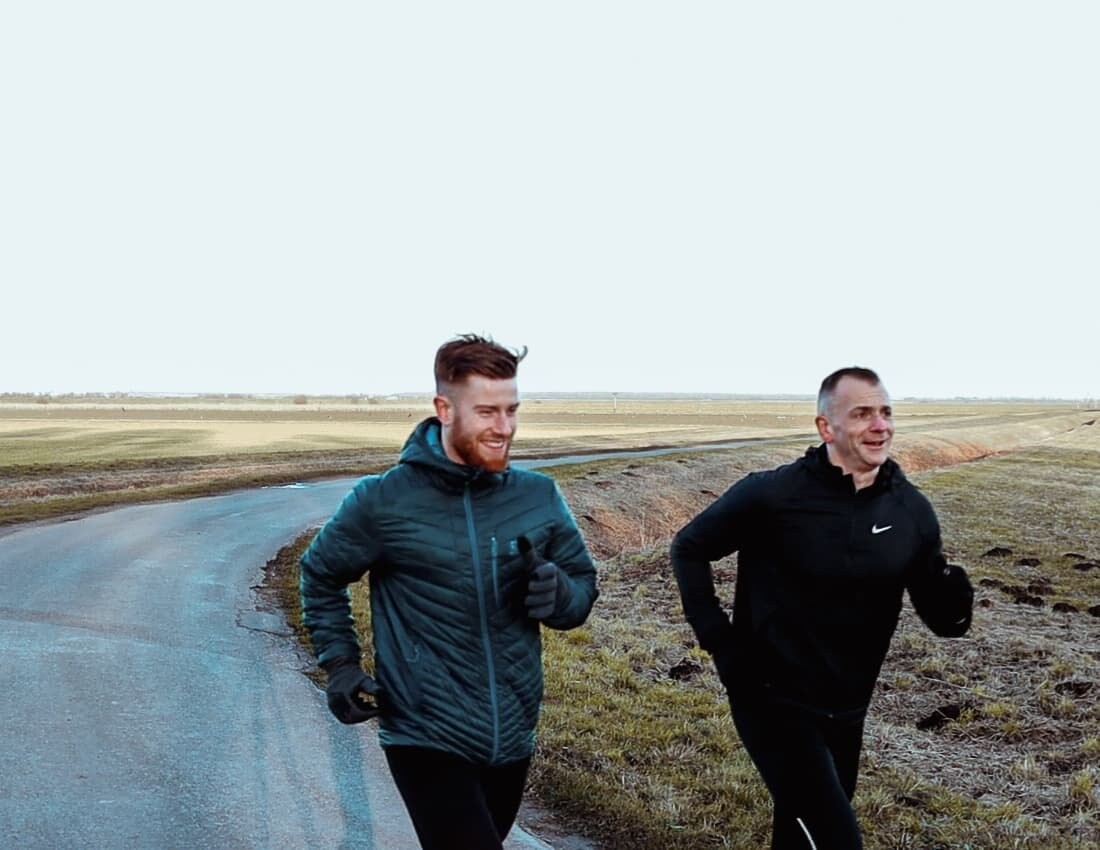
Consider approaching challenges with curiosity rather than fear. Dauwaulter’s journey started with curiosity-driven road marathons, leading her to conquer ultramarathons and achieve astonishing feats. When faced with a daunting task, adopt a mindset of exploration, saying to yourself: “let’s just see what happens,” rather than feeling like you must succeed at all costs. The unexpected outcomes might surprise you and expand your perceived limits.
2.- Use the power of “yes”
Chelsea Sodaro, the Kona Ironman world champ winner, draws inspiration from a mantra the athlete and her husband taught their daughter when she was going through a “no” phase—“yes, yes, yes.” This simple yet potent affirmation becomes a guiding force during challenging moments. Applying this mantra encourages a commitment to embrace difficulties and lean into the hard aspects of training. The next time you encounter a tough run or race, channel the spirit of “yes, yes, yes” to shift from resistance to resilience.
3.- Less is more: subtract to succeed
Stulberg suggests challenging the instinct to add more when faced with a hurdle. Research shows that humans tend to be “adders,” inclined to incorporate new strategies, rather than simply subtracting impediments. When striving for behaviour change, consider subtracting obstacles instead of seeking additional solutions. Reflect on what you can eliminate or modify to clear the path to success, allowing simplicity to fuel progress.
4.- Consistency trumps perfect practice
Through several decades of elite competition, Canadian Olympic champion decathlete Damian Warner has learned the importance of consistency over perfection. His coach’s mantra—that there’s no such thing as a bad practice—highlights the importance of routine, unexceptional training days. Warner’s gold medal-winning experience underscores the power of sustained, consistent effort, even when conditions are less than ideal. Recognize that excellence is often built through everyday dedication rather than sporadic extraordinary performances.
5.- You are not your thoughts
In overcoming mental health challenges like OCD and anxiety, Sodaro shares a unique strategy—naming her brain (she calls hers Regina, after the character in the movie Mean Girls). By personifying intrusive thoughts, she creates distance between herself and her mental struggles. Runners grappling with mental hurdles can apply this concept, acknowledging that their thoughts don’t define them. Naming and dismissing unwanted thoughts can provide mental clarity and resilience during demanding runs.
In your pursuit of optimal running performance, integrating these unconventional approaches can inject a fresh perspective, foster growth, and aid in unlocking your true potential. Remember, innovation often lies in the willingness to explore the uncharted paths of curiosity, affirmation, simplicity, consistency and mental resilience.
(01/05/2024) ⚡AMPby Keeley Milne
Blade runner Oscar Pistorius released on parole
Eleven years after shooting and killing Reeva Steenkamp through a bathroom door in their home in Pretoria, South Africa home, double-amputee runner and six-time Paralympic gold medallist Oscar Pistorius, 37, was released on parole on Friday.
On Valentine’s Day in 2013, Pistorius, known as the “Blade Runner,” fired numerous shots through a bathroom door in his home, killing Steenkamp, who was inside. The South African athletics star consistently denied intending to kill her, saying he shot her by mistake, believing she was an intruder.

Pistorius was initially convicted of the lesser charge of culpable homicide and sentenced to five years in prison, but after an appeal by prosecutors, he was found guilty of murder in 2016 and the sentence increased by a further six years. In 2017, according to a report in the Globe and Mail, his sentence was more than doubled, after South Africa’s Supreme Court of Appeal decided it was too lenient. In 2021, it was announced he would soon be eligible for parole, having served half his sentence.
South Africa’s Department of Corrections did not give details as to when and how Pistorius would be released, saying “Inmates and parolees are never paraded. Pistorius’ public profile does not make him different from other inmates nor warrant inconsistent treatment,” the Department of Corrections said in a statement Wednesday.
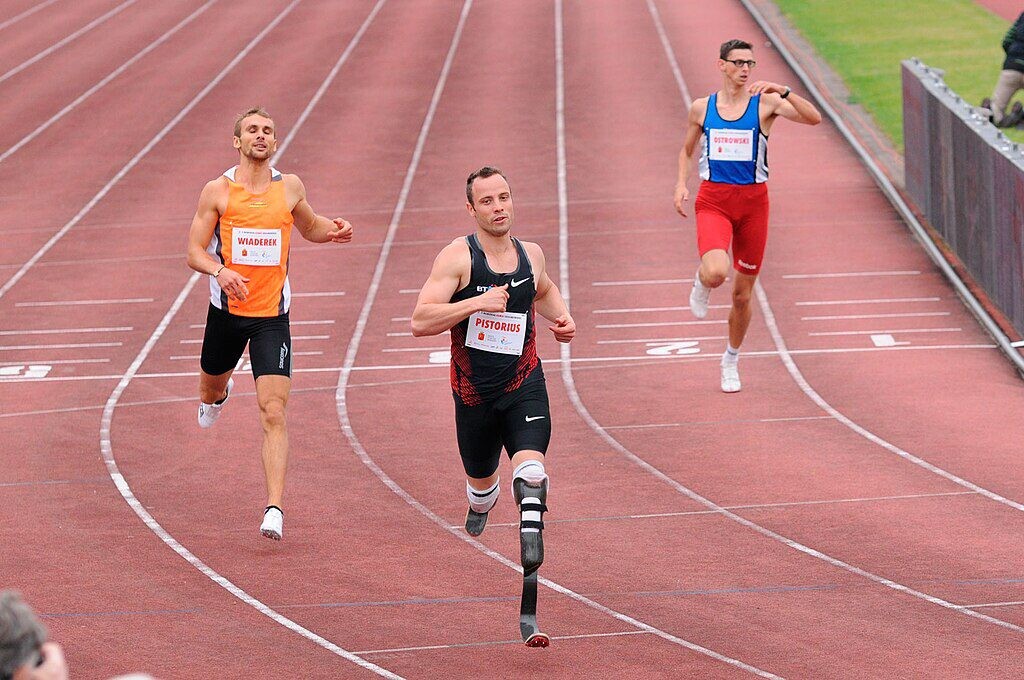
The 37-year-old will be under correctional supervision for the remainder of his murder sentence of 13 years and five months expires in December 2029. Pistorius will also undergo therapy for anger and gender-based violence issues, according to a report.
Pistorius competed in the 2004 Summer Paralympics in Athens, finishing third overall in the T44 100m and winning gold in the 200m; he went on to compete again in 2008, winning gold in the 100m, 200m and 400m. He wanted to compete against able-bodied runners, but the IAAF (now World Athletics) ruled that runners using carbon-fibre prosthetic “blades” had an unfair advantage and could not race against able-bodied athletes. Pistorius fought this ruling and won, and the rule was revoked, clearing the way for him to try to qualify for the 2008 Olympics in Beijing. (Further studies have also concluded that prosthetic blades do not confer an advantage over able-bodied runners.)
(01/05/2024) ⚡AMPby Marley Dickinson
Oscar Pistorius
Ethiopians Gebreslase, Alemu and Aga set to race in Xiamen
The Xiamen Marathon, a World Athletics Platinum Label road race, on Sunday (7) will witness the fastest marathon pack ever assembled in China, with 2022 world champion Gotytom Gebreslase heading a stacked field in the women’s race.
The 28-year-old Gebreslase of Ethiopia clocked her personal best of 2:18:11 when claiming the world title in Oregon in July 2022. She also registered another sub-2:20 mark when finishing third at the 2022 Tokyo Marathon in 2:18:18 and took a 2:20:09 victory at the Berlin Marathon in 2021.
Last year, Gebreslase clocked 2:24:34 to grab a silver medal at the World Athletics Championships Budapest 23, which remains her last outing over the classic distance.

It will be the first time for Gebreslase to compete in Xiamen, a southeastern Chinese city, and she will be targeting not only the title, but also the course record of 2:19:52 set by her compatriot Mare Dibaba back in 2015.
Fellow Ethiopian Megertu Alemu is the fastest woman on paper with a career best of 2:17:09 achieved last October when finishing third at the Chicago Marathon.
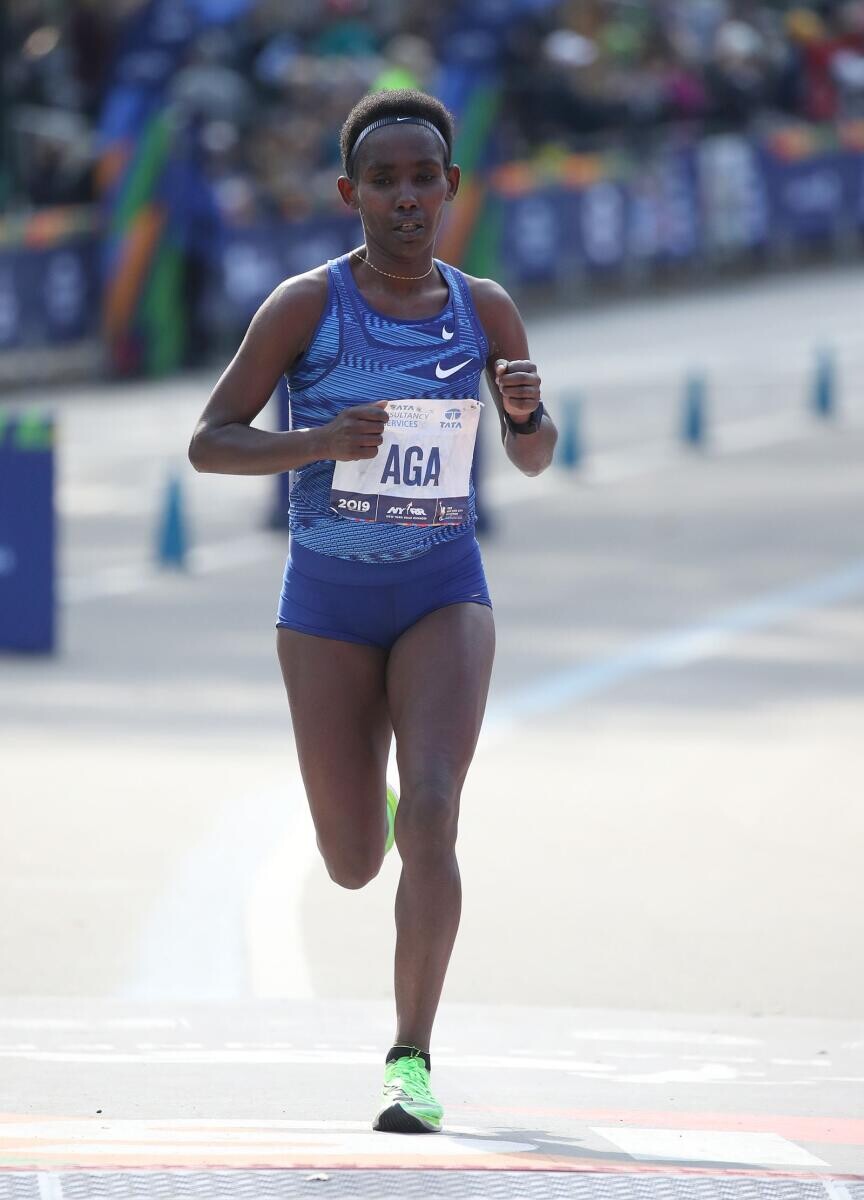
Aside from having the fastest PB of the field, the 26-year-old has shown great consistency in the past two years, registering sub-2:19 marks in all her four races including notching a 2:18:51 victory at the 2022 Seville Marathon and finishing second and third respectively in the 2022 and 2023 London Marathon races.
Ruti Aga, also from Ethiopia, is another serious title contender. The 29-year-old clocked a PB of 2:18:09 to win the Yellow River Estuary Marathon in Dongying, China, last October, improving the Chinese all-comers’ record.
Aga also won the Tokyo Marathon in 2:20:40 in 2019 and has earned three runner-up finishes in major marathon races, including a 2:18:34 second place in the 2018 Berlin Marathon.
Other women to watch in the field include Tanzanian marathon and half marathon record-holder Magdalena Shauri, whose PB of 2:18:41 was set last September when finishing third at the Berlin Marathon, as well as Fatima Ezzahra Gardadi of Morocco, a 2:25:03 performer who claimed the marathon bronze medal at last year’s World Championships in Budapest.
Kipchumba defends title
Defending champion Philimon Kiptoo Kipchumba will face a tough contest in the men’s race, as a total of 12 runners in the field own a career best time faster than the course record of 2:06:19 set by Moses Mosop of Kenya in 2015.
The 25-year-old Kipchumba will arrive in Xiamen with high spirits. He remained unbeaten last year, winning all three of his marathon races. After a 2:10:47 victory in Hong Kong last February, he clocked 2:08:04 to win in Xiamen and continued his winning streak in Shanghai in November with a winning mark of 2:05:35, beating Mosop’s course record in Xiamen to become the Chinese all-comers’ record-holder.
Kenyan half marathon record-holder Kibiwott Kandie is also on the rise. The 27-year-old registered a PB of 2:04:48 to finish sixth in Valencia one month ago and will be pursuing his first ever marathon title in Xiamen.
Ethiopia’s Chalu Deso, 26, is also a formidable competitor. He finished seventh behind Kandie in Valencia last month in 2:05:14 and his career best of 2:04:53 was also achieved in the Spanish city in 2020.
Last year, Deso claimed the Tokyo Marathon title in 2:05:22. He also has marathon titles in Paris and Porto to his name. After outings in Nanjing and Dalian in 2018, the Xiamen Marathon will be Deso’s third race in China.
Philemon Kiplimo of Kenya is another sub-2:05 runner in the field and unlike Kandie and Deso, Kiplimo will arrive in the Chinese coastal city on fresh legs. His last marathon race was contested more than three months ago when he clocked a PB of 2:04:56 to finish eighth in Berlin.
Also toeing the line are several sub-2:06 runners, including Moroccan record-holder Othmane El Goumri, who set a PB of 2:05:12 to finish second in Barcelona last March and went on to win the Sydney Marathon in 2:08:20 six months later.
(01/05/2024) ⚡AMPby World Athletics
CD XIAMEN INTERNATIONAL MARATHON
The C&D Xiamen International Marathon is an annual marathon race held in January in the coastal city of Xiamen in Fujian province, People’s Republic of China. Every January, the first medal of marathon race around the world is awarded here. The race has become a golden name card of Xiamen, showing its splendor to the whole world.It is one of...
more...Supported running benefits kids with cerebral palsy, study shows
In a groundbreaking initiative, children with cerebral palsy (CP) demonstrated remarkable improvements in enhanced cardiovascular fitness and mobility after participating in a study involving frame running, the University of Queensland News reported. Frame running involves using a wheeled frame with a saddle and body support, and was developed to assist people with CP or related neuromuscular disorders.
“The athlete steers the structure using his/her hands or arms,” the website explains. “Athletes can run long distances in a secure and stable bike-like structure. It gives the athletes the opportunity to move freely on their feet without the risk of falling.”

The Run4HealthCP program, led by Dr. Sarah Reedman at the University of Queensland, is focused on children aged 8 to 21 with CP. In a 12-week randomized frame running trial, participants with walking difficulties used the frames, showcasing the potential of this sport, which is slated for inclusion in the Brisbane 2032 Paralympic Games. Children participated in two 60-minute frame-running sessions weekly.
CP is the most common physical disability in childhood, and more than 600 children are diagnosed annually in Australia (the disease impacts two out of every 1,000 children annually in Canada).

Improved endurance and cardiovascular fitness
The outcomes of the clinical trial revealed remarkable improvements across a variety of health-related areas. Participants not only demonstrated increased endurance in running, but also quicker heart rate recovery, indicating improved cardiovascular health—a critical factor, given that individuals with CP face a threefold heightened risk of cardiovascular disease-related mortality compared to the general population. This statistic, unfortunately, has remained unchanged for three decades, making innovations like frame running crucial for the community.
“The improvements we’ve found so far in the clinical trial have been really interesting and across a number of different areas of health and wellbeing,” Dr. Reedman said. “We have seen that the athletes can not only run for longer, but their heart rate also returned to normal more quickly, which is really important because it shows the heart is healthy.”
Enhanced quality of life
Beyond the physical aspects, the study illuminated substantial improvements in participants’ quality of life. The ability to walk faster suggested improved movement efficiency, potentially reducing the physical toll on individuals with CP.
“We found the participants could walk faster, which shows we could potentially improve efficiency of movement,” Dr Reedman said. “It would make a big difference to people’s quality of life, because walking is very taxing on the body for people with CP, so if they’re using less energy, they’ll be less fatigued.”
The study also underscored the positive psychological impact of exercise on physical functioning and daily activities, especially considering that high-intensity exercise is often inaccessible to individuals with high support needs. The Run4Health program had initially catered to 12 participants, but has since expanded to over 100.
The program’s success has opened avenues for further research, with plans to include assessments of bone density and gross motor function. Operating across six sites in Australia, the initiative marks a significant stride toward empowering individuals with CP and transforming perceptions around accessibility and physical activity.
A similar study has been ongoing in Canada. The CCPSA, in collaboration with the Conductive Education Academy and the Ontario Cerebral Palsy Sports Association, delivered a pilot program to introduce frame running in the Greater Toronto Area in 2021. The CCPSA is in discussions with Athletics Canada to help develop an athlete pathway for frame running in Canada.
(01/04/2024) ⚡AMPby Keeley Milne
Golden girl Gerda eyes fifth Dubai Marathon 10km title
With four successive victories to her name in the annual 10km Road Race, golden girl Gerda Steyn will be red-hot favorite to make it five-in-a-row when the Dubai Marathon gets underway on Sunday.
Held under the auspices of the Dubai Sports Council, the Dubai Marathon’s 10km event is always the most popular race in terms of athlete number. But if any woman is to wrestle the crown from Steyn, they will need to be in the form of their lives.
“I’ve been very fortunate to have enjoyed a wonderful year in 2023 with the three most memorable days being when I won the Two Oceans Marathon and the Comrades Marathon in South Africa, followed by running a new marathon national record in Spain in December,” said the modest 33-year-old Dubai-based South African.
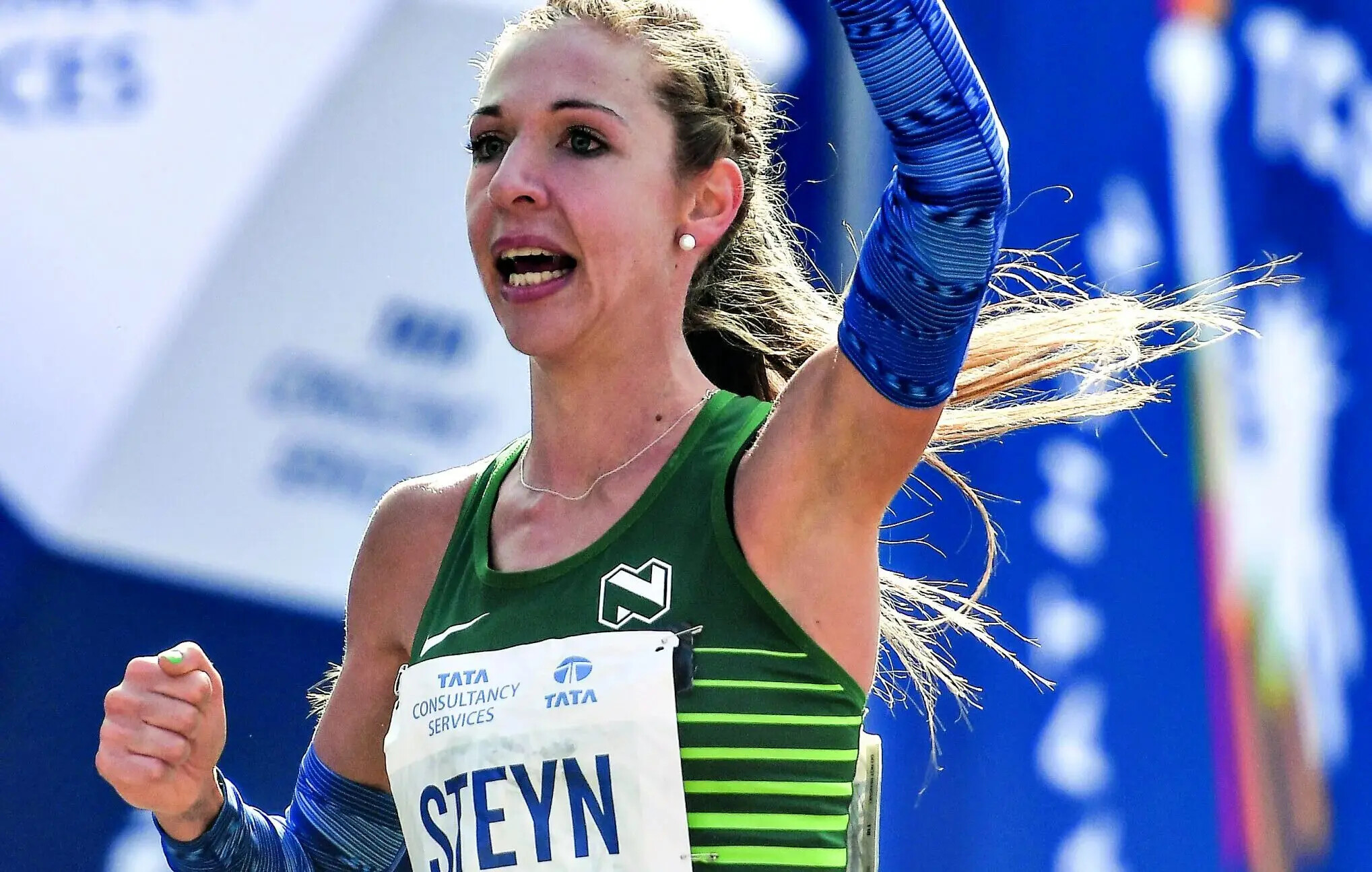
At the Valencia Marathon less than a month ago, Steyn finished 11th in a time of 2:24:03 to set a new South African national record at the distance. Although she will kick off the 2024 season with the shorter 10km distance in Dubai, it’s hardly a surprise considering her near ownership of the event.“I’ve run the Dubai 10km race every year since 2018 and have won it four times, so I can’t think of a better way to start the new year than to be a part of it once again,” she added.
“My aim is to win the 10km again in 2024 and even though I won’t be running the full marathon itself, I still get to be part of the iconic event.”
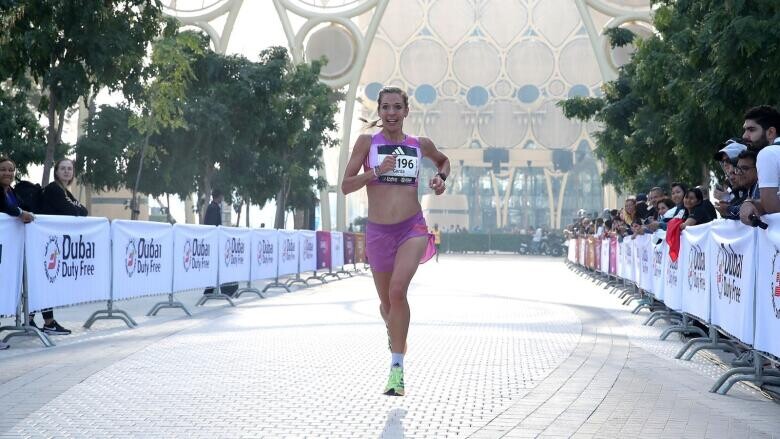
The Dubai Marathon launches what will be a busy year for the adidas runner.
As well as committing to the defense of her Comrades Marathon and Two Oceans Marathon titles in Durban and Cape Town respectively, South Africa’s fastest ever female marathon runner will also represent her country at the 2024 Olympics in Paris.
It will be her second Olympics having finished 15th in the Marathon in Sapporo in 2021.But before all that, there is the small matter of the defence of her Dubai Marathon 10km title on Sunday. Last year, Steyn won in a time of 33:47 over an unfamiliar route at EXPO City Dubai.
But with the 23rd edition of the Dubai Marathon taking place over the fast and flat roads of Umm Suqeim, the quicksilver South African may well have her eyes on the personal best of 32:24 she set over the same surface the last time it was staged there in 2020.
Meanwhile, The Dubai Sports Council has discussed the latest preparations for organizing the 23rd edition of the Dubai Marathon, the oldest long-distance running race in the Middle East.
The latest preparations were discussed during a meeting held by Saeed Hareb, Secretary-General of the Dubai Sports Council, Nasser Aman Al Rahma, Assistant Secretary-General, Peter Connerton, Event Director, and Alan Ewens, Media Director of the race.
Hareb expressed his confidence in the staging of the Dubai Marathon, especially since it features cooperation between a number of government agencies and the organizing committee to ensure its success and provide the best atmosphere for thousands of international participants coming to run a race they look forward to every year.
The 2024 Dubai Marathon is supported by the Dubai Sports Council, adidas, Dubai Duty Free, EXEED by Al Ghurair, the Channel 4 Radio Network, the ITP Media Group, Bisleri Water, Biofreeze, Dubai RTA, Dubai Police, Al Ameen Service, Dubai Municipality and SIRO One Za’abeel, the first fully integrated Fitness + Recovery hotel in Dubai.
(01/04/2024) ⚡AMPby Gulf Today
Dubai Marathon
In its relatively brief history (the race was first held in 2000), the Dubai Marathon has become one of the fastest, most respected and the most lucrative marathon in the world in terms of prize money. Each year thousands of runners take to the roads in this beautiful city in the United Arab Emirates (UAE) for this extraordinary race starting...
more...Neuroscientist Andrew Huberman’s 5 tips for optimal performance
Dr. Andrew Huberman, professor of neurobiology and ophthalmology at Stanford School of Medicine and host of The Huberman Lab podcast, believes in avoiding health trends, instead prioritizing five basic daily things to achieve peak physical and mental health. Huberman’s tips aim not only to help the general public become the best version of themselves, but also apply perfectly to runners. Here’s what you need to know.
1.- Sleep
“Everyone needs to get a sufficient amount of quality sleep,” Huberman recently said on The Nine Club podcast. He touts sleep as the best stress reliever, trauma releaser, immune booster and emotional stabilizer. He suggests following a consistent sleep schedule, making sure you are exposed to sunlight in the morning (more below), avoiding caffeine eight to 10 hours before bed and limiting naps to 15-20 minutes.

Huberman says most adults need between six and eight hours of sleep every night and suggests letting teenagers and young kids sleep as much as they want.
Key takeaway for runners: Sleep is critical for recovery and should be something runners focus on as much as their most intense training. During sleep, our bodies repair themselves from the microscopic tissue damage done while exercising; insufficient sleep can lead to injury, low energy availability and a struggle to improve. Delving into Huberman’s sleep tips can help you become a better sleeper, and therefore a better runner.
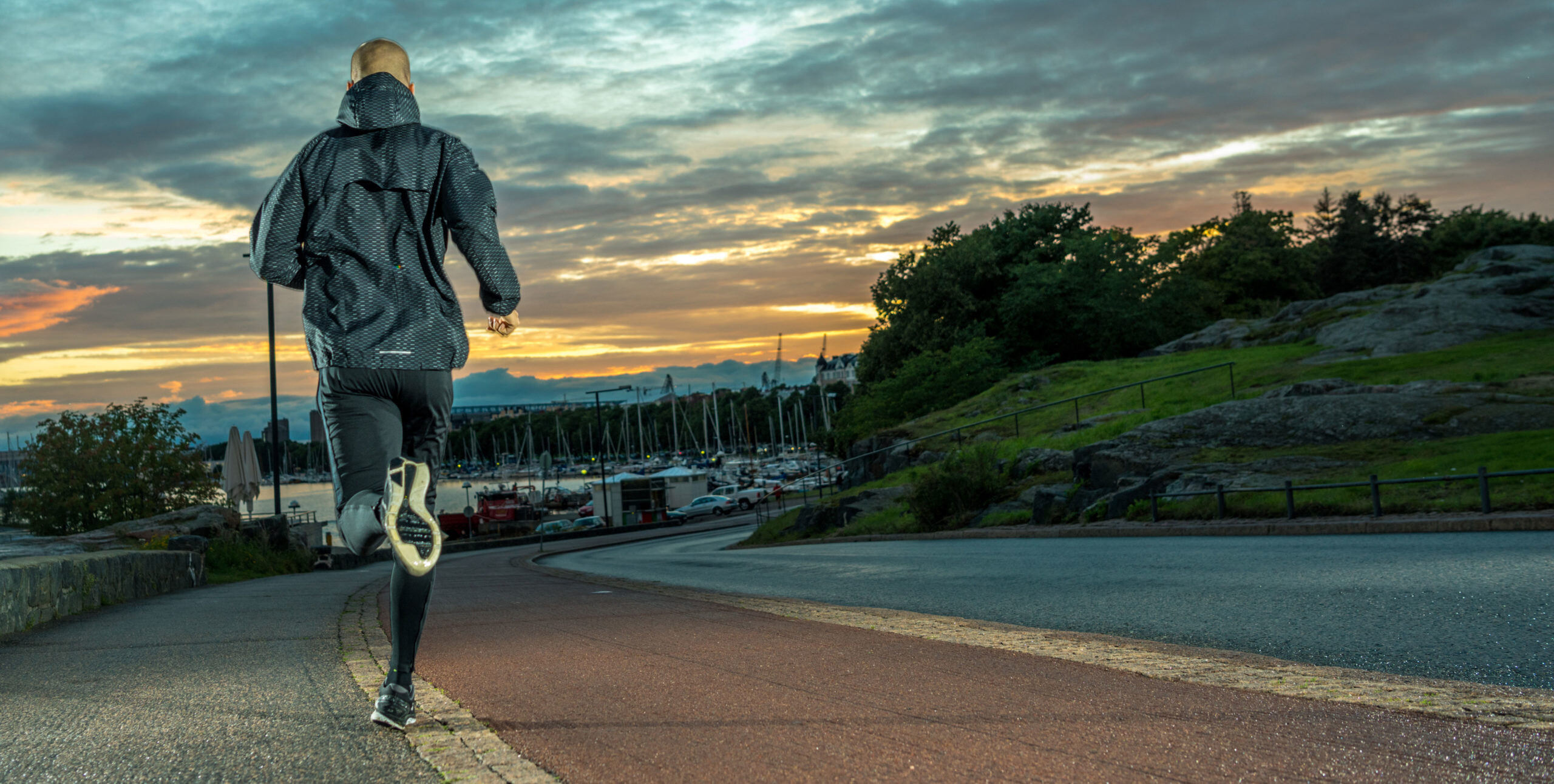
2.- Move more
“It is important to get enough movement. Get your heart rate up, get your breathing up. You’ll live longer, you’ll feel better,” Huberman says. Huberman suggests trying to get one hour of exercise daily, and incorporating strength training into your routine. “The natural decrease of muscle is one per cent per year after age 40, unless you intentionally offset through strength training,” Huberman explains.
Key takeaway for runners: Huberman’s advice doesn’t necessarily mean you should run every day. Try adding movement into your day whenever you can (take the stairs, park farther from your destination and walk for 10 minutes), and count cross-training (which includes brisk walking) toward your daily total. Gentle walking on rest days can help with the recovery process.
3.- Sunlight
Getting sunlight within the first hour of waking helps suppress the release of melatonin, a hormone that promotes sleep, while increasing alertness. For many of us in North America, it’s not light out when we wake up during the winter months, and it may not be sunny—but regardless of sunshine, focus on that outdoor light, and if you can’t be out in it as soon as you wake up, incorporate it into your day as early as possible.
Key takeaway for runners: While you certainly don’t need to be an early-morning runner to follow this tip, maybe this benefit will give you a boost to get out earlier more often.
4.- Nutrition
“Try to get 75 to 80 per cent of your food from non-processed or minimally processed sources,” Huberman says. He follows a diet that includes intermittent fasting, and while that doesn’t necessarily work for all athletes, intentionally eating meals at times they are most beneficial may help.
Key takeway for runners: Huberman is quick to point out that everyone is different, and it’s important to work with your own physical needs. Make sure you are taking in adequate nutrition for your energy output, and while a focus on unprocessed foods is clearly beneficial, lose any “food guilt” you have over taking in sugary gels or gummies during training and races–they are necessary for fuelling endurance efforts.
5.- Meaningful connection
“Do what you can to make the interactions you have, online and in reality, with friends, with family, as healthy as possible,” Huberman says, and emphasizes the importance of quality social connection. Feeling socially isolated and lonely has been shown to increase the risk of developing dementia, depression and anxiety, among other health conditions.
Key tip for runners: Embrace your local running community, or work on building stronger relationships with your running friends. If you don’t have access to a local running group, connect online with other like-minded individuals, but make sure to avoid negativity. For some of us, getting in a daily run as a stress reliever may be the tool we need to focus on healthier relationships with our non-running friends and family.
(01/04/2024) ⚡AMPby Keeley Milne
Rory Linkletter to chase Olympic marathon standard in Spain
After a short and successful stint on the indoor track to end 2023, Canadian marathoner Rory Linkletter has announced his next race, the Sevilla Marathon on Feb. 18. Linkletter’s goal is to run a personal best and book his ticket to the Paris Olympics, which will require a time of 2:08:10.
“I will be heading to Spain to run the Sevilla Marathon on Feb. 18,” Linkletter wrote on Instagram. His reasoning for choosing to race in Sevilla was to give himself ample time to recover and prepare after his 18th-place finish in the marathon at the 2023 World Athletics Championships in late August.

Although Linkletter’s time of 2:12:16 in Budapest was shy of his personal best, he referred to the race as the smartest he’s ever run, passing over 20 runners in the final 15 kilometers.
In Sevilla, Linkletter will be vying for the fastest time of his career, and he will need to hit the men’s Olympic A standard of 2:08:10. If he misses the standard, he can still be selected for Team Canada via the World Athletics rankings. He has a personal best of 2:10:24 from the 2022 World Championships in Eugene, Ore.
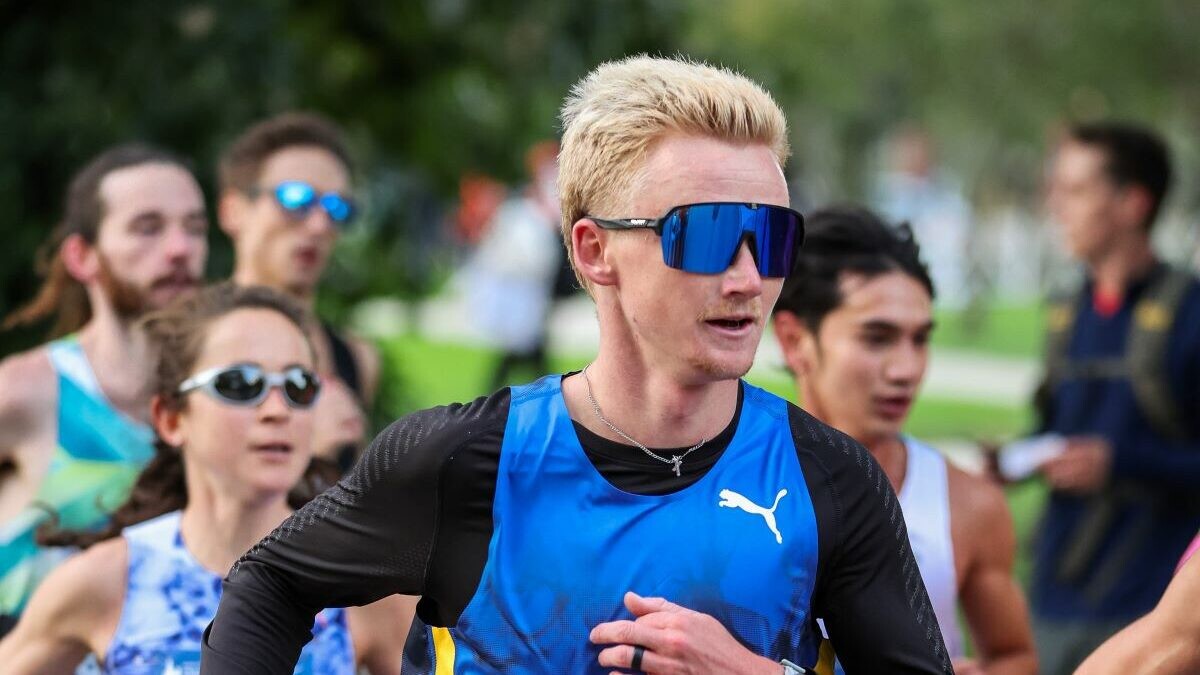
“Training is going well, and I want to set myself up well for an Olympic Standard attempt (2:08:10),” Linkletter said.
The 27-year-old had the second-fastest Canadian men’s marathon time in 2023, behind only Cam Levins’s 2:05:36 in Tokyo. Levins already has one of the three eligible marathon spots for the Canadian men’s Olympic team, but with five months left to qualify, two spots are up for grabs for Canadians who meet the Olympic B standard of 2:11:30.
If Linkletter were to hit the A or B standard, he would potentially be selected for his first Olympic Games.
The Canadian-born marathoner, who lives in Flagstaff, Ariz., has been working on his speed over the last few months with his coach, former U.S. marathoner Ryan Hall, to improve his speed. In early December, he became the 74th Canadian to run a sub-four-minute mile and only the second Canadian to accomplish the feat while also being a sub-2:12 marathoner.
He joined marathon record holder Levins as the only other Canadian to do so.
(01/04/2024) ⚡AMPby Marley Dickinson
Zurich Marathon Sevilla
This urban, flat, fast and beautiful brand new race course will drive athletes through the most beautiful monuments of the city. Zurich Maraton de Sevilla brings the unique opportunity to brake the Best personal result over the mythical distance to all the athletes, professional or age groupers, in one of the most perfect international marathon circuits. This fast marathon takes...
more...Ten reasons to be excited for 2024
There are many things to look forward to in the sport of athletics in the upcoming year.
There’ll be six global championships in 2024, with ever-expanding one-day meeting circuits spread throughout the year. Rivalries will be renewed, and record-breakers will continue to push boundaries in their respective disciplines.
Here are just 10 of the many reasons to be excited by what’s to come over the next 12 months.
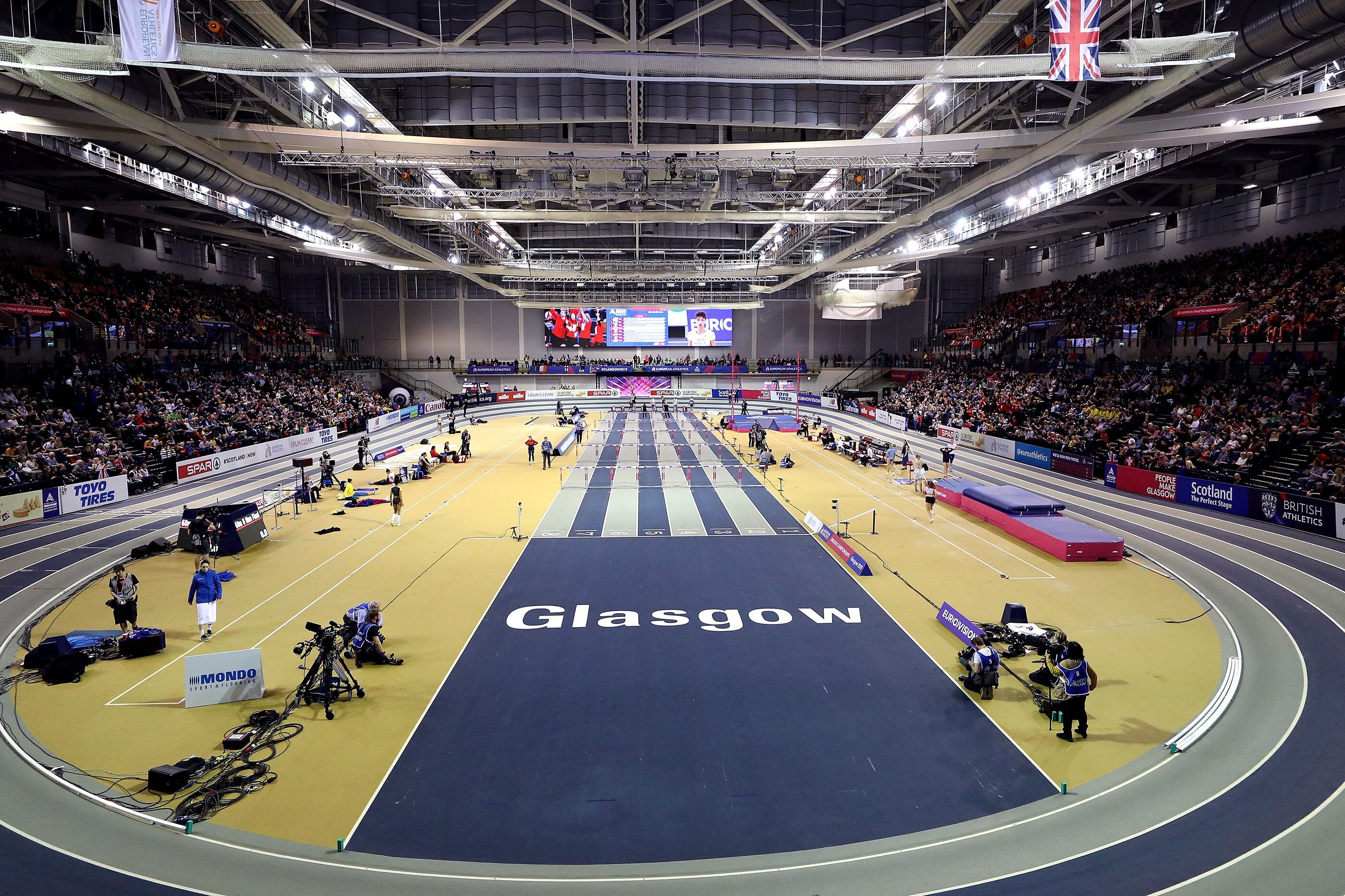
1. Paris 2024 Olympic Games
Athletics is the No.1 sport in what will be the biggest event on the planet this year. 100 years after Paris last hosted the Games, the Olympics will return to the French capital where 2000 athletes from about 200 countries will compete for medals in 48 disciplines from August 1-11 . Expect duels, drama and record-breaking performances as athletes compete for the highest honor in the sporting world.
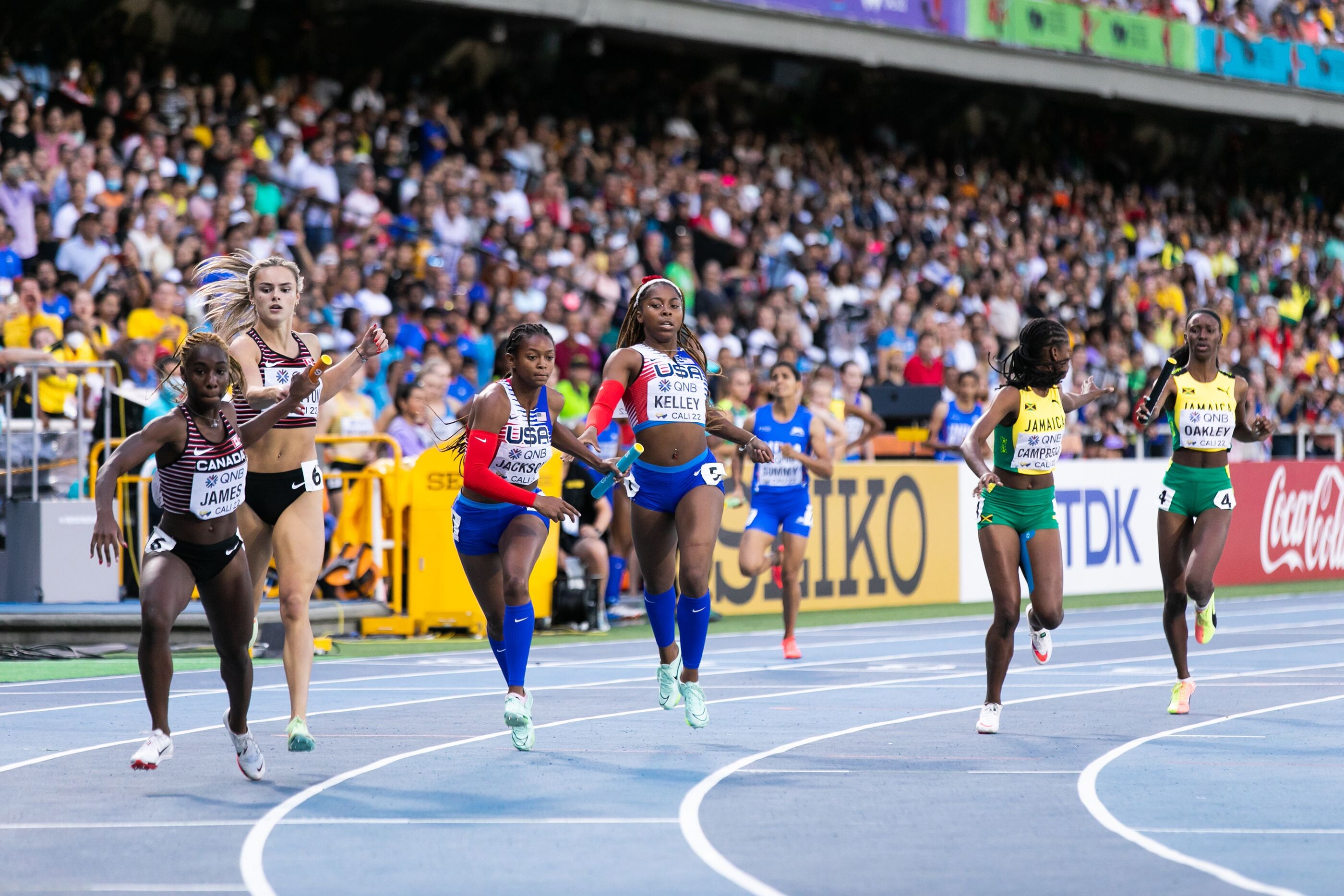
2. World Athletics Indoor Championships Glasgow 24
The first global track and field championships of the year will start in just two months’ time as Glasgow hosts the World Indoor Championships on March 1-3. In Belgrade two years ago, pole vaulter Mondo Duplantis and triple jumper Yulimar Rojas set world records to claim gold; they’ll be looking to add to their medal – and record – tally in Glasgow, as will a host of other top track and field stars.
3. World Athletics Relays Bahamas 24
For the first time since 2017, the World Relays will be held in the Bahamian capital as the global event returns to the venue of the first three editions. From May 4-5, athletes will be vying to secure their place in the 4x100m, 4x400m and mixed 4x400m for the Paris 2024 Olympic Games. Expectations of a nation rests on their shoulders – and their baton exchanges.
4. World Athletics Cross Country Championships Belgrade 24
Just two years after the Serbian capital hosted the World Indoor Championships, Serbia will this year play host to the world’s best cross-country runners. Recent editions of the event, in both Aarhus and Bathurst, have put athletes to the test on grueling courses, so expect more of the same on 30 March.
5. World Athletics U20 Championships Lima 24
After the latest successful edition of the World U20 Championships in Cali two years ago, the global event will return to South America as Lima becomes the first city in Peru to host a World Athletics Series event. The championships will take place from August 27-31, and will showcase the world’s most promising up-and-coming stars.
6. World Athletics Race Walking Team Championships Antalya 24
Is there room on the calendar for one more global event? Go on, then. For the first time ever in the history of these championships – including all previous iterations – Turkiye will play host to the World Race Walking Team Championships on April 21 . The first 22 teams here will automatically qualify for the marathon race walk mixed relay – the newest Olympic discipline – at the Paris Games.
7. One-day meeting circuits
While championship action is great, the likes of the Wanda Diamond League and World Athletics Continental Tour is where athletes can be seen in action week in, week out throughout the peak of the outdoor track and field season. Before that, there’s also the World Indoor Tour, while other series such as the Cross Country Tour, Combined Events Tour, Race Walking Tour and Label road races will provide competition opportunities throughout the year.
8. Record breakers
Athletes continued to push boundaries throughout the past 12 months on the track, field and roads. Expect more of the same in 2024 as the likes of Faith Kipyegon, Mondo Duplantis, Kelvin Kiptum, Yulimar Rojas and Ryan Crouser look to run, jump and throw better than they ever have done before.
9. Big clashes
Rivalries between the sport’s biggest stars always provide a gripping narrative for any season. For 2024, expect some mouth-watering clashes to come from the likes of Sydney McLaughlin-Levrone and Femke Bol in the 400m hurdles, Kelvin Kiptum and Eliud Kipchoge in the marathon, Gudaf Tsegay and Sifan Hassan in the 10,000m or Daniel Stahl and Kristjan Ceh in the discus to name but a few.
10. New stars
Every year a new generation of talent emerges. Some of those will be athletes who started to make a bit of a breakthrough towards the end of last year, while others may be athletes who fans have barely heard of. Either way, keep your eyes peeled as the season unfolds to witness the future stars of the sport mixing it with the world’s best athletes.
(01/03/2024) ⚡AMPby World Athletics
Paris 2024 Olympic Games
For this historic event, the City of Light is thinking big! Visitors will be able to watch events at top sporting venues in Paris and the Paris region, as well as at emblematic monuments in the capital visited by several millions of tourists each year. The promise of exceptional moments to experience in an exceptional setting! A great way to...
more...University of Virginia woman goes viral after beating man in race
A female 800m runner from the University of Virginia has gone viral on TikTok after recording a video of herself beating one of her boyfriend’s friends, who thought they could beat her in a race, despite having zero running experience.
The challenge arose when the man was skeptical about Alahna Sabbakhan’s ability to beat him in a race. In her viral video, she explained that they agreed to race over 400 meters, which was part of a workout she had planned. They matched stride for stride over the first 200m, but the man, who had no running experience, took a one-way ticket along the Lactic Express, ultimately losing to Sabbakhan by a significant gap.

In two weeks, her video has garnered over 10 million views and earned Sabbakhan an interview with American morning television show TODAY. Speaking with TODAY, Sabbakhan said she thought it was “ridiculous” when she first started hearing the rumors that her boyfriend’s friend believed he could run faster than her. “He didn’t know what to challenge me in,” she said.
“Just to clarify, I did NOT want to race this man,” her TikTok caption read. “I was already at the track with my boyfriend doing a workout, and he came to join.”
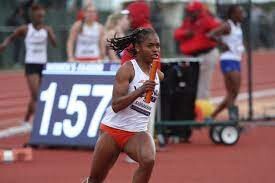
Despite her primary event being the 800 meters, where she holds a best of 2:05, Sabbakhan completed the 400m in an impressive 57 seconds, negatively splitting the final 200m in 28 seconds. Reflecting on the experience, Sabbakhan told TODAY that the video emphasized the importance of ending gender-based underestimation. “The race showcased the need to stop underestimating female athletes,” said Sabbakhan.
Sabbakhan’s TikTok video resonated with many viewers, sparking discussions about the challenges female athletes constantly face. The video became a symbol of breaking stereotypes and empowering women in sports. Sabbakhan mentioned that her competitor graciously accepted the loss, acknowledging the race as the hardest thing he had ever done.
(01/03/2024) ⚡AMPby Marley Dickinson
Five worst things to do on race day
Fall race season (the best race season!) is finally back, and it feels even better after a year of mostly virtual races. Seasoned runners and first-time racers will toe the starting lines for their fall races in coming weeks, and the excitement is building.
After months of training for your upcoming 5k, 10k, half marathon, or marathon, the last thing you want to do is jeopardize your work with a last-minute mistake. Below are common runner slip-ups you might make in the week leading up to race day, or race day itself, that you should be careful to avoid.
And if you've done these before, don't sweat it. Runners of all ages and levels have suffered the consequences of these mistakes – in 16 years of running, I've done them all!
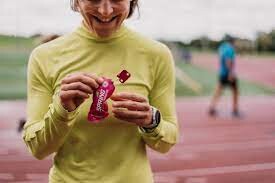
1.- Trying the new gel brand you just bought: You may have heard the saying, "nothing new on race day," and this especially applies to nutrition. You don't know how your body will react to a new food, and race day is a risky time to try. If you've done all your training runs with Gu gels, race day isn't the time to try Honey Stinger waffles. It's crucial to train with the gels, chews, or other snacks you plan to carry the day of a race – if something is going to make you feel crampy or nauseous, you'd rather know beforehand.
On the same note, it helps to eat familiar foods the night before, and morning of, the race. Test a few dinners and breakfasts before your long training runs to learn what works best for you.

2.- Wearing new gear: "Nothing new on race day" also applies to the shoes, sports bra, shorts, and other gear you wear. Your race day outfit should include clothes you've worn on several test runs and that you know won't chafe, ride up, or fall down. If you're planning to wear something to hold a phone, gels, or other essentials, be sure you bring that on training runs as well!
3.- Leaving things to the last minute: In the weeks leading up to race day, you're only thinking about the run – but there are other logistics to consider too. Check the race website for packet pick-up instructions so you know whether to get your race bib the day before the race, or the day of. The night before, lay out your clothes and shoes, plan your breakfast, and know your transportation. Your future self will be grateful for a less-stressful race morning.
4.- Failing to check the course: Does your race have a lot of hills, or is it mostly flat? Does it start and end in two different places? Where are the aid stations, if any? The answers to these questions can inform your race day plan and help you decide how much nutrition to bring, where to expect a big hill, and where to have friends or family meet you at the finish.
5.- Sprinting at the start: When the race-day adrenaline is pumping, and the runners around you are getting off to a fast start, it can be tough to maintain a sustainable pace. You might feel good at first, but it's never a good idea to start out faster than your regular pace. Instead, stick with the pace you're used to and accelerate in the second half, if your energy is still high.
And finally, remember that even if you check all the right boxes, eat all the right foods, and nail every part of your race day prep, the race may not go as planned. And that's ok! Not every race will be your best race. The most important thing is to get out there and give it your best shot.
Have a great race!
(01/03/2024) ⚡AMPby SPIbelt
Over Ksh100 million cash boon set aside for top performers at Xiamen Marathon
More than Ksh 100 million ($638,000US) is on offer for exemplary performers at the Xiamen Marathon on Sunday.
The Xiamen Marathon slated for Sunday, January 7 is fast approaching, with more than Ksh100 million up for grabs for athletes who do exemplary well.
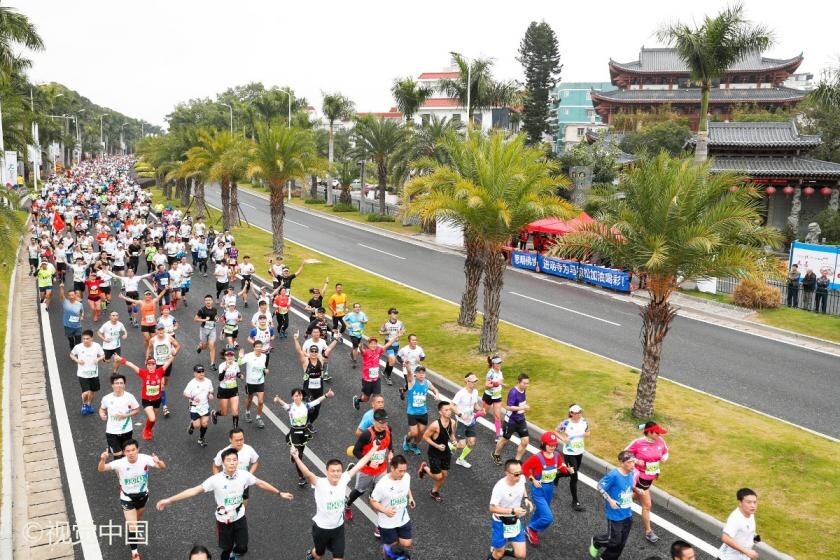
The marathon that will be staged in Xiamen in Fujian province, China will provide hundreds of millions to athletes as they look to kick start their year on a high.
The Xiamen Marathon slated for Sunday, January 7 is fast approaching, with more than Ksh100 million up for grabs for athletes who do exemplary well.
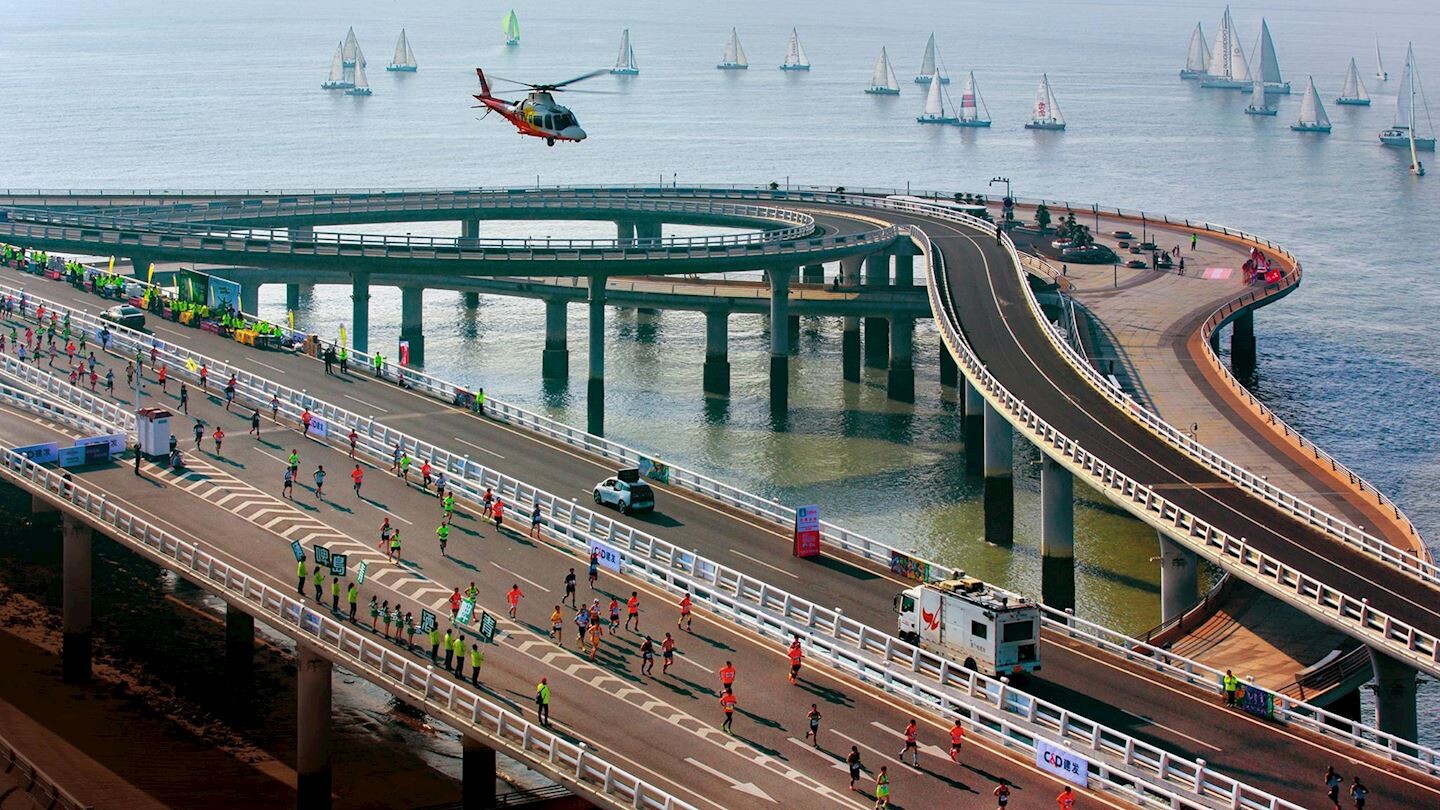
The marathon that will be staged in Xiamen in Fujian province, China will provide hundreds of millions to athletes as they look to kick start their year on a high.
The athletes who cross the finish line first in 2:09:30 and 2:26:00 will be awarded Ksh7,053,750 in the men’s and women’s races respectively. Female and male athletes who clock above the time to win the race will be awarded Ksh3,930,000 each.
The second-place finishers who clock under 2:10:30 and 2:2:00 in the men’s and women’s races will be awarded Ksh3,144,000 each while those who finish above the time will walk away with Ksh2,358,000.
The athletes who finish third and clock under 2:11:30 and 2:28:00 in the men’s and women’s races will be awarded Ksh2,043,600 each while those who clock above the times will walk away with Ksh1,729,200.
The athletes who finish fourth, fifth, and sixth will pocket Ksh1,572,000, Ksh1,257,600, and Ksh1,100,400 respectively while those who finish seventh and eighth will walk away with Ksh1,020,565 and Ksh942,060 in both the men’s and women’s races.
Chinese runners will also be awarded with those crossing the finish line under 2:15:00 and 2:32:30 walking away with Ksh1,101,839 and those who clock below the time will bank Ksh550,889. The first 12 Chinese athletes who cross the finish line will be awarded with the 12th athlete walking away with Ksh22,035.57.
Athletes who break the world record will walk away with Ksh157,010,000 and they will earn an additional Ksh7,850,500. For breaking the course record, the athletes will be awarded Ksh4,710,300.
(01/03/2024) ⚡AMPby Abigael Wuafula
CD XIAMEN INTERNATIONAL MARATHON
The C&D Xiamen International Marathon is an annual marathon race held in January in the coastal city of Xiamen in Fujian province, People’s Republic of China. Every January, the first medal of marathon race around the world is awarded here. The race has become a golden name card of Xiamen, showing its splendor to the whole world.It is one of...
more...British trail runner found dead after going missing on run
A 40-year-old British ultrarunner was found dead on Tuesday morning following a two-day search. Edward Catmur of London went missing on a run in Cumbria, U.K., on New Year’s Eve.
According to the BBC and Cumbria police, Catmur travelled to Cumbria intending to run through the North Pennines from Dufton, near Appleby, to Cross Fell and Hartside Cross. He was reported missing on New Year’s Day after not being heard from after 10 a.m. on Dec. 31.
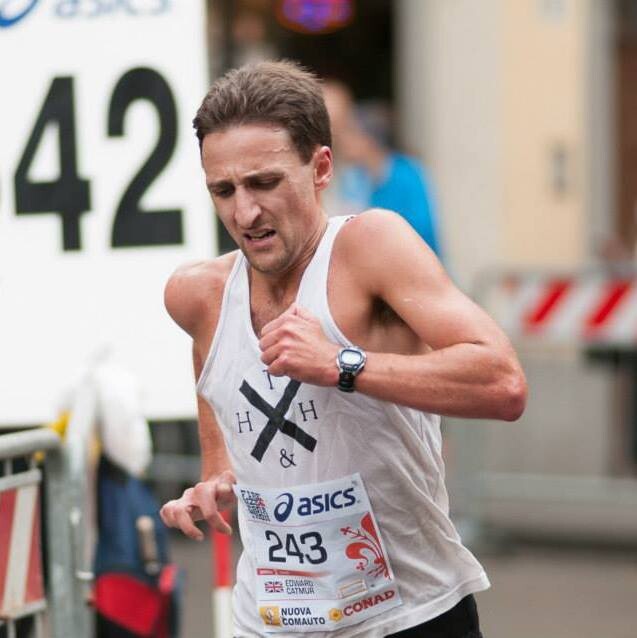
The local police sent out a rescue team on Jan. 1, following Catmur’s planned route on Monday. A police helicopter found his body on a snow-covered trail on Monday night in the Cross Fell area, just north of Penrith. There was a large snowfall in the area, according to the police.
This was not Catmur’s first time visiting or running in the Lake District National Park area; he previously ran the Bob Graham Round with a few friends in 2021, completing the 110 km loop in just under 24 hours.
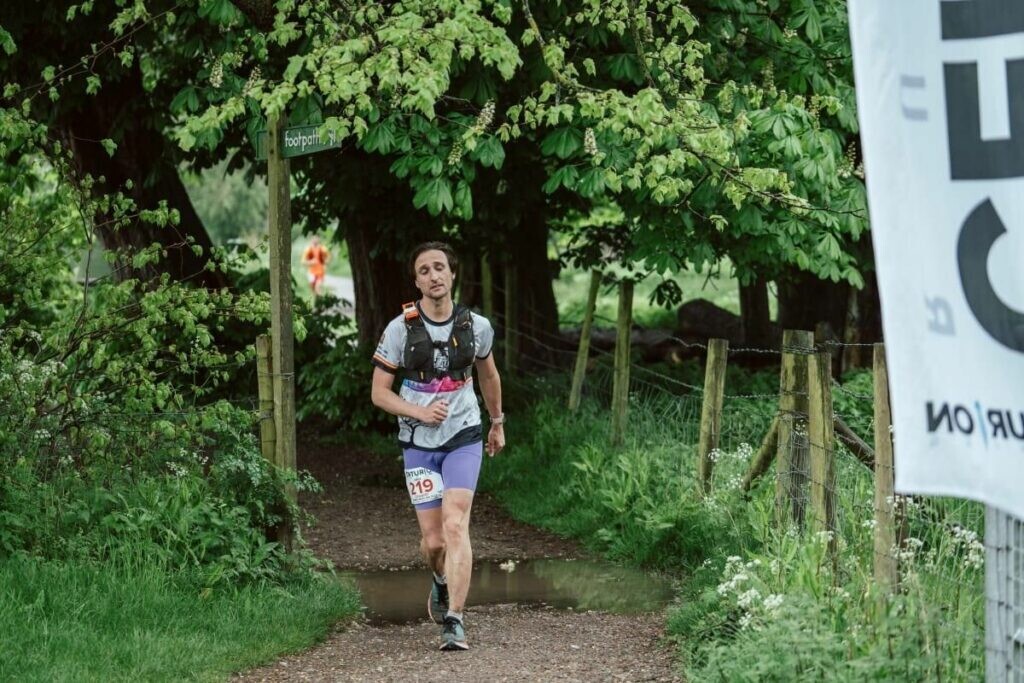
Catmur was a software engineer living in Chicago but was back in the U.K. for the holidays. He was an avid runner. On the day before he went missing (Dec. 30), he participated in Penrith parkrun, where he ran an 18-minute 5K. He also competed at the 2023 Comrades Marathon, where he finished 254th. He also won the challenger race at the Montane Spine Race in 2015.
Fell running is the sport of running and racing off-road, over upland country where the gradient climbed is a significant component of the difficulty. The name arises from the origins of the English sport on the fells of northern Britain, especially those in the Lake District.
(01/02/2024) ⚡AMPby Marley Dickinson
Having completed his first half-marathon, Travis Barker has caught the running bug and is now signed up for the Los Angeles Marathon
The drummer of Blink 182, Travis Barker, has found a new passion and has lofty goals for the year ahead. On New Year’s Eve, the 48-year-old completed his first half-marathon in Santa Monica, Calif., and now he has his eyes set on 42.2 km at the 2024 Los Angeles Marathon on March 17.
Barker finished the half-marathon in 2:08:57, averaging a pace of six minutes and seven seconds per kilometre and placing 32nd overall out of 59 runners. Barker had family and friends at the race to cheer him on for his debut, including his wife, reality TV and fashion megastar Kourtney Kardashian.
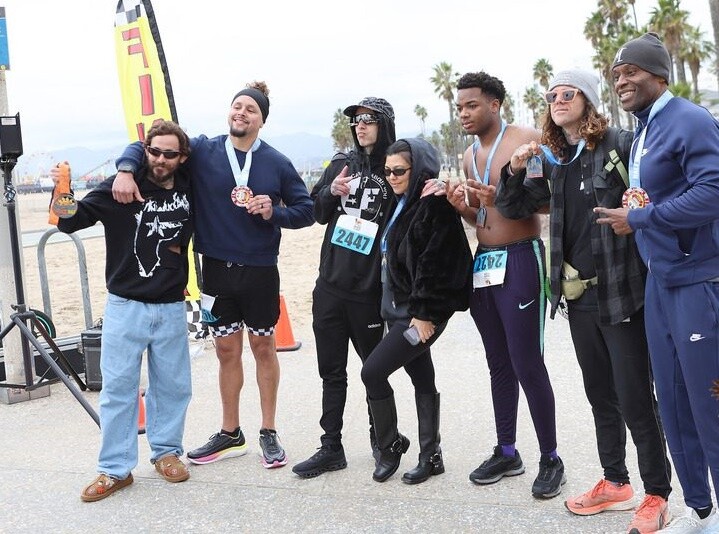
Kardashian was seen sporting Barker’s finisher medal afterward. His first half-marathon capped off a big year for Barker. In November, the couple had their first child together, Rocky Thirteen.
“Ending 2023 with a bang,” the drummer captioned his post on Instagram. When asked about his next race, Barker revealed his plans to run the LA Marathon.

Barker’s training for the half did not go smoothly. The drummer said he had to halt his training due to an iliopsoas tendon strain a few weeks before the race. He posted that he knows the marathon won’t be easy, but he trusts the guidance he’s received from Stanford neuroscience professor Andrew Huberman and human performance professor Andy Galpin.
Now that the Kardashians are attending races and Taylor Swift is doing fartlek workouts has our sport officially reached its peak?
(01/02/2024) ⚡AMPby Marley Dickinson
Los Angeles Marathon
The LA Marathon is an annual running event held each spring in Los Angeles, Calif. The 26.219 mile (42.195 km) footrace, inspired by the success of the 1984 Summer Olympic Games, has been contested every year since 1986. While there are no qualifying standards to participate in the Skechers Performnce LA Marathon, runners wishing to receive an official time must...
more...Wilson Kipsang hints at marathon return after serving doping ban
Former world marathon record holder Wilson Kipsang has expressed his interest in returning to running after serving his four-year doping ban
Former world marathon record holder Wilson Kipsang has expressed interest in making a comeback to running after his doping ban elapsed.
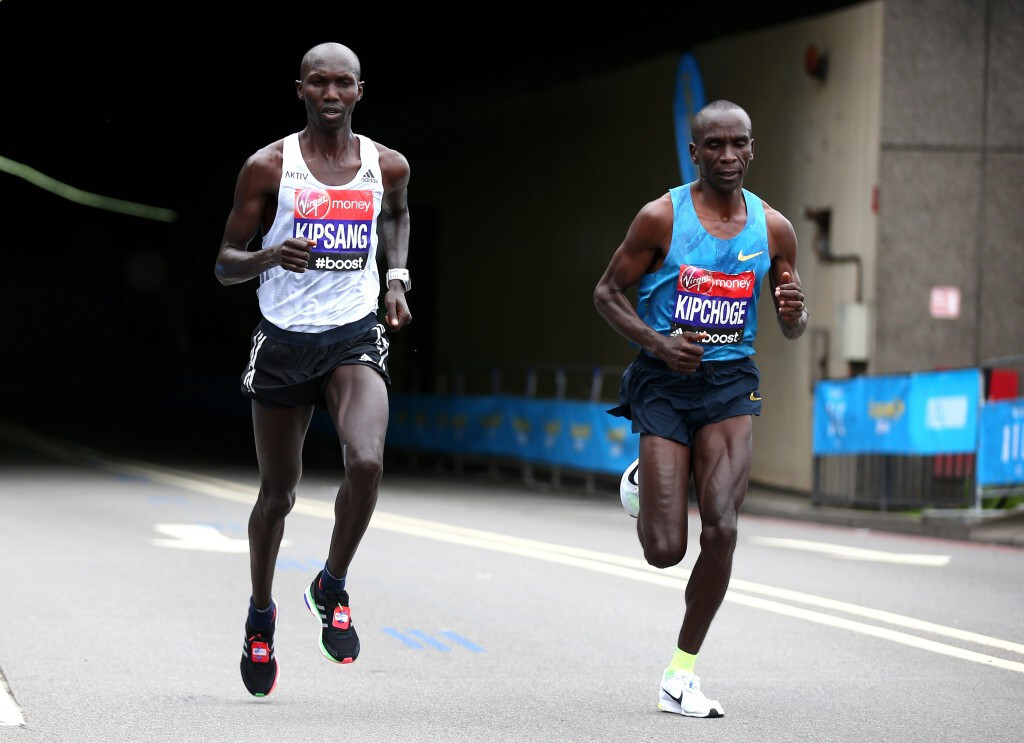
Speaking to Nation Sport, Kipsang explained that he is currently sharpening his talons as he gears up for a grand return into competing.
He noted that he will be looking forward to competing at either the Tokyo Marathon on March 3, the Paris Marathon on April 7, or the Hamburg Marathon on April 24.
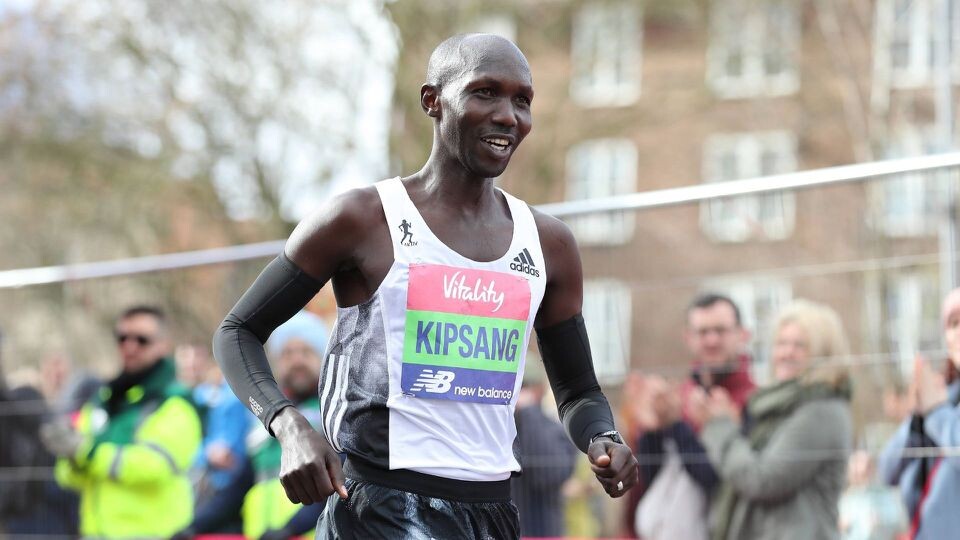
He expressed his interest in returning to competitive running after three of his family members and himself survived a road accident on Monday.
After the survival, Kipsang narrated that he swerved the vehicle on one side of the road and was lucky to have escaped with minor injuries.
“I want to assure everyone who is worried about our wellbeing that we are fine and back in Iten. Let them worry no more,” said Kipsang.
The 41-year-old was slapped with a four-year-ban for whereabouts failures, not being available for drug testing, and providing false evidence in his case.
Kipsang had been provisionally banned in January 2020 in the case handled by the Athletics Integrity Unit. The former Olympic bronze medalist was punished for four whereabouts failures between April 2018 and May 2019.
Three such failures within 12 months led to an automatic ban, however, the Kenyan had his sanction increased after it was ruled that he had tampered with the investigation by providing “false evidence and witness testimony”.
(01/02/2024) ⚡AMPby Abigael Wuafula
Tokyo Marathon
The Tokyo Marathon is a world-renowned annual marathon held in Tokyo, Japan. As one of the prestigious Abbott World Marathon Majors, it attracts elite and amateur runners from around the globe. The race holds World Athletics Platinum Label status, recognizing its high competitive standards, top-tier organization, and international appeal. Sponsored by Tokyo Metro, the Tokyo Marathon has grown into one...
more...Kelvin Kiptum expresses desire to run historic sub-two-hour marathon in Rotterdam
Reigning Chicago Marathon champion Kelvin Kiptum will be seeking to become the first man to run a marathon in under two hours and be recognized by World Athletics.
World marathon record holder Kelvin Kiptum is not resting on his laurels as he looks to dethrone the marathon kings and make history this year.
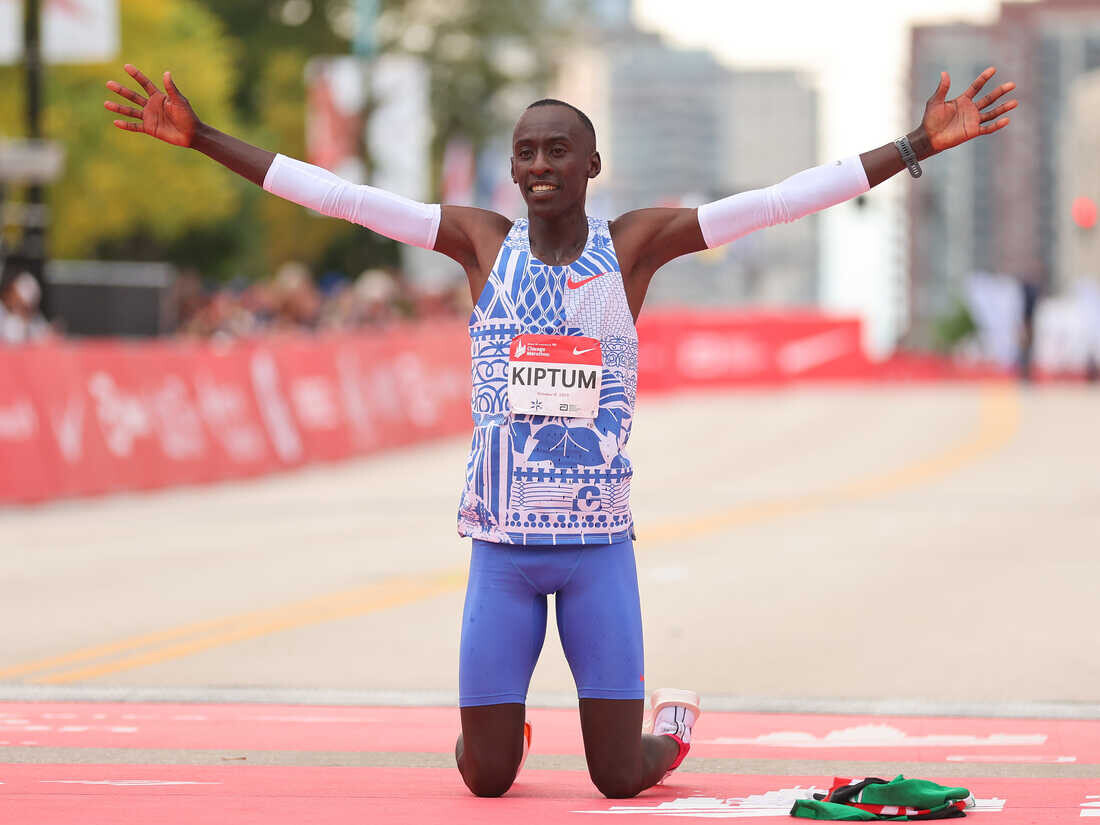
Kiptum, the reigning Chicago Marathon champion will be opening his season at the Rotterdam Marathon where he hopes to break the sub-two-hour marathon barrier.
Speaking to Gulf Times, the Kenyan explained that for now, his training and thoughts are on the marathon and he will be seeking to become the first man to ever run the marathon in under two hours with the recognition of World Athletics.
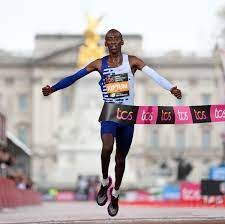
Eliud Kipchoge was the first man to run a marathon in under two hours, however, his effort did not count as a new world record under World Athletics rules due to the setup of the challenge.
“It’s already known, the Rotterdam Marathon on April 14. I would like to grow further, and so, inevitably, break the barrier," the reigning London Marathon champion said.
"I’ll go there to run fast; the course is ideal and the crowds in the streets push you to give your best. I would love to be a part of the rich history of this marathon.
“If the preparation goes in the right direction, with peaks of 270 kilometers per week, and the weather conditions permit, I will go for it [sub-two]."
Kiptum has enjoyed a remarkable 2023, breaking the men’s marathon world record where he took 34 seconds off the previous record in winning the Chicago Marathon in two hours and 35 seconds.
He also won the London Marathon in April in 2:01:25, which at the time was the second-fastest time ever.
He noted that he will be competing at the Rotterdam Marathon because the organizers of the race are linked to his management.
“In 2022 I was supposed to run it, to make my debut but a slight injury stopped me. This will be the right time,” he said, adding that one of his other goals is to compete at the 2024 Olympic Games in Paris.
“As a team, we will collaborate, but then everyone looks out for themselves.
“I could also aim for the Tokyo 2025 World Championships, I saw the race in Budapest which fascinated me,” he added.
(01/02/2024) ⚡AMPby Abigael Wuafula
NN Rotterdam Marathon
The marathon has been the biggest one-day sporting event in the Netherlands for many years in a row with over 35000 athletes professionals inclusive. The world's top athletes will at the start on the bustling coolsingel, alongside thousands of other runners who will also triumph,each in their own way.The marathon weekend is a wonderful blend of top sport and festival. ...
more...Ugandan Olympic steeplechaser found murdered just outside of Eldoret
Ugandan three-time Olympian Benjamin Kiplagat has been killed. Kiplagat, 34, is believed to have been murdered early Sunday morning, reported the BBC. Kiplagat, who specialized in the 3,000m steeple, was living in the Marakwet District of Kenya, and his body was discovered in his vehicle just outside of the city of Eldorat. Eldorat is the fifth largest city in Kenya and known as a top training center for athletes.
He broke onto the international scene in 2006 when he was sixth in the 3,000m steeple at the World Junior Championships in Beijing, China. He was a silver medalist at the 2008 World Junior Championships in Poland, and narrowly missed the podium at the 2010 Commonwealth Games in Delhi, India. Kiplagat was 10th at the 2011 World Championships in South Korea, and made the semifinals in the 2012 London Olympic Games.
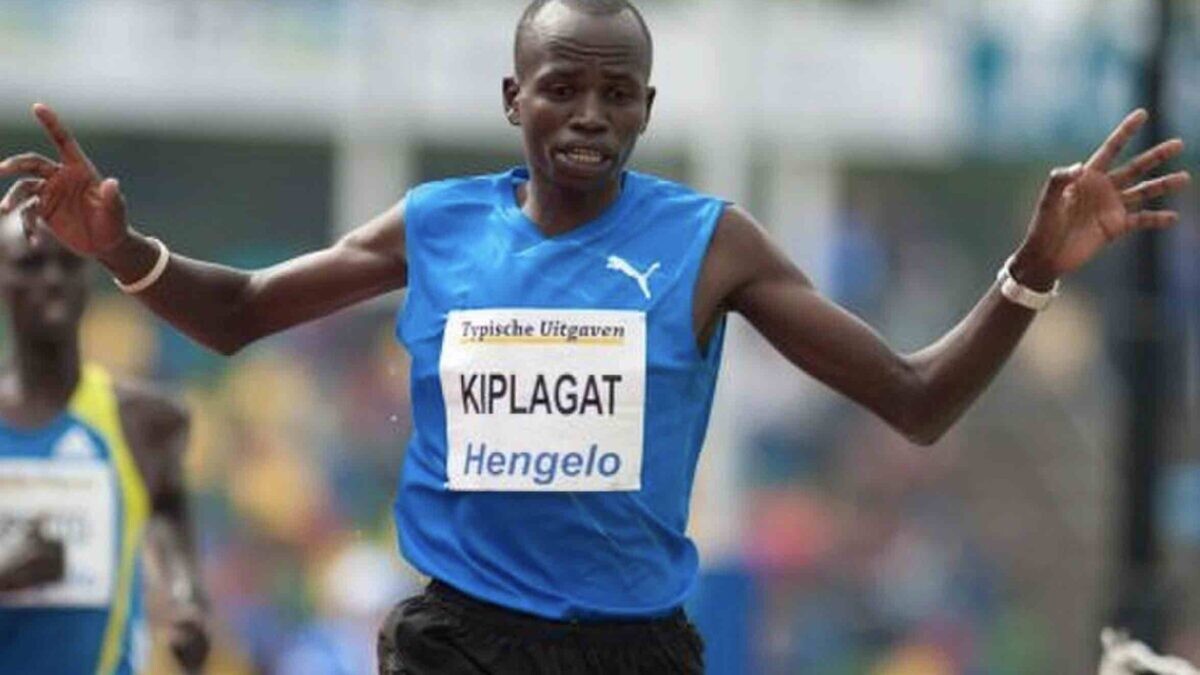
Kenyan police commandant Stephen Okal said that officers received a message about a traffic accident, and arrived at the scene around 5.00 am, as reported by NTV Kenya. Police found Kiplagat lying in the driver’s seat—the athlete had been stabbed in the chest and neck. Police believe the assailants had used a motorcycle to block Kiplagat’s path, and his vehicle had hit the motorcycle before the attack.
“We are still investigating the incident to ascertain what really happened, but what we can confirm is that the man found dead is an international athlete called Benjamin Kiplagat,” said Okal.
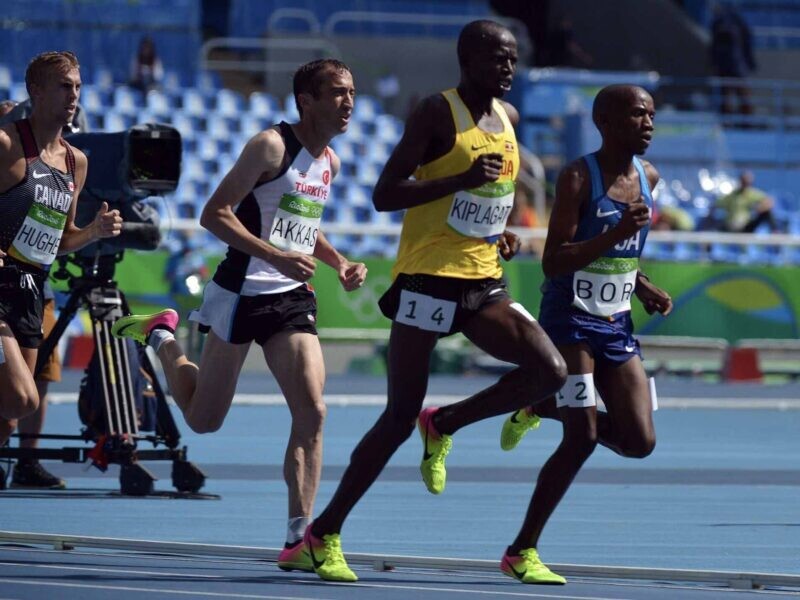
Kiplagat had been training in Eldoret before heading to Uganada to compete. He had Kiplagat had secured a bronze medal while representing Uganada at the Africa Championships in Porto Novo, Benin in 2012, and finished in the heats at the 2015 World Championships in Beijing, China, the 2016 Olympic Games in Rio de Janeiro and the 2019 World Championships in Doha, Qatar.
Kiplagat’s death will be mourned by the international athletics community, while investigations continue to uncover the circumstances around his tragic death.
(01/02/2024) ⚡AMPby Keeley Milne
Running May Have Saved My Life
Nearly 50 years ago I fell in love with running. I was far from a natural. When I was 8 years old, I was struck by an illness that left me with pneumonia in both lungs with one lung being collapsed. I survived that but was left with asthma that persists to this day. This was unfortunate as I loved sports. Asthma more or less disqualified me from participating in “running sports, " leaving me only with baseball as something I could do relatively comfortably.
In high school, I wanted to try wrestling. I figured that I could handle three 2-minute periods. However, I would soon learn that a lot of the training involved running and I struggled mightily to keep up with the other kids early in the season. The next season I hit upon the idea to ask our cross-country coach if I could train with that team, though not be part of the team. In this way, I could be conditioned before the start of wrestling season. And during wrestling season, I would show up two hours before the match to check my weight and run 2-4 miles before weigh-in.
I graduated high school, but the running never stopped. I ran every weekend (4-10 miles each day) for decades. Running was so important to me that when setting up one of my company offices in Japan, I purposely chose a location in a place with a suitable place to run, near the Emperor’s Palace near Tokyo Station. The palace is surrounded by a circular (3km) moat that is a popular running destination. My ritual was that after a week of business, I would do four laps around the palace and then fly home to San Francisco.
Though I loved running I was never interested in racing until about age 50. In 2010, my new son-in-law invited me to join him in a 5K fun run in Lafayette. Passing all those 20-year-olds was all I needed to get the “bug.” I went on to run many dozens of races over the next years, mostly marathons, an ultra, and a triathlon. I was in the best shape of my life, rarely got sick, and was at the top of the world. That would change dramatically.

In 2013, I started noticing that on some days I would experience a strange fatigue that required me to take a walking break. I remember one day that I cut one of my runs short because I was disgusted with my performance. I kept my running clothes on and decided that I would try again later that day. That was the time I set a new PR for that training course. Something was not right, and these episodes of fatigue were increasing in frequency.
The last marathon I ran was in April 2016, a miserable affair clocking in a 4:53. By September, I couldn’t run a mile without a break. I complained to every doctor I met that “something was wrong”, but the standard response was that I was just getting older and I needed to lower my expectations. Even a cardiologist I had seen 10 years earlier told me that there was nothing wrong with me and even quipped “Guys like you are bad for business.” I wasn’t amused.
Finally, in 2019, my asthma doctor recommended a private practice cardiologist in Los Altos who might be willing to work with me. She spent two hours examining me, including an EKG and blood work. She found no problems but listened to my story about my newfound exercise intolerance. She said the only way to get to the bottom of it was to put me under a cardiac stress test.
I showed up at the hospital and they were ready for me. My doctor was there along with two technicians: one to operate the treadmill and monitor the EKG, and one with an echocardiogram scanner for a pre- and post-test scan of my heart. About 15 minutes into the test, about the same interval that I would experience fatigue during a run, the EKG technician exclaimed “Doctor!” and ran out of the room. The doctor told me to stop, asked me if I was OK, and asked me to lie down and have the other technician scan me.
The EKG technician quickly reappeared with defibrillating paddles and was stunned that I was calmly talking to the doctor. The cause of my fatigue was now clear– I was having a heart attack. A very deadly one at that, called Ventricular Tachycardia (VT) in which the top and bottom chambers beat at different rates causing your heart to stop pumping.
Now that the mystery was solved (I was not “fine”), we needed to identify the cause of this electrical misfiring. I was then directed to a cardiac electrophysiologist (EP) that specializes in this sort of disorder. He also took several hours to explain that there are nearly a dozen potential causes of this, and nearly all of them treatable. There was one (the least likely) however, that was not so easily treatable.
As it turns out, the least likely one Cardiac Sarcoidosis, was the one. This is a rare auto-immune disease that typically attacks the lungs but in even rarer cases can attack the heart. Lucky me. These “attacks” leave scar tissue on the heart that disrupts the normal electrical activity of the heart. My EP regretted telling me that this was out of his skill area and needed to refer me to Stanford where they have a cardiologist that specializes in this.
My experience at Stanford was great where a team of cardiologists took care of me. The first step was to see if the VT response to exercise was repeatable (it was). The second step was to confirm that sarcoidosis auto-immune cells were present in my body. The result of that test was positive. The cells were present, but the good news was that they were no longer in my heart and were “dormant.” But the damage was done. The final step was to install an implantable cardiac defibrillator (ICD) in my chest that has two wires screwed into the side of my heart. In case of a sustained VT episode, the ICD would automatically shock me back into rhythm.
My ICD was installed on February 12, 2020 shortly before the Covid lockdown. I cleared to begin running after about six weeks which I gleefully did after eight months of no running and four years of poor running. I am happy to report that I have had zero VT episodes, nor any other serious arrhythmias since the ICD was installed.
But my story is not quite over. Despite the lack of arrhythmias, my running performance has not returned to pre-sarcoidosis levels. I’ve worked with the Stanford cardiology team who have reiterated that my heart is working perfectly. With that ruled out, I asked for a referral to their pulmonary team to see whether there might be some lung function issues that are interfering with my return to normalcy. Like with my heart, I undertook a battery of tests looking for anything unusual.
The results of all these tests were that my lungs, despite a lifetime of asthma are working quite well. The penultimate step in this battery was a cardiopulmonary exercise test (CPET) that is most commonly used to test professional athletes. Despite my running complaints, the tests showed that my body was responding fairly well to exercise as I posted a 12.2 MET (Metaboloic Equivalent of Task).
I studied the voluminous data from the CPET and was struck by one thing– max heart rate. No, not the calculated 220-<age> that most runners are familiar with, but rather seeing that my heart rate levels off at 149 bpm and can go no higher no matter the stress. This is Father Time making his presence known. The reason I can no longer run as fast as I used to is because my heart can’t pump fast enough to generate the required oxygen to propel my body at those speeds. It's basic physics, so simple.
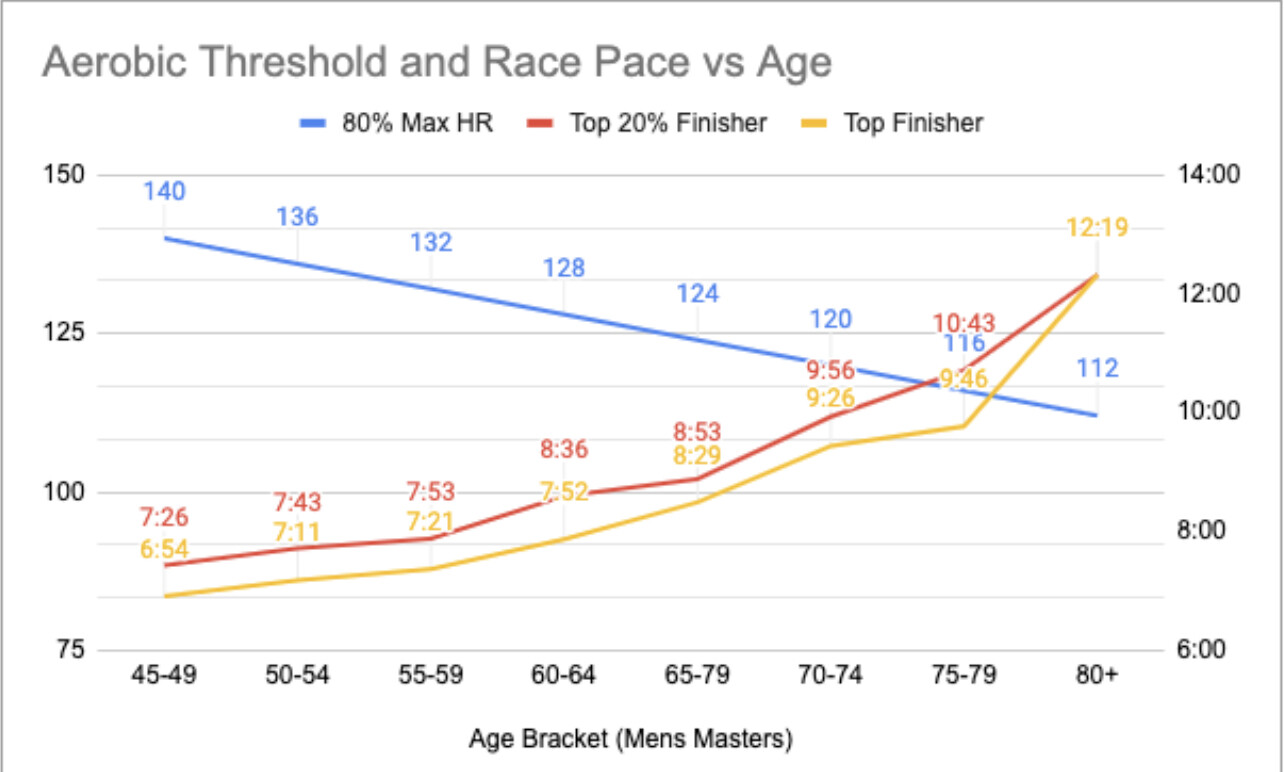
I decided to investigate this briefly and look at some representative races to see if I could see this in actual race data. I looked at the data from the California International Marathonfrom 2022 curious to see an age-related pattern. During my short racing career, I would typically place in the top 20% of my age bracket. I extracted data for Mens Masters into a chart to show Max HR vs. the top finisher and the top 20% finisher. This has given me some consolation that the slowdown is natural and will continue.
One more thing I’d like to share, especially with older runners. Since the ICD, I have found it hard to rebuild my aerobic base. I’ve concluded that the reason for this is that I was still trying to train like when I was a teenager back when my Max HR was 200! Somewhere in my memory banks, I recalled something about low heart rate training and quickly found the MAF methodby Dr. Phil Maffetone. In a nutshell, Maffetone advises training at ultra-low heart rates (180-<age>) to develop a core aerobic base. The process can take 3-6 months and involves running at an agonizingly slow pace (at first.) I am happy to report that this is the one thing that is working for me and for the first time in a long time I am again running with joy.
This has been a very personal story but one that I thought I should share with our running community. I feel that running may have saved my life. If I hadn’t challenged my doctors that I was not “fine” the worst could have happened. We runners know our bodies better than anyone and when something doesn’t feel right, it’s probably not. Don’t be afraid to aggressively advocate for yourself. Your life might depend on it.
(01/01/2024) ⚡AMPby Warren Savage
World 5km record falls to Beatrice Chebet
Kenyan clocks 14:13 at New Year’s Eve event in Barcelona to take six seconds off Ejgayehu Taye’s mark
Beatrice Chebet ended 2023 in style with a world 5km record of 14:13 on the roads of Barcelona in the Cursa dels Nassos event on New Year’s Eve.
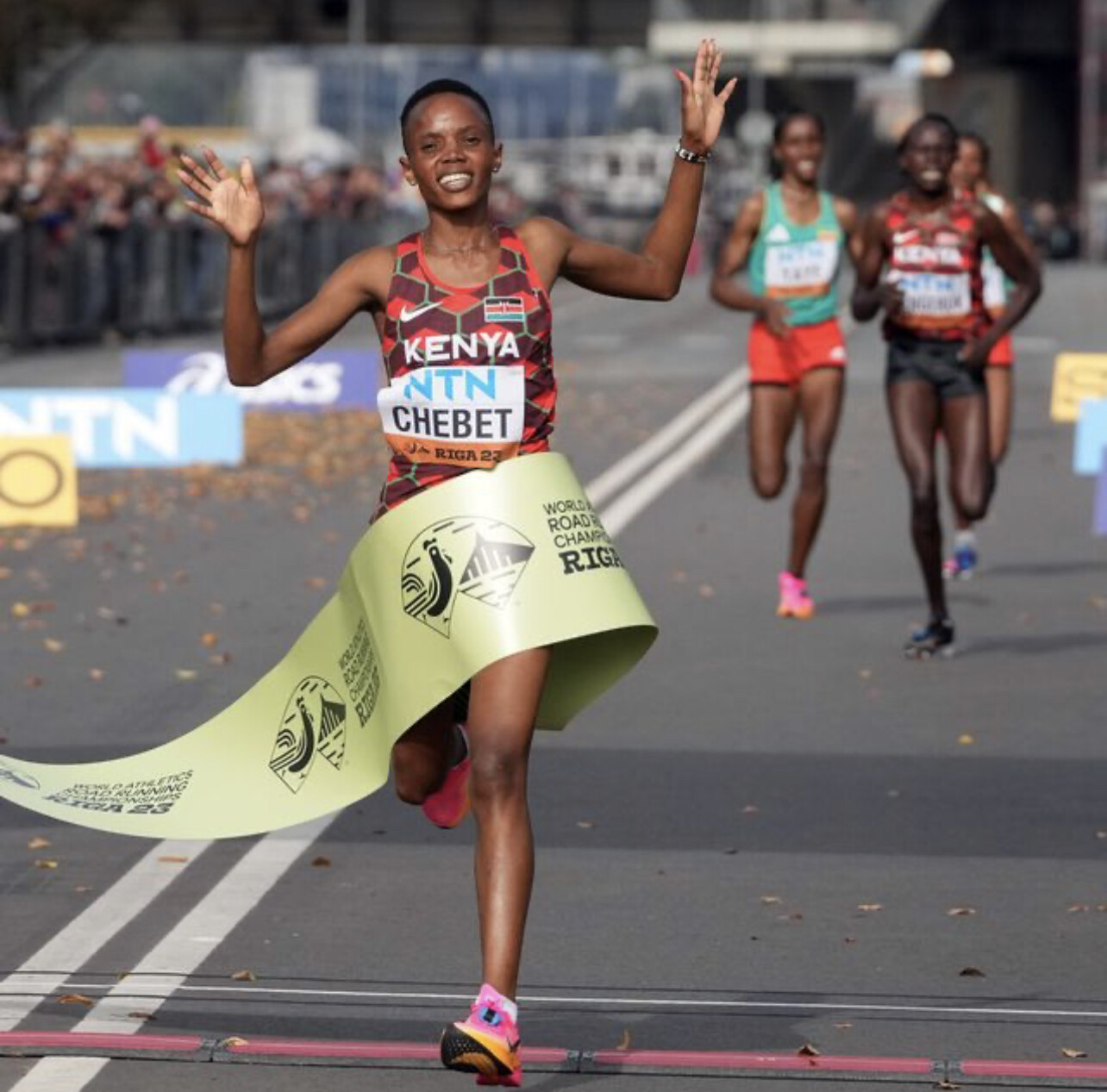
Runner-up was Ejgayehu Taye in 14:21 with Lilian Rengeruk third in 14:25.
Taye held the previous world 5km record with 14:19 from the same Cursa dels Nassos from 2021, although Taye’s run two years ago came in a mixed gender race.
On Sunday (Dec 31) Chebet’s performance therefore not only beat Taye’s mark but smashed the women-only world record of 14:29 which was set by Ethiopia’s Senbere Teferi in Herzogenaurach in September 2021
(01/01/2024) ⚡AMPby Jason Henderson (Athletics Weekly)
Cursa dels Nassos
Certain local traditions may strike you as funny, bizarre, or downright disturbing. You may know that the Catalans ring in the new year by eating one grape with each chime of the clock at midnight, but did you know about the man with many noses ('home dels nassos')? Folklore has it that there's a man who has as many noses...
more...Usain Bolt "not worried" about his world records being broken
Although it feels like just a few years ago that Usain Bolt won his third consecutive Olympic double in the 100m and 200m at the 2016 Olympics, it’s been almost seven years since he last competed professionally. Bolt retired as the biggest star in athletics, and still considers himself a fan of the sport.
In a recent interview with World Athletics, the eight-time Olympic champion was asked if he thinks his 100m and 200m world records will fall anytime soon. Bolt replied that he is “not worried” about that possibility.Bolt’s world record marks of 9.58 seconds in the 100m and 19.19 seconds in the 200m were both set at the 2009 World Championships in Berlin.
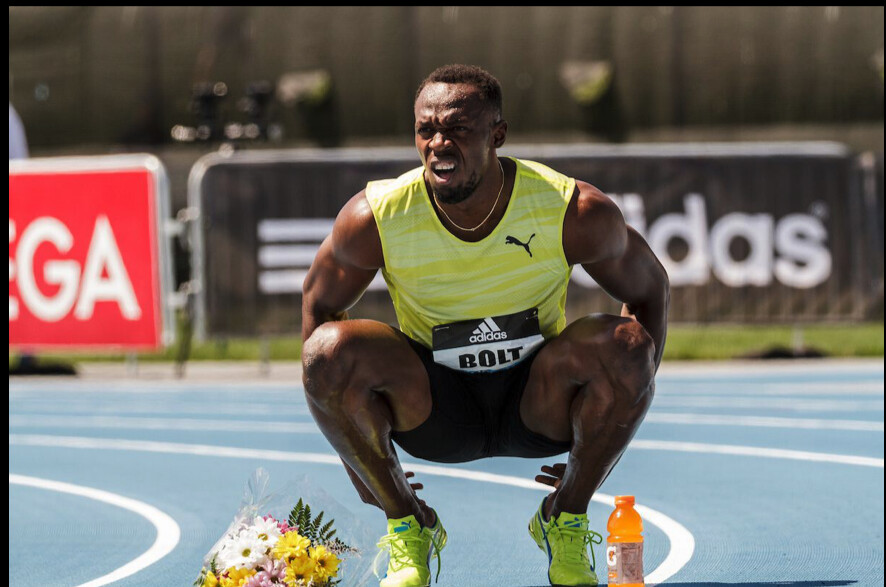

“I’m not worried about any of them,” Bolt said regarding the times. “I think the hundred will be harder (to break) because it’s quicker. If you make a mistake during the race, you’re not going to get it. It’s a lot more technical.” The Jamaican sprinting icon told World Athletics that he knew he was going to break the world record in Berlin, because he was in excellent shape at the time.The 2022 100m world champion Fred Kerley and the current world champion Noah Lyles have been vocal about trying to chase Bolt’s records, but neither has come close.
Lyles, who was named as the 2023 World Athletics Male Track Athlete of the Year after winning three gold medals in Budapest, came within a tenth of a second of the 200m world record at the 2022 World Championships in Eugene, Ore., running 19.31 seconds to win gold and set the American 200m record.
His time made him the third-fastest 200m runner in history behind the two Jamaicans: Bolt’s 19.19 and Yohan Blake’s 19.26.“Jamaica’s Yohan Blake to retire after Paris Olympics” — Canadian Running Magazine
Bolt’s 100m record of 9.58 has gone untouched for 14 years and 4 months, and on May 8, 2024, he will surpass U.S. sprinter Jim Hines to become the athlete who has held the 100m world record the longest. Hines was the first sprinter to break the 10-second barrier in 1968 and held the 100m world record for 14 years, 8 months and 19 days, until another American sprinter, Calvin Smith, lowered his mark by two-hundredths of a second in 1983.
No sprinter has run under 9.75 seconds since 2015. The 37-year-old said he enjoys still being referred to as the fastest man ever, and it’s something he will never get tired of hearing. “It’s a great title to have. It’s something that I enjoy hearing and I enjoy knowing,” said Bolt.
(12/31/2023) ⚡AMPby Running Magazine
Running For 12 Hours Straight Taught Me Real Confidence
You’re stronger than you think.
When I hear people say, “You can do it!” I’m usually skeptical.
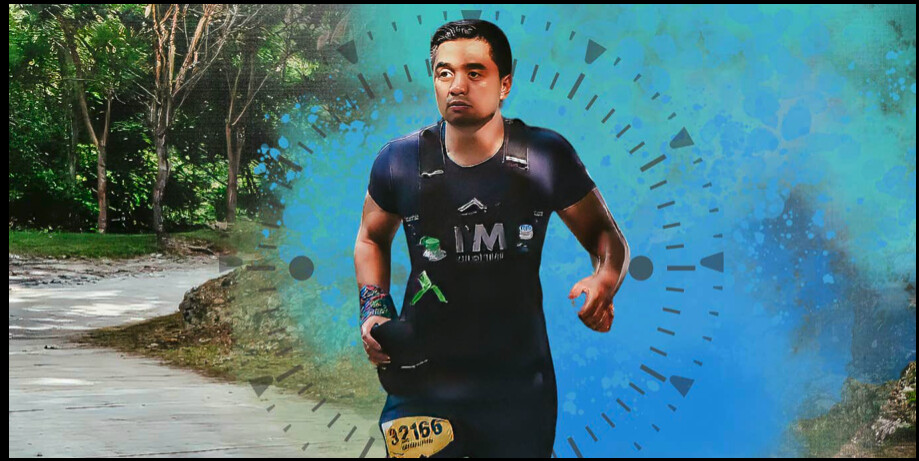
People tend to say that when they have nothing else more encouraging to say. So that kind of positive affirmation — while appreciated — does not exactly provide the substantial and “real” encouragement I’m looking for.
Nowadays, when I find myself lacking in self-confidence, or when I’m feeling like a big failure as a writer because my short stories and essays keep getting rejected by publications, I find myself thinking about that fateful morning in early 2018 — when I first started to get into trail running.
It took me 12 hours to finish my first 25-kilometer mountain race.
For those unfamiliar with trail running, 12 hours is a long, long time to finish 25K. The race’s cut-off time is 8 hours — which is already generous. Yet, I didn’t make it.
Nevertheless, that 12-hour 25K run taught me what real confidence is.
It was the Mount Ugo Marathon, which had qualifying points for UTMB. The UTMB, set in the French Alps, is one of the biggest and most prestigious mountain races in the world. To qualify, a runner has to gather enough points from difficult, qualifying races — like the Mount Ugo Marathon.
The Marathon offered 50K and 25K distances. And since it was my first time, I joined the 25K.
We started at the base of a mountain in Kayapa, Nueva Vizcaya. The first few kilometers were paved roads. Then it turned into dirt roads and eventually trails. Over mountain ranges, it was 10 kilometers of almost vertical uphill.
I’d lift each leg over the other and feel my ankles threaten to rip from the constant battle against gravity. I no longer bothered to look up because the damn mountain just kept going on and on. And I cursed myself for not having more uphill training.
Eventually, we reached a more forgiving part of the trail — flat enough that I could jog it. And I started gaining speed and momentum.
When I hear people say, “You can do it!” I’m usually skeptical. People tend to say that when they have nothing else more encouraging to say.
At the turning point for 25K runners (the 50K runners had a different route), a race official told me I was running 11th. I was excited. I thought if I maintained my pace and outran another runner, I’d be part of the top 10! Not a bad way to finish my first half-marathon.
I reached an intersection that had no marks or ribbons. I was confused. And I kind of assumed trail races would be like roads; you just keep going, and you’ll eventually find the right way because the signs will be so obvious. This is a big mistake because, I would later learn, mountain trails don’t work that way at all!
But I wanted to get that Top 10 so bad that I simply picked a path, hoped it was the right one, and gunned through.
I thought I’d turn back if I didn’t see any markings/ribbons after five minutes of running. But then I saw one! So I kept going.
A few mountains later, the ribbons suddenly stopped appearing. I started getting nervous.
Am I on the right path?
But the ribbon indicated this trail path. There were no intersections so far.
Should I keep going? Maybe there’s another ribbon ahead.
I’d later learn I followed some old markings from the previous year’s race. I guess the race organizers didn’t thoroughly remove all markings in that area since it was supposedly far from the designated route. If only I studied the course map, I’d have known something was wrong. But I didn’t, so I kept running through the previous race’s 50K route.
Back then, I didn’t have a smartphone. I had an old Nokia from my dad; the kind that can only call and text. And the signal was bad. So I had no way of knowing where I was via GPS, and I also couldn’t call someone for help.
I decided to reach the peak of the closest mountain I could find.
Maybe if I can get an overview of the place, I’ll have a better idea of where I am.
I reached the mountain’s summit and stared at a panorama of rice fields and cows. No houses or humans in sight. I knew then that I was very much lost.
At that point, I’d been running for over five hours in the mountains. The sun was high above, painful on the skin. I’d traveled so far from the race route that I’d run out of food and water. I only had one last bottle of Gatorade left. And not a single morsel of food.
The fatigue was growing underneath my muscles. My legs felt like chunks of cement blocks; they felt so heavy I could barely lift them.
I thought of Bear Grylls and whether I had to drink my pee while waiting for rescue.
I took a sip of my dwindling Gatorade and tried to push the panic away; those thoughts attack you when you’re in a vulnerable state. Thoughts that I might end up dying on that mountain of hunger or thirst or wild buffaloes. Or that they’d find me delirious, babbling about cows and rice fields, after days of searching.
I started walking back, slowly. I climbed one hill after another. Midway up the last hill, I sat on the trail. My legs couldn’t walk anymore. Like, literally. People often say, “I can’t walk anymore” — even if, with enough willpower, they still can. But for the first time, regardless of willpower, I felt that my legs couldn’t take another step. So I sat in the middle of that trail.
My calves cramped for the third time and I screamed in pain.
The pain came along with the panic. Am I going to go Bear Grylls from here?
Freaking Bear Grylls. Why did I have to think of the man in the middle of a crisis?
I focused on my breathing to calm myself. I have to survive. So I rested for a bit. And slowly, while conserving my energy, I made my way back up, one super slow step after another.
When I finally returned to the intersection where I first got lost, some race officials were there. They were sweepers — race marshals who were going through the route to support laggards and slowpokes like me. At that point, more than eight hours had passed. The sweepers pointed me in the right direction. And I limped until I reached the final Aid Station, which was 10 kilometers away from the finish line.
My body had never felt so broken, so tired, so truly and utterly exhausted.
At the aid station, I thought I saw a bunch of angels — helpful, smiling volunteers who fed me fruits and nuts and marshmallows and chocolates. They gave me water and electrolyte drinks. They sprayed my legs with something that helped ease the cramps. It was one of the happiest moments in my life.
After I recovered enough to speak, I said to one of the volunteers:
“I don’t think I can walk the next 10 kilometers. When does the sweeper transport arrive?”
The transport was used to ferry people who could no longer finish the race on their own feet.
“The last transport just left,” the volunteer replied. “Another truck would arrive in four hours to sweep the 50K runners who’ll drop out.”
I took a deep breath. Four more hours. What do I do? Wait?
I’ve already lost the race. Even if I reached the finish line now, I’d still be a non-official finisher. But how do I go home and not feel super bad about the failure of my first 25K? Then a small thought came:
Why don’t I try limping my way down? Maybe the transport will arrive earlier and they’ll be able to pick me up along the way. Or if not, another sweeper will pass me by and help me.
Since the volunteers at the aid station couldn’t leave their posts to assist me, I decided to see how far I could go.
I filled my running vest with food and my bottles with electrolyte drinks. I bid farewell to those angels at the aid station, and then, finally, I dragged my feet and started limping.
I limped my way to the finish line after 12 hours.
I avoided the finish line itself. I was embarrassed to have people see my race bib and know that I was actually from the 25K, not the 50K, and that it took me 12 hours to reach the finish line. But apparently, the race director knew about this lost 25K runner after the sweepers reported it. And he kindly welcomed me and congratulated me for finishing — even if it wasn’t an “official” finish.
I made it back on my own two feet.
And that’s when I realized it: I did it even though I thought and fully believed I couldn’t.
I did it, even when I felt like giving up. I did it, even when I didn’t believe in myself.
So whenever I face something that destroys my self-confidence, I often return to that memory.
When I feel like giving up, or I’m spent and exhausted, and my brain and body are telling me I can’t do it anymore — I push myself to take one more tiny step. Just a little step forward, to see how far I can go.
Because I have done it before and succeeded. And I’m confident I can do it again.
(12/31/2023) ⚡AMPRunning Strides Makes Me Look Ridiculous, But They Also Make Me Faster
Yeah, doing strides in public can make you look funny. They’re also crucial to improving form and speed.
When I first moved to my small Pennsylvania city two years ago, I naturally scoped out the training basics: a greenway for long runs and tempos, dirt trails for easy days, a track, and—to be used most frequently—a flat patch of grass or road at least 100 meters long within a block or two of my house. That last one might sound unnecessarily specific.
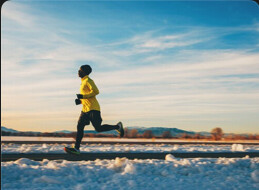
I was looking for a spot where I could run “strides.” Strides (never “striders”) are an imperative part of my year-round training, no matter what distance I’m targeting. After easy runs, I do four to eight strides, somewhere around 5K pace, taking enough time between each one to get my heart rate back down. They’re faster than my normal running pace, but not fast enough to make my legs sore. The purpose isn’t to make me tired, but to keep me in touch with some speed and reinforce proper biomechanics at the late stages of a run. While most coaches recommend doing strides for 100 meters, I typically eyeball it. A city block, a football field, or even just 10 to 15 seconds is close enough.
Before I start strides, I do a series of drills to prime my legs for faster running and to establish good form, like making powerful contact with the ground and landing my feet underneath my hips. I do ankle dribbles, calf dribbles, knee dribbles, straight-leg bounds, fast leg (right leg), and fast leg (left leg). All with a slow walk back to the start before beginning the next percussive drill. Then I start my strides.
The dream spot for strides is an artificial-turf soccer field where I can take off my shoes when I feel like it, but in my town, I have to settle for a fairly busy back alley. The street attracts construction workers getting McDonald’s coffee before work, mothers pushing strollers, daily dog walkers, my neighbor who sometimes smokes weed on her porch. So during the four times a week I “stride out,” I can’t help but feel a little self-conscious. I assume the people walking near me think I’m strange for barreling down the street at race pace. Sometimes I’m worried that people will think I’m chasing them. There’s always a part of me that wants to explain to bystanders what I’m doing: I promise I’m not trying to steal your purse, I just want to PR in the half marathon!
One morning, I noticed a man at the end of the alley. He was sitting behind an easel, facing down the road toward me. It reminded me of an exercise I did in high school: Our art class was told to find a place in the city to set up and paint whatever we saw. Most things—buildings, signs, trees—remain consistently still, so you’re able to fill in details with appropriate hues and shadows. But some things move quickly. You might not have time to paint the skateboarder that flies across the street. I like to imagine I made it into the man’s painting. I was doing strides in the alley for about 10 minutes, enough time for him to get a good look. Even though I always wonder if people are watching me when I do strides, he’s the only person I’m certain was.
Since beginning to run as a high school junior nine years ago, I’ve learned that training is always a little bit embarrassing. To truly maximize my potential, I have to be comfortable with being uncomfortable. Not just in races or hard workouts, where physical discomfort is inevitable, but I’ve accepted that being vulnerable is how I grow stronger and more confident.
I’ve got to be okay with doing things a little differently. Sometimes I’m embarrassed when I come up with a lame excuse to get out of happy hour because I have a workout the next day. Or I feel self-conscious lifting small weights at the gym, because I’m focused on injury prevention, not bulking up. But nothing humbles me more than doing strides down a public alley at 7 in the morning.
(12/31/2023) ⚡AMPby Runner’s World
How to Go From 5k to Marathon: Tips From an Expert
Ramping up in distance from a 5k to a marathon is a significant step, and it requires careful planning and gradual progression to avoid injuries and ensure success.
Build a Running Base
Building your aerobic base is one the most important things you can do when aiming for a longer race. Building this base will help you get stronger and build your endurance so you can handle longer, slower efforts.
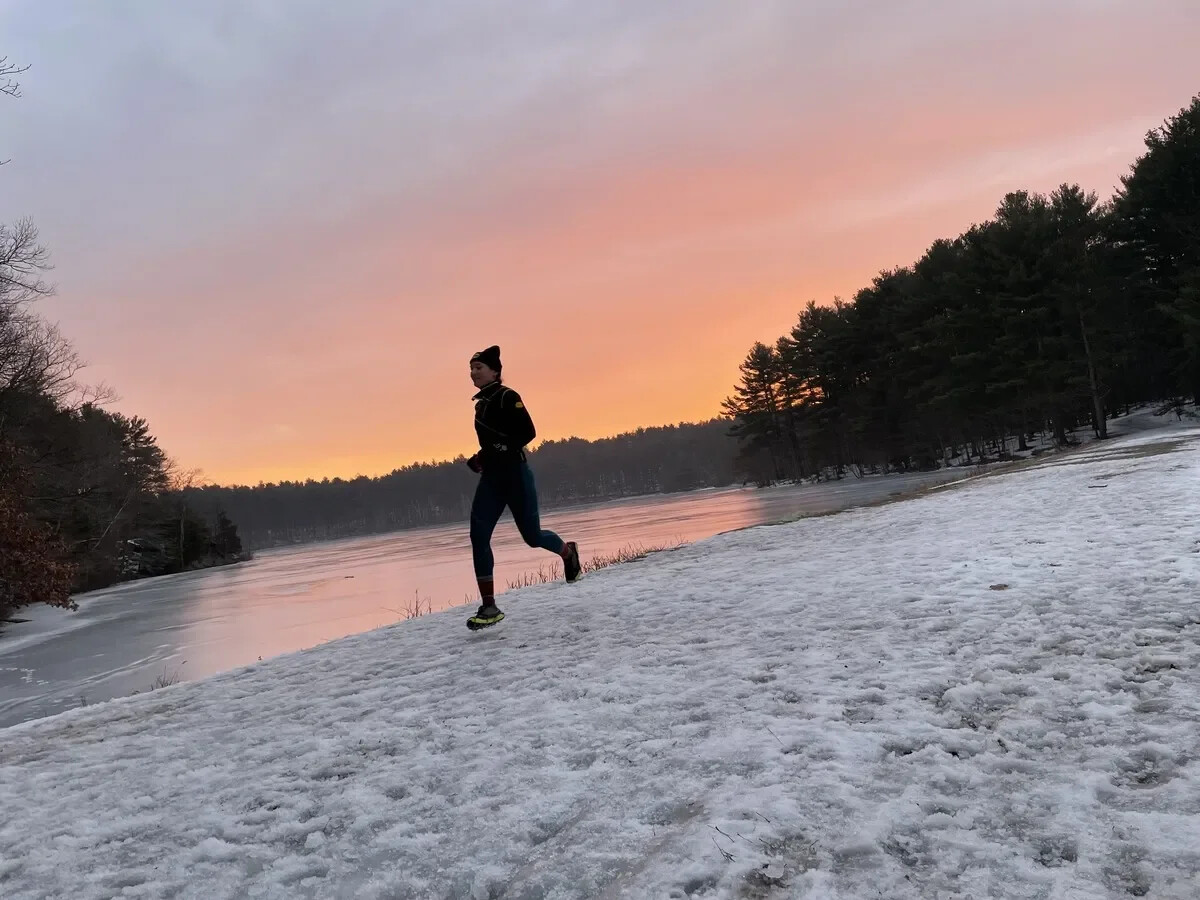
Set Realistic Goals
Establish realistic short-term and long-term goals. Consider running a 10k and a half marathon before attempting a full marathon. This allows you to gain experience with longer distances.
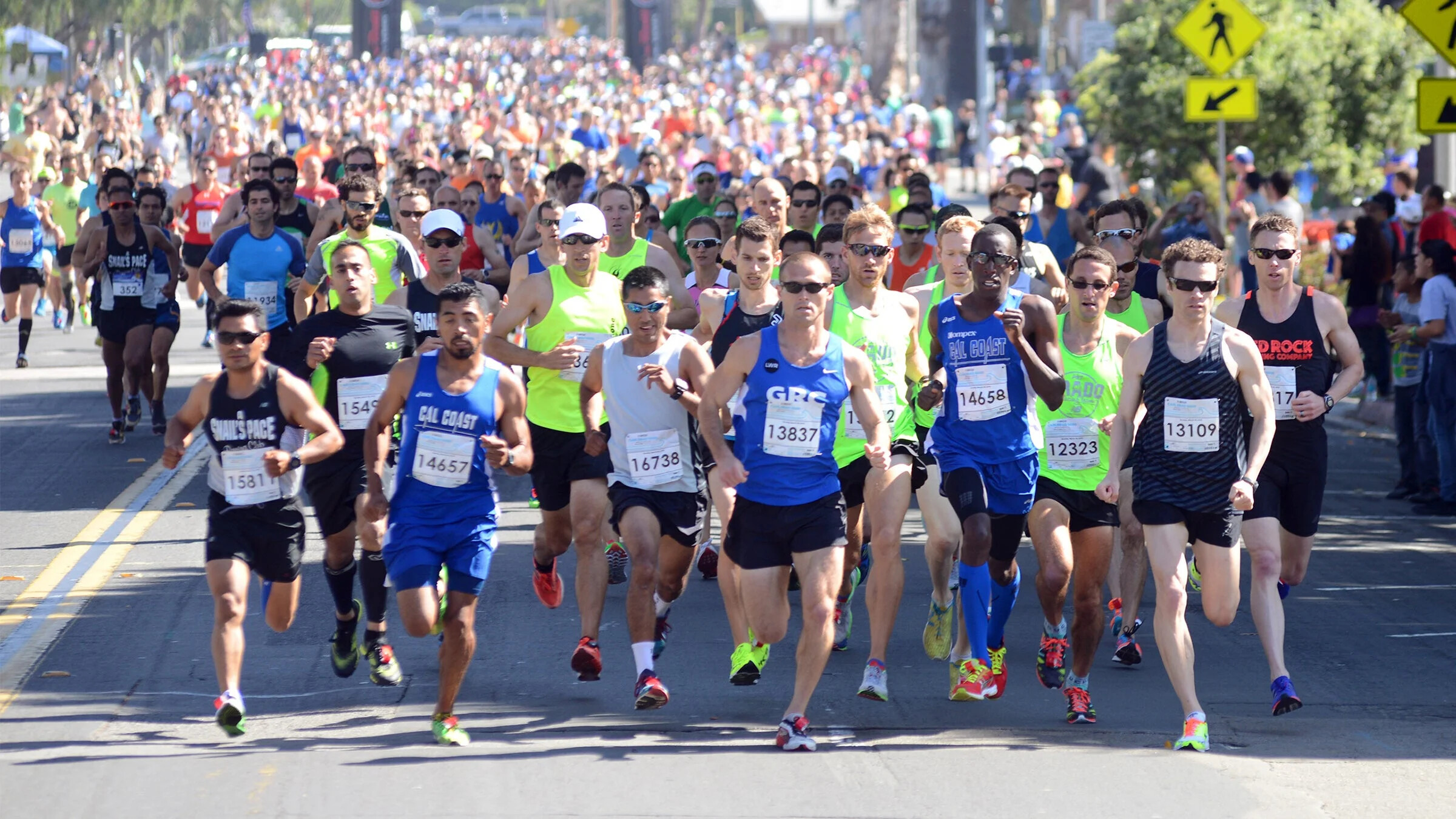
Increase Mileage Gradually
Gradually increase your weekly mileage by no more than 10% each week. This helps prevent overuse injuries and allows your body to adapt to the increased workload.
Consistent Running
Aim for at least 3-4 days of running per week. Include a mix of easy runs, tempo runs, interval training, and a long run.
Long Runs
Incorporate a weekly long run into your training. Increase the distance of your long run by 1-2 miles every 1-2 weeks. Every 3-4 weeks, scale back the distance to allow for recovery.
Cross-Training
Include cross-training activities like swimming, cycling, or strength training to enhance overall fitness and reduce the risk of injury.
Rest and Recovery
Allow your body time to recover by scheduling rest days into your training plan. Listen to your body, and if you feel fatigued or notice any signs of injury, take extra rest.
Nutrition and Hydration
Pay attention to your nutrition and hydration. Proper fueling is crucial for longer distances. Experiment with nutrition during your long runs to find what works best for you.
Practice Race Conditions
As you approach longer distances, simulate race conditions during your training. This includes practicing your nutrition and hydration strategies and running at your goal marathon pace.
Tapering
In the weeks leading up to the marathon, gradually decrease your mileage to allow your body to recover and be fresh on race day.
Mindset
Develop a positive mindset. Mental strength is crucial for marathon training. Visualize success, break the race into smaller, manageable segments, and stay focused on your goals.
Race Day Planning
Plan your race day strategy, including pacing, nutrition, and hydration. Stick to a pace that allows you to finish strong, especially considering the longer distance.
Remember that everyone’s body responds differently to training, so be attentive to how your body feels and make adjustments as needed. If possible, consult with a coach or an experienced runner for personalized advice based on your specific circumstances.
(12/30/2023) ⚡AMPby Laurel Walker
How to start running in 2024
Mile2Marathon coach and 2022 Around the Bay winner Kevin Coffey shares his tips for getting started.
January marks the time when many Canadians are considering starting a running routine, but is it as simple as lacing up your old sneakers and heading out for a jog? We spoke to Kevin Coffey, a Mile2Marathon coach in Kingston, Ont., Lululemon ambassador and the winner of the 2022 edition of Around the Bay (the 30K road race in Hamilton) to find out how new runners can get started on the right foot.
Before you start running
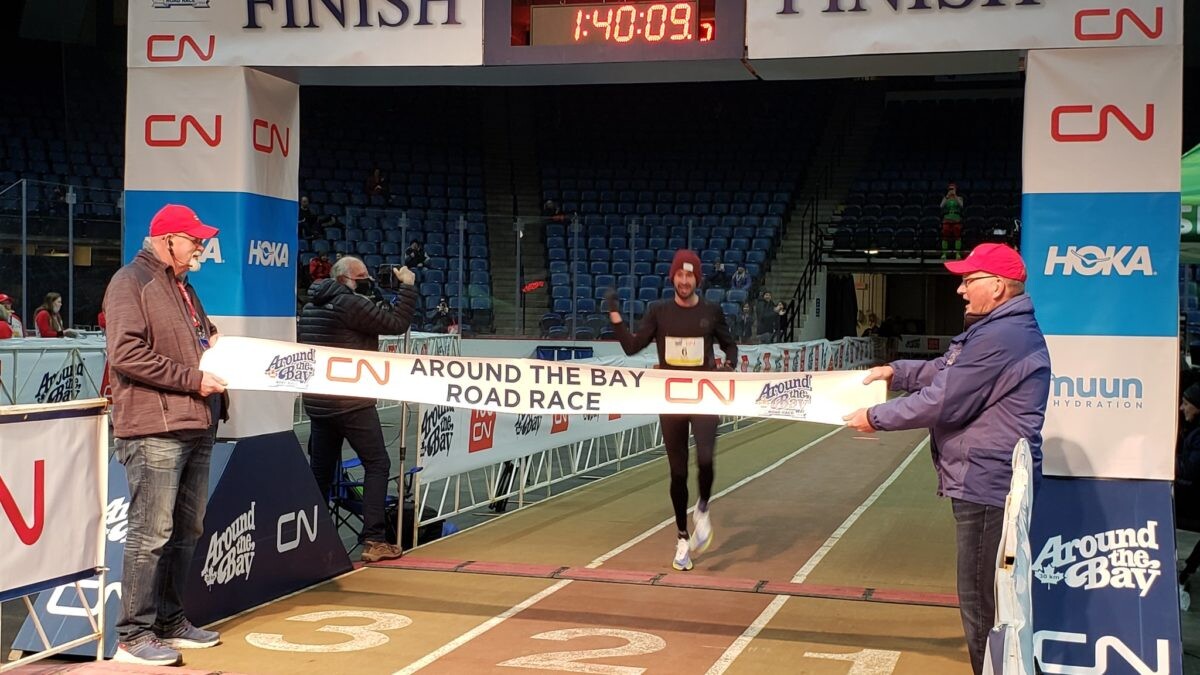
Before beginning your running routine, Coffey suggests assessing your medical history. Most people should be able to start a walk/run program right away without much trouble, but if you have any pre-existing injuries or limitations, he recommends consulting your doctor before starting, to avoid the scenario of having to abruptly halt your running program after just a few attempts.
“Before diving into a walk/run regimen, I usually suggest—though it may sound unconventional—to evaluate whether you’ve ever walked farther or longer than from home to the car,” says Coffey. “If this applies, I would recommend gradually building up to 30 minutes of walking before starting on a walk/run program.”

Getting started with run/walk
The run-walk method is popular and highly recommended for beginners. It significantly reduces the risk of injury by allowing for a lower heart rate and less strain on muscles, soft tissues and bones. Coffey suggests using unequal segments of running and walking to find what works best for you.
“Something else I would consider is the individual’s athletic background and current fitness level,” he says. “The approach might involve running for shorter intervals, like 30 seconds, followed by three-minute walking intervals, repeated several times. For someone aiming to safely return to training after prior running experience, they might find comfort in running for 1 minute followed by a three-minute walk, repeated in sets.”
Coffey also advises incorporating a five-minute walk at the beginning and end of your workout. This helps prepare your body for exercise and aids in a safe cooldown.
Frequency and intensity
When you’re just starting out, Coffey recommends running two or three times a week, but adds that the frequency should be based on your background in physical activity and whether you’re entirely new to running. Starting with two sessions per week is optimal for many runners, while more active individuals might benefit from running three times a week. He discourages new runners from exceeding three sessions a week, to prevent overuse injuries.
In terms of speed and intensity, focus on gradually increasing your volume of running at a consistent pace, rather than getting caught up in specialized training concepts. “Early in the running journey, the primary focus should be enjoyment, and gradually increasing the volume of running at a consistent pace,” says Coffey. “It’s after completing the initial 5K milestone that individuals can consider incorporating these diverse and more intense workouts.”
Avoid common mistakes
A common mistake among new runners is comparing themselves to others. Everyone has a unique starting point, and it’s important to map out a plan tailored to your running goals. “Some individuals have a lifelong history of sports and are transitioning their focus to running, while others might not have run continuously for 400 metres since their high school PE class,” says Coffey. Avoid the temptation to mirror the training routines of more experienced runners; focus on your own journey.
Overcommitment and overloading running schedules are other mistakes to avoid. Setting rigid schedules without considering life’s unpredictability can lead to frustration and demotivation. Consistency is key, and Coffey recommends approaching your new running routine with flexibility, so you can adapt to unexpected life events that might cause you to miss a run.
Coffey’s best advice for new runners
Start slowly: Beginning gradually allows for energy conservation and enjoyment of the sport. Speed and endurance will improve over time.
Start with a group: Joining a running group provides motivation, accountability and a sense of camaraderie.
Start with a goal: Setting a goal adds purpose to your runs and helps maintain motivation. It can be as simple as committing to running once a week, or targeting a specific time for completing a 5K.
(12/30/2023) ⚡AMPby Brittany Hambleton
The Weirdest Things Runners Found in 2023
Angry cows, lost kittens, exotic fish, oh my!While on a trip outside, getting the miles in, runners usually focus on the task at hand, perhaps hoping to find a new personal best. Sometimes, however, what they see in the middle of a run can range from bizarre to downright absurd, and in 2023, those findings delivered. From extinct fish and ancient teeth to many cows and other livestock, these are the strangest things runners came across in 2023.
A runner in Australia—running along Primrose Sands Beach in Tasmania—stumbled upon a fish many scientists thought was locally extinct. The fish, known as a spotted handfish, was dead when found by runner Kerri Yare, who was struck by the odd look of the sea-dweller. The handfish is characterized by orange fins resembling webbed duck feet, measuring about 3-4 inches.

“If you’ve never seen a handfish before, imagine dipping a toad in some brightly colored paint, telling it a sad story, and forcing it to wear gloves two sizes too big,” the Commonwealth Scientific and Industrial Research Organisation said about the discovery. The CSIRO says that the spotted handfish once had a thriving population along Tasmania’s east coast. Still, over the last three decades, their numbers have shrunk due to dredge fisheries and the invasive North Pacific seastar, which prey on the fish’s eggs and the sea tulips they use to spawn. The CSIRO also said that spotted handfish are “rare and elusive,” since their size and solitary lifestyles make them tricky to spot—perhaps even more challenging when running past them at a decent pace.
Not to be outdone by merely finding an extinct animal, one runner made a downright prehistoric discovery while on the run.
Jim Smith of Santa Cruz, California, was on a run when he discovered a mastodon tooth on the beach dating from the Ice Age. Scientists believe the prehistoric elephants roamed North and Central America before going extinct 2,000 years ago. Despite being a couple of millennia old, this was the second sighting of the tooth in a week. A tourist had seen the mastodon molar a week before, with images of the tooth circulating on social media. However, when workers from the Santa Cruz County Museum of Natural History went to look for it, they found no trace. Luckily, Smith found it while out on his run and turned it into the museum to study.
Of course, not all animals found while counting morning miles are extinct or petrified; some just got stuck and needed assistance. That’s what happened when Brian Glover of San Francisco heard a bark while running along Ocean Beach. “I turned around immediately to make sure I wasn’t about to get jumped by a dog,” Glover told Runner’s World. However, nothing was behind him. “I continued running, and I just kept thinking back to the way the dog’s bark sounded.”
After 10 minutes of peering between crevices and calling out, Glover finally saw a pair of eyes staring back at him from a small hole beneath the rocks. He reached down to help, but the anxious animal growled in fear. Luckily, it was still low tide, but the canine only had a few more hours until the ocean crept towards the rocks. Glover rushed home and called San Francisco Animal Care & Control to help. Soon after, animal control called Glover to inform him they rescued the dog, Gwen, and delivered her back to her owners unharmed.
Not just dogs needed rescuing from runners this year, as one stray kitten in Chicago can tell you.
While running in the Chicago Marathon, Sarah Bohan, a mere 5 miles from the finish, discovered a stray cat that had been separated from its mother. “I saw this fluffy thing scurrying under a bridge and recognized it as a dirty, scared cat that was obviously a stray separated from its mother.” Setting aside her need for a PR, Bohan, who says she was running the race for Team PAWS Chicago, one of the country's largest No Kill animal welfare organizations, knew she had to act. Upon discovering the kitten, she and another runner, Gia Nigro walked for about a mile, asking spectators along the way if they could care for the cat. Eventually, they found a cat owner who promised she’d look after the kitten.
Once they knew the kitten was in good hands, Bohan and Nigro finished the race together.
Not all animals runners find along the run need assistance. Aggressive cows also dominated the headlines in 2023, as two separate incidences of aggressive cows were reported.
A 43-year-old woman was injured when a bull charged at her while preparing for a run on the Whistle Stop trail in Farmington, Maine.
According to police, the woman said she was “lifted off the ground by the animal’s horns but was able to escape into the nearby tree line.”
She required stitches from a laceration, according to the police report. Since the incident was reported on April 1, the police department let the public know this wasn’t an April Fool’s Day prank in their statement.
In another attack, a runner was hospitalized after being attacked by a small herd of cows on a Colorado trail. Another person called 911 after seeing the runner trying to protect themselves while on the ground surrounded by 15 to 20 cows, mostly mothers with their calves.
Rangers responded within 15 minutes, and the runner was taken to the hospital. The attack led to the trail's closure, while rangers advised runners to run away from any cows in the area. A sign at the start of the trail reads: “Give Cows Space. They Can Be Aggressive.” Words to live by.
Other livestock also chased after runners, although less aggressively. A group of goats in Ontario, Canada, caused runners to hoof it in the opposite direction as they gave chase. The Ontario Provincial Police posted on X about the runner’s run-in with the goats, which occurred near the Grenville Park Camping and RV Park in the township of Johnstown, near Ottawa. Besides throwing in goat-related puns about the animals, police didn’t share detailed information about the encounter.
(12/30/2023) ⚡AMPby Runner’s World
Your Successful Race Season Starts Now
We looked at thousands of data points on Strava to determine what winter habits make for a successful summer season
In our monthly column in partnership with Strava, we take a deep dive into compelling data points that reveal the more human side of sport.

While summer race goals might feel far off, athletes know winter is an important time to commit to consistency. With new year’s resolutions right around the corner (see our recent column on how to meet your yearly mileage goals), we looked at how the most consistent runners use their winter season to get stronger and faster.
Cross-Training Can Help Athletes Stay Consistent Through the Winter
Consistency is key for progressing training and minimizing injury risk. Staying consistent can help you avoid injury, and avoiding injury helps you stay consistent.
Muscle fiber growth and recruitment is improved with consistent stress and recovery cycles, and you don’t need huge efforts to reap the benefits. Short bouts of running (even just 10-20 minutes a day) can produce adaptations down to a cellular level. Consistency is also critical for aerobic and metabolic adaptations, helping your body more efficiently transport oxygen-rich red blood cells to your muscles via capillaries through increased capillarization, a process known as angiogenesis.
When it comes to winter training, don’t let perfect be the enemy of good. Twenty to thirty minutes on a treadmill or running in the snow is always better than zero (in the context of good health and recovery).
Suppose your goals are primarily to stay healthy and active through the winter. (While we didn’t assess how cross-training affects fitness or speed, it can be assumed that increased consistency and activity frequency usually correlate with improved speed, fitness, and health.)
In that case, cross-training can be an important part of your winter training regimen. Most runners on Strava don’t just run. Seventy-five percent of runners cross-train in the summer, too, using activities like outdoor cycling, walking and hiking to increase their activity frequency.
Runners who cross-trained in the summer had a 20 percent higher chance of staying active through the winter. Eighty-nine percent of athletes who cross-trained in the summer continued to be active throughout the winter, compared to 74 percent of athletes who didn’t cross-train through the summer and continued to be active in the winter.
Consistent athletes stay consistent through the winter. Twenty-four percent of athletes who run three times a week continue to hit that cadence in the winter, while 58 percent further reduce frequency. Fifty-two percent of athletes who run seven times a week in the summer continue to do so in the winter, with only 48 percent reducing run frequency. Still, half of all committed runners scale back to an extent in the winter, but more on that later when discussing offseasons.
While many runners may not be thrilled to take their runs indoors and onto the dreadmill, consistent athletes gravitate towards the treadmill when conditions are tough.
The share of indoor runs doubles from December to February on Strava, with 16 percent of all runs occurring indoors. The treadmill can be a great training tool for athletes, with elites like Elsey Davis logging significant ‘mill time before her Golden Ticket win at UTMB’s Val D’Aran.
According to Strava, winter cross-training also moves indoors, with activities like indoor cycling, strength training, and walking as the most popular cross-training options.
While there’s been much discussion about what constitutes an off-season and the benefits for athletes, Strava data shows that many highly committed and consistent runners take a down-season from higher volume.
Data suggests a modest off-season won’t set reasonably consistent runners back too much, but that athletes who are already running at a moderate to low volume (less than five times a week) should focus on maintaining a base of consistency through the winter rather than rushing to take time off of already low volume.
We’re not saying don’t take time off. Winter can be a great time to emphasize cross-training and strength training and enjoy a new mix of winter sports. But the higher your healthy volume is coming into the winter, the more flexibility athletes have to add additional winter activities into their training without sacrificing fitness. The athletes who have the most success (defined as returning to consistent running come summertime) put themselves in a position to jump back into spring training with a bit of a base.
Ideally, runners shouldn’t need more than a few weeks to get back to their main-season training volume. Swings in training volume increase the risk of injury, and weeks spent “getting back in shape” are less effective at progressing your training forward.
Runners who reduced running volume (defined in average weekly distance) in the winter by 1-10 percent averaged within ten percent of their summer average mileage in spring (March-May). Runners running three times a week in summer who reduced volume in winter by 1-10 percent were still able to put in spring training weeks just seven percent shy on average of their summer mileage.
Usually, this difference is a few miles a week, which is fairly easily re-established. On average, runners who ran five times a week remained within ten percent of their summer average mileage. Runners who reduced volume by 11 to 25 percent were still able to build back effectively in the spring, with three-time-a-week runners only 14 percent behind summer volume and five-time-a-week runners 19 percent behind their summer average.
Runners who reduced volume by 50 percent or more struggled to make up the volume come spring. Three-time-a-week and five-time-a-week runners couldn’t effectively bridge the gap in spring between their winter off-season and summer volume.
In winter, of runners who run three times weekly during the summer, only six percent stop being active altogether, suggesting that many fall back on indoor cross-training activities. Even among athletes from this group who paused running in the winter, 64 percent still logged at least one non-running activity per week. Of runners who average seven runs a week during the summer, there are still low inactivity rates (only eight percent halt activity completely), but only 23 percent of the group average at least one non-run activity a week.
In sum, folks who don’t cross-train don’t have much to fall back on in case of injury or crappy weather, and having a cross-training option that helps you stay active in those scenarios can help you stay more consistent and support your running in the long-term.
Staying on track for a goal is a tough line to walk. In 2022, 22.8 percent of Strava users who set yearly mileage goals finished within 80 to 90 percent of their goal. So close! Thirteen percent were within 10 percent of their goal. For folks within a stone’s throw of their yearly mileage but didn’t quite make it, here are some data-driven tips to make 2024 your most consistent year of running yet.
(12/30/2023) ⚡AMPby Outside Online
How to Train For Any Race Using Short Distances
When stepping up to a new distance, it can help by focusing on short intervals you're familiar with.
Up. Tap the pole. Down. Tap the Bridge. Up. Tap. Down.… Over the weekend, on one of many hill-repeat sessions, I came to the realization that the majority of my training for a 200-mile trail race through big mountain terrain has been on a single mile. It’s not even a trail, and, in fact, some of it is even paved. How can I possibly prepare for such a big goal on such seemingly wildly inappropriate training grounds?
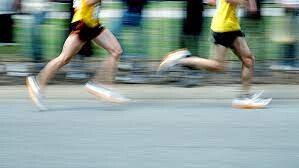
There was a time when I could go out on any given weeknight and run for three or four hours. But: life. Now I find myself having to balance running with family obligations, keeping a new dog from chewing up all my shoelaces, and doing work on a new home. And it’s so easy these days, especially with Strava and social media, to fall into a trap of comparing my own training to people putting in loads of miles in the Alps or the Rockies. But the reality is no matter what goals we runners are training for, we have to work with what we’ve got. A few years ago, when COVID shut down my local trails, I found myself turning to a few of these short segments, and ping-ponging from end to end purely because there was nowhere else to go. While it was not the most scenic running I’ve ever done, I found myself getting stronger physically and mentally. It turns out I inadvertently adopted a training concept known as “chunking” in place of doing big majestic loops.
By necessity, I found out that I train better when I take a big, ambitious goal and break it down into things that seem reasonable: Each run or workout chips away at the goal, taking something that at the outset seems like a massive weight and bringing it down to something more manageable, more recognizable—like a carver tapping away with a chisel. No matter how small of a hill you might have to train on, or even if you’re confined to a track, or maybe not running at all due to injury—even the smallest chip you can manage whittles away at that giant block.
Two hundred miles is of course an extreme example, but when I first started running, as with so many runners, even a single mile sounded impossible. Even if you start with just one minute of running, you are breaking down whatever bigger goal you might have. For me, on race day, no matter what distance I’m doing, as the miles add up and the legs and lungs burn, I know I can focus, just as I did in training, on hearing that next tap.
Pat Heine-Holmberg, Runner’s World’s Senior Video Producer, spends more time on trails in pursuit of going farther and higher than he does faster. PRs racked up during the 2023 Tor des Géants include earliest time to vomit (mile three), most ice cream eaten during a race (four bars), and worst night of sleep (an hour on the floor in an under-construction sports center).
(12/30/2023) ⚡AMP
by Runner’s World
Things you didn’t know about the Ottawa International Marathon
The Ottawa Marathon turns 50 in 2024, and there’s no better way to celebrate than to be a part of Canada’s largest and most historic spring marathon, which will take place on May 26. Through the years, the marathon has seen everything from warm temperatures to course records and Olympic dreams, not to mention all the Boston qualifiers. But there’s a lot you might not know about Canada’s capital city marathon.
1975: Only 3 women ran the first Ottawa Marathon
Ottawa has always been one of Canada’s premier running cities, and on May 25, 1975, a 42.2 km route was designed, starting and finishing at Carleton University. The race’s beginnings were modest, with only 146 runners finishing the inaugural marathon. Compared to recent registration numbers (30,000 plus), it’s next to nothing, but in 1975, it was already Canada’s biggest marathon.
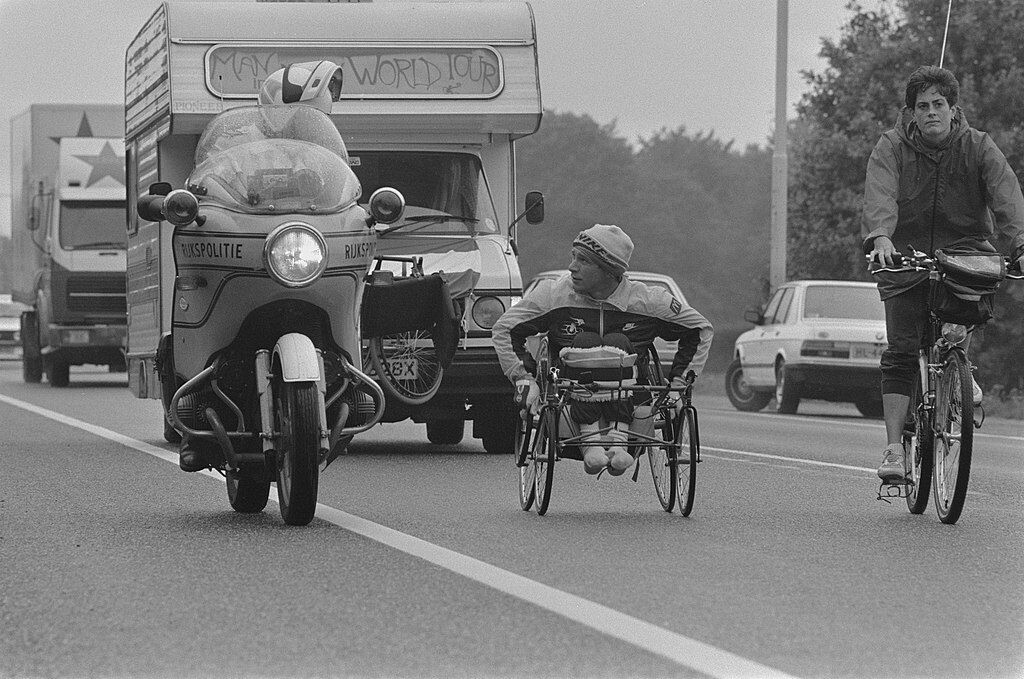
The race was called the National Capital Marathon and was won “by accident” by Quebec middle-distance runner Mehdi Jaouhar, who entered the race with his roommate. Only three of the 146 finishers were women.
1976: The Ottawa Marathon champion had lunch with the Queen
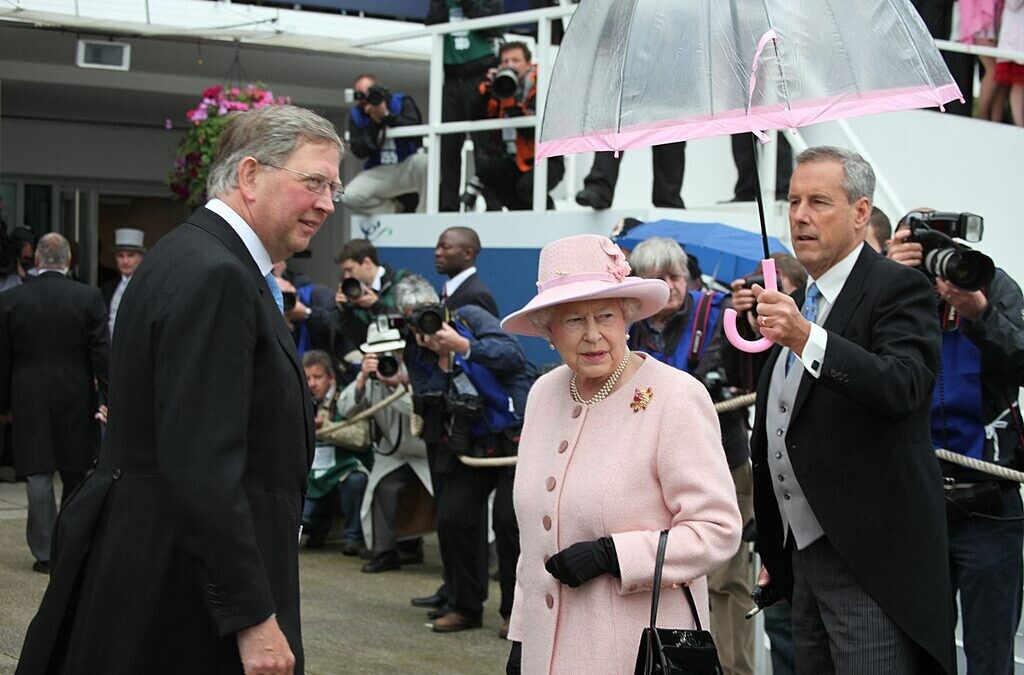
This year was a special one for athletics in Canada, as the country hosted the 1976 Summer Olympics (still the only Summer Olympics our nation has hosted to date). The marathon quadrupled in size from the previous year, and the stakes and competition rose accordingly. The race was selected as the location for the 1976 Olympic Trials for the Canadian marathon team, attracting some of Canada’s top marathoners.
Toronto’s Wayne Yetman set a new course record of 2:16:32, earning a spot on the Canadian Olympic team for Montreal. Also included in his Olympic moment was lunch with Queen Elizabeth. Eleanor Thomas won the women’s marathon for the second year in a row, yet she didn’t take in any water or electrolytes on the course. Thomas was a smoker at the time, and famously said “quitting smoking was harder than running a marathon.”
1983: Man in Motion Rick Hansen raced the Ottawa Marathon
In preparation for his famous Man in Motion World Tour, Rick Hansen won the inaugural wheelchair division at the Ottawa Marathon in 1983. Previously, wheelchair athletes competed in the open field. Hansen was the pioneer of the wheelchair division in Canada after winning gold, silver and bronze medals at the 1980 Paralympic Games. He became the first Canadian Para athlete to win the wheelchair division at the 1982 Boston Marathon.
Between 1985 and 1987, Hansen wheeled more than 40,000 kilometers around the world through 34 countries to raise awareness about people with disabilities. The world tour started and ended on the Port Mann Bridge in Vancouver.
1986: The marathon almost ended
After a major decline in numbers in 1984 and 1985, race organizers and the board of directors voted to cancel the event. The marathon faced new competition with the Montreal Marathon earlier in the spring, and Ottawa was having trouble attracting sponsors. However, after the cancellation announcement new sponsors emerged and organizers were able to move forward and add a 10K race.
The first Ottawa 10K attracted just fewer than 1,000 participants, but by 1988, that number doubled and continues to grow today as the premier event on Saturday of Ottawa Race Weekend.
4: Montreal’s Jean Lagarde won 4 straight marathons between 1993 and 1996
Lagarde had come to Ottawa to cheer on his friend in the marathon, but when he got there, the friend persuaded him to sign up. Lagarde thought, “Why not?” By eight kilometres, Lagarde was out front and on his own, and he held on to win his first of four straight Ottawa Marathons. Lagarde trained for the marathon by running 35 km every Sunday.
Lagarde’s best time in Ottawa was in 1994, when he ran 2:19:00. He also holds another impressive record, winning both the warmest and the coldest Ottawa Marathon to date (25 C and 1 C). Keep in mind that the date of the marathon at the time was the second week of May. He is still the only man to win four consecutive Ottawa Marathons.
Russian-Canadian runner Lioudmila Kortchaguina has also won the marathon four times, holding the record for the most women’s titles. She has raced the Ottawa Marathon more than 20 times, and she was the last Canadian woman to win (in 2007) until Kinsey Middleton won in 2022.
1995: The race weekend had an inline skating race
To boost registration numbers and add a Canadian twist to Ottawa Race Weekend, organizers held the inaugural inline skating 8K at the 1995 Ottawa Marathon. Hundreds of participants signed up with their skates, gloves and helmets to skate a timed portion of the course.
The inline 8K race didn’t last long; it was canceled the next year due to frosty conditions.
1998: Ottawa was the first Canadian marathon to have pace bunnies
Where did pace bunnies come from? Well, the Chicago Marathon was the first race to implement pace bunnies in North America. After Hilda Beauregard of Ottawa participated in the 1997 Chicago Marathon, she noticed that the race had provided pace bunnies in the mass field to help runners achieve their goal times. The runner brought the idea back to Ottawa, and the 1998 Ottawa Marathon became the first Canadian marathon to use pace bunnies.
Every year since, pace bunnies have been a regular component of the marathon, wearing caps with rabbit ears while holding marked signs with the projected finishing time, helping runners hit their goals.
1996: There was a blizzard during the marathon
Though temperatures are typically warm for the Ottawa Marathon, which is in late May, there was snow for the 1996 race. Four thousand runners experienced below-zero temperatures and 35 km/h winds, with snow squalls. The 1996 race still stands as the coldest marathon in the event’s history.
2010: Paralympian Rick Ball achieved a single-leg amputee marathon world record in Ottawa
At the 2010 Ottawa Marathon, Rick Ball of Orillia, Ont., became the first single-leg amputee athlete to run a sub-three-hour marathon. Ball clocked 2:57:48 to break the world record. He held onto that record for seven years, until it was broken in 2017 by Lebanon’s Eitan Hermon at the 2017 Vienna Marathon, who finished in 2:56.53.
49 years of Ottawa Marathons
Ottawa’s Howard Cohen has completed his local race every year since the inaugural marathon in 1975. The retired physician has never missed a race, overcoming various challenges such as the 30 C heat threat that almost canceled the marathon in 2016, enduring a snowstorm in 1996, and even completing the 42.2K race with canes due to a torn hamstring injury.
Cohen has consistently found a way to make it to the start line and cross the finish. At 73, he has participated in the event virtually for the past four years, with his last in-person race dating back to 2019. Cohen was the first runner to register for the 2024 Tartan Ottawa International Marathon virtually, which will mark his remarkable 50th race.
(12/29/2023) ⚡AMPby Marley Dickinson
Ottawa Marathon
As one of two IAAF Gold Label marathon events in Canada, the race attracts Canada’s largest marathon field (7,000 participants) as well as a world-class contingent of elite athletes every year. Featuring the beautiful scenery of Canada’s capital, the top-notch organization of an IAAF event, the atmosphere of hundreds of thousands of spectators, and a fast course perfect both...
more...







